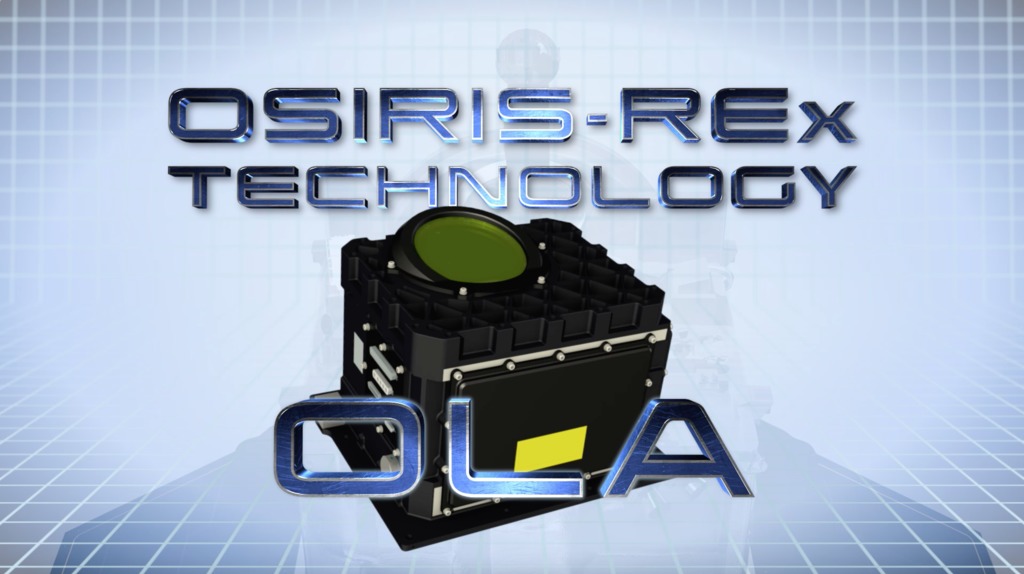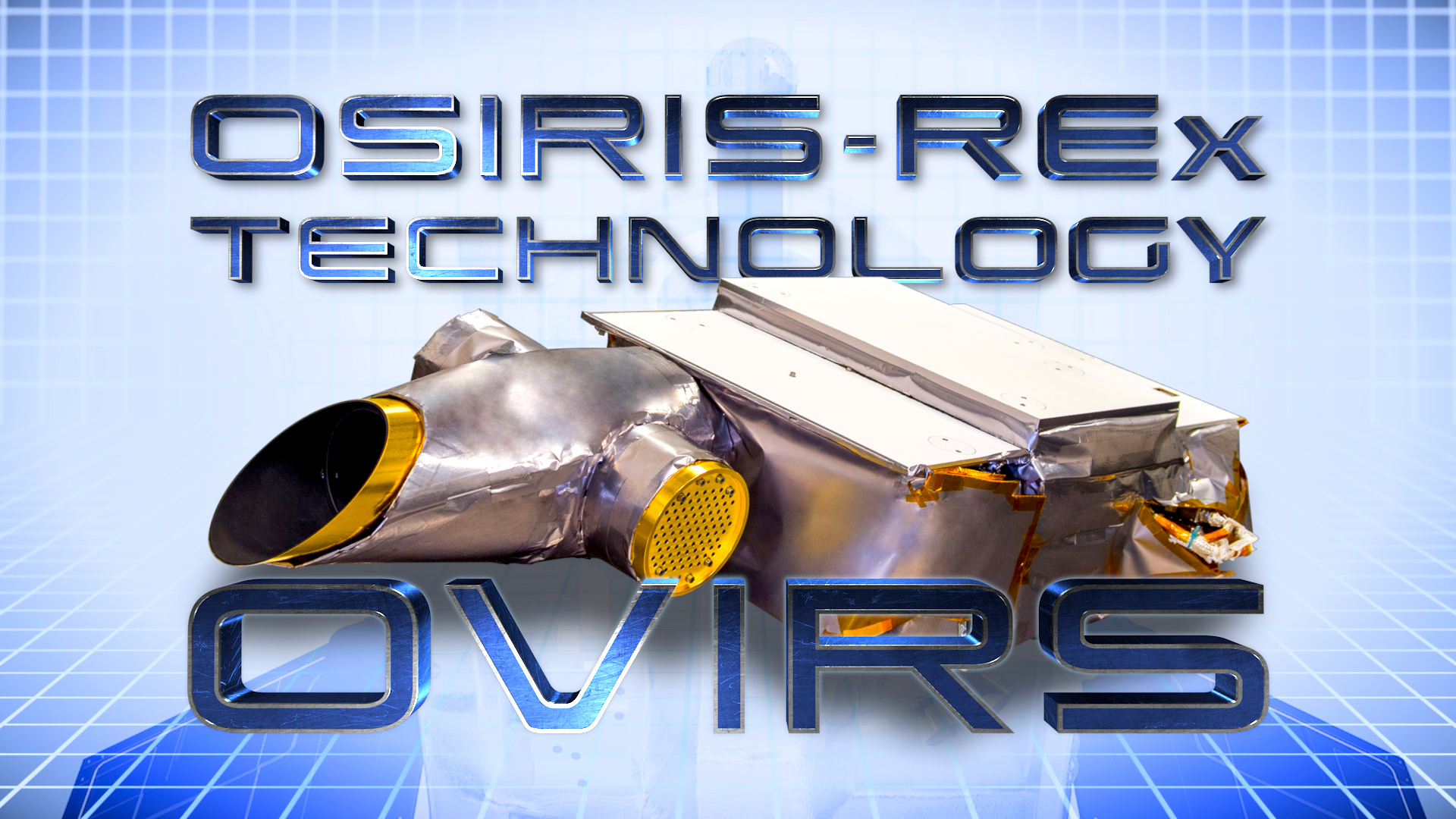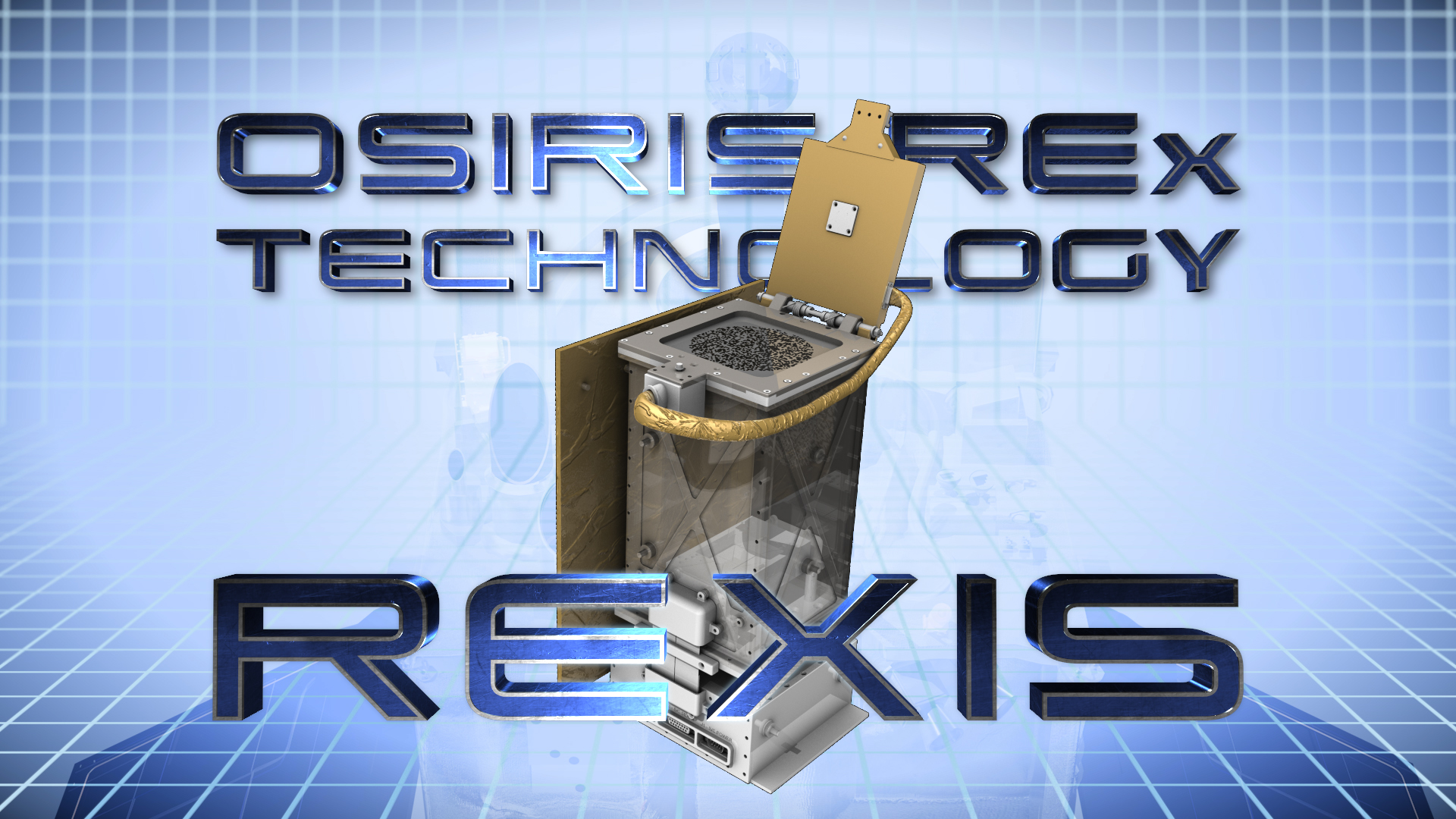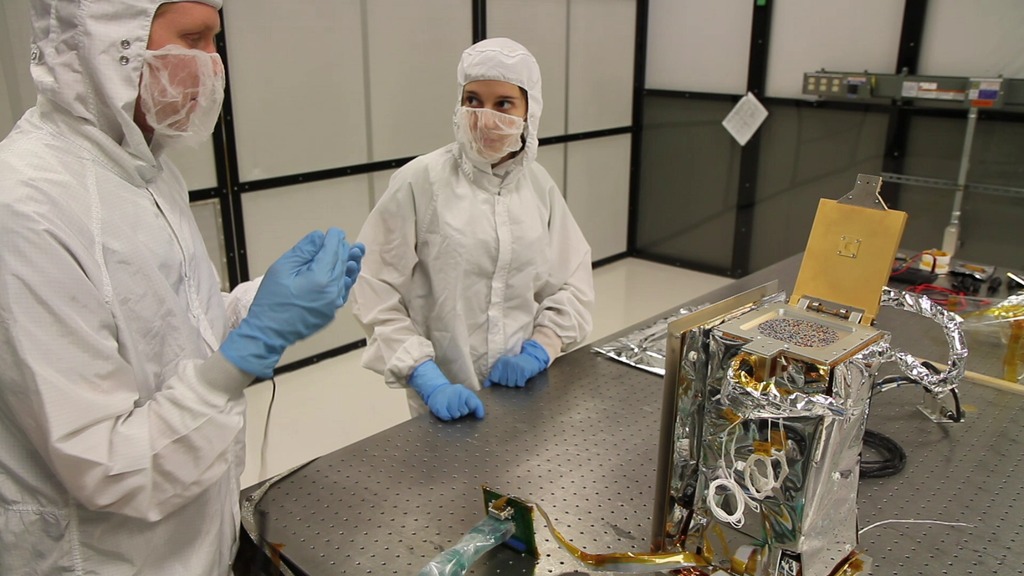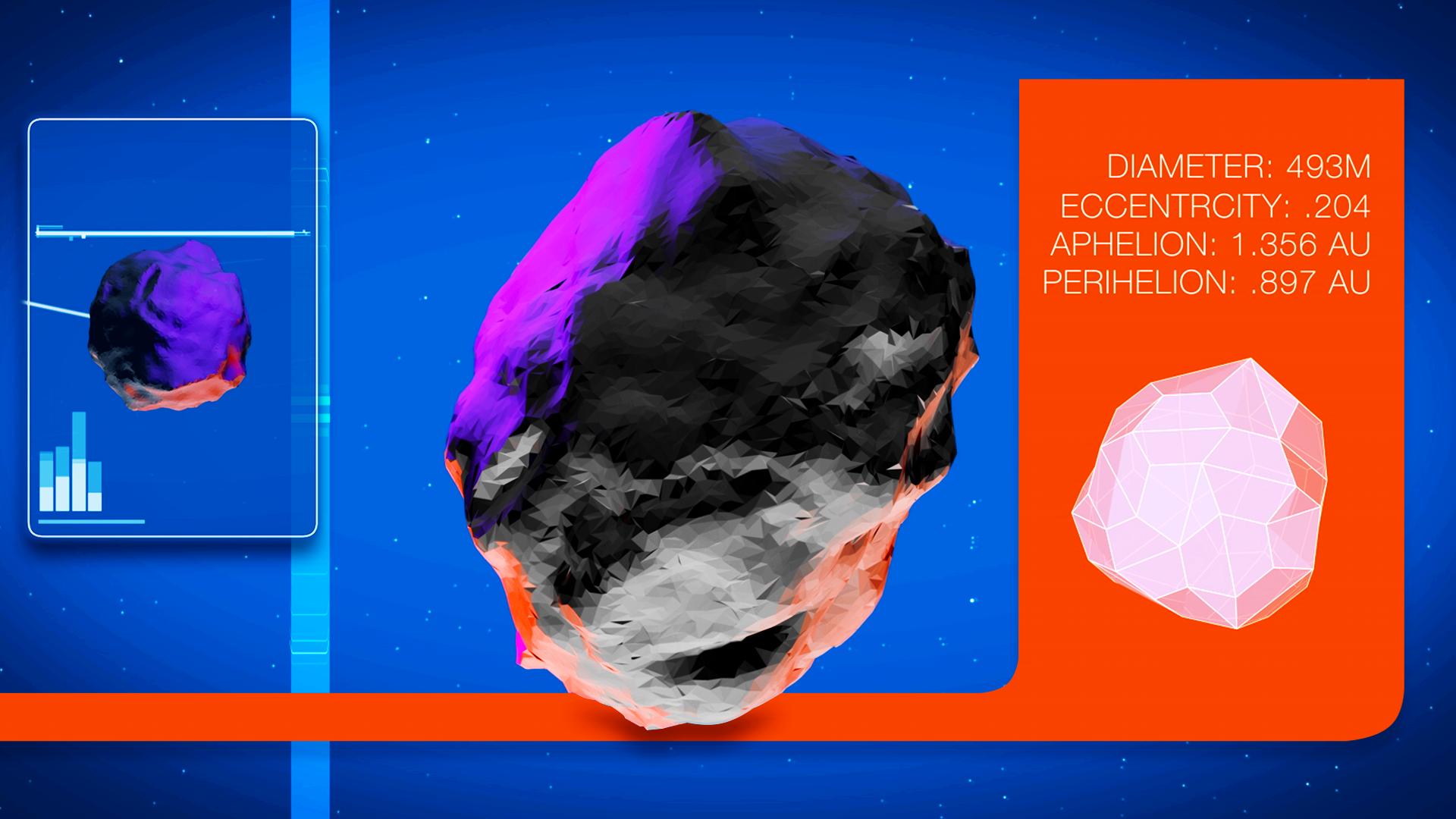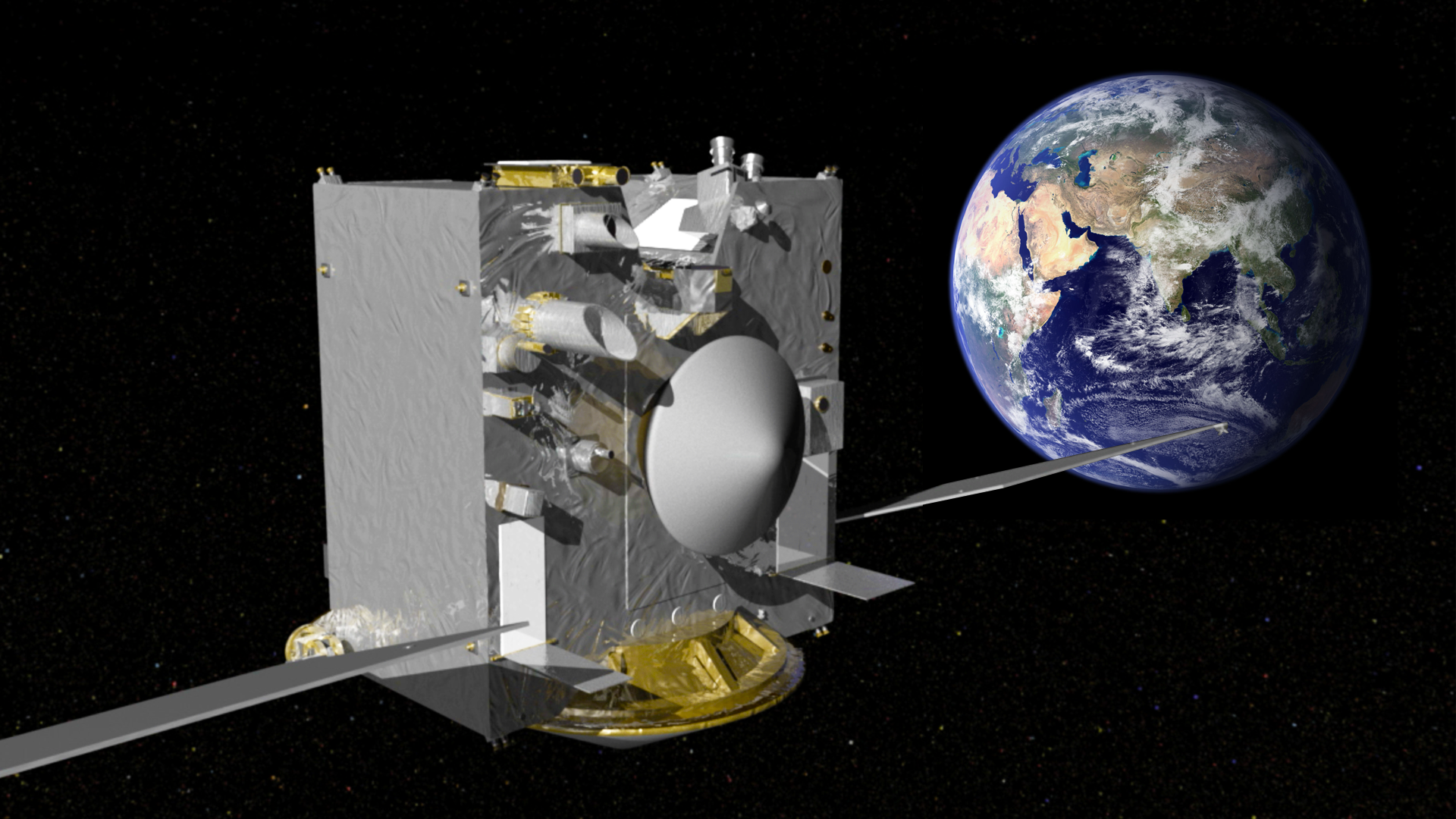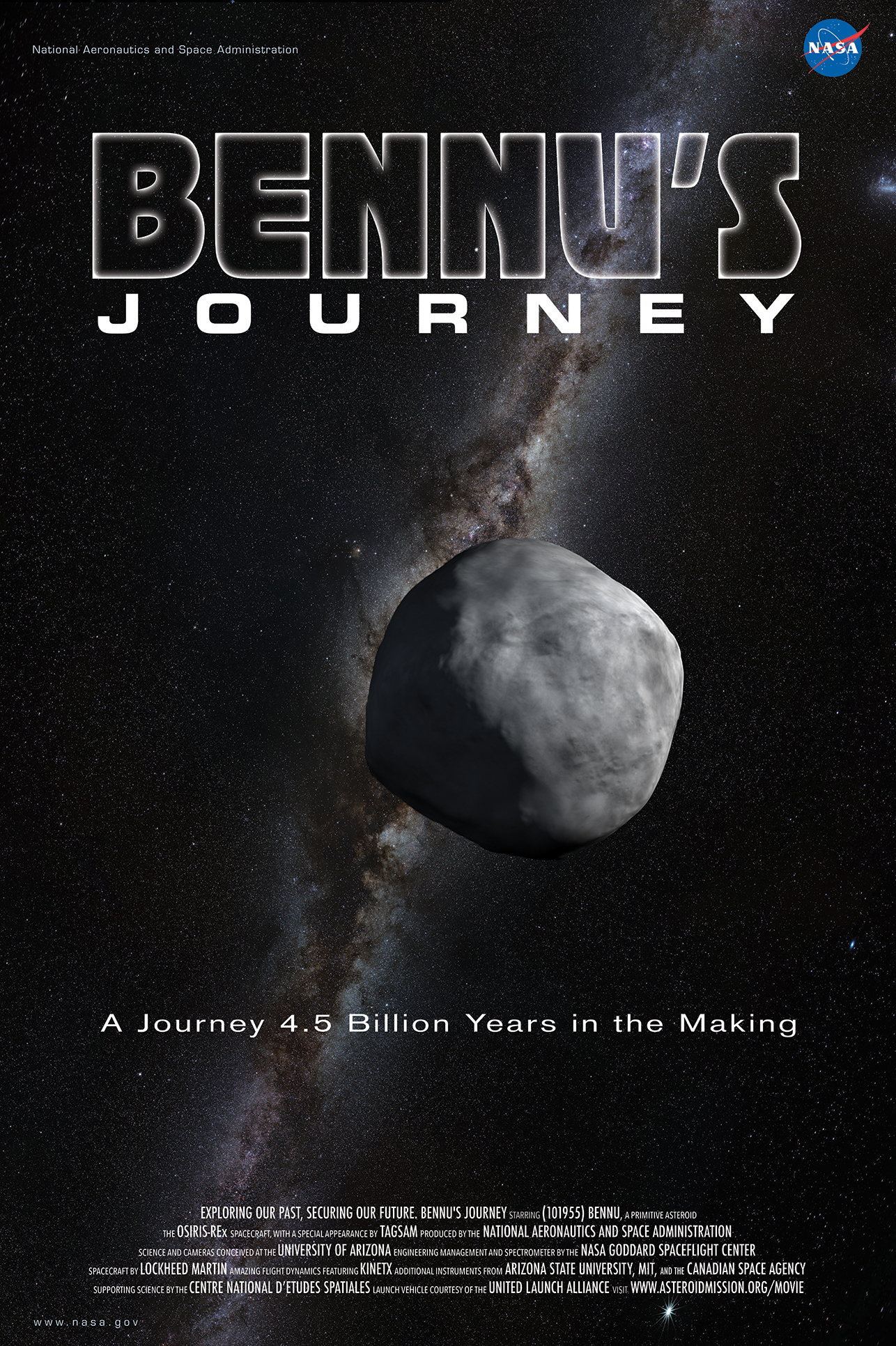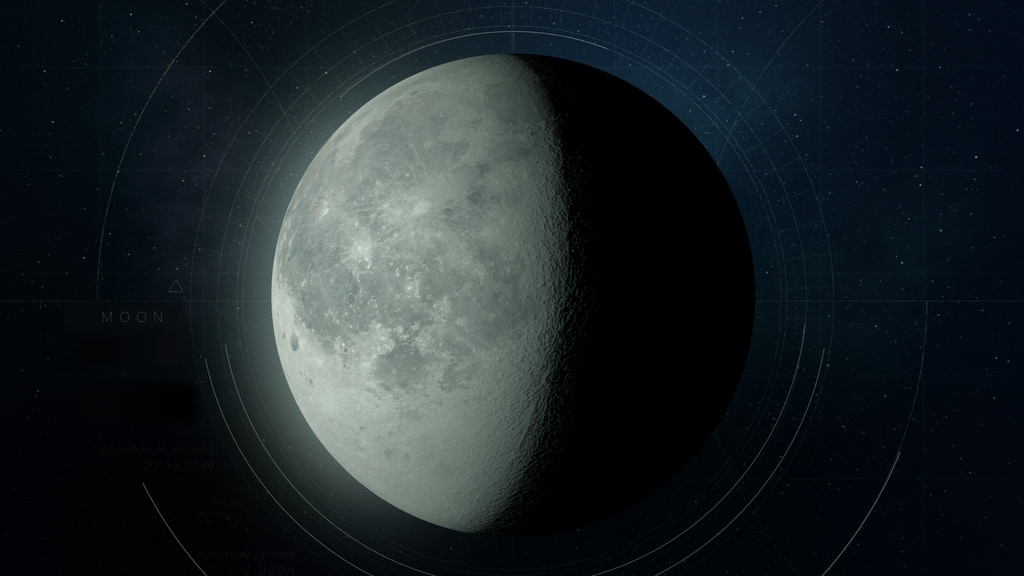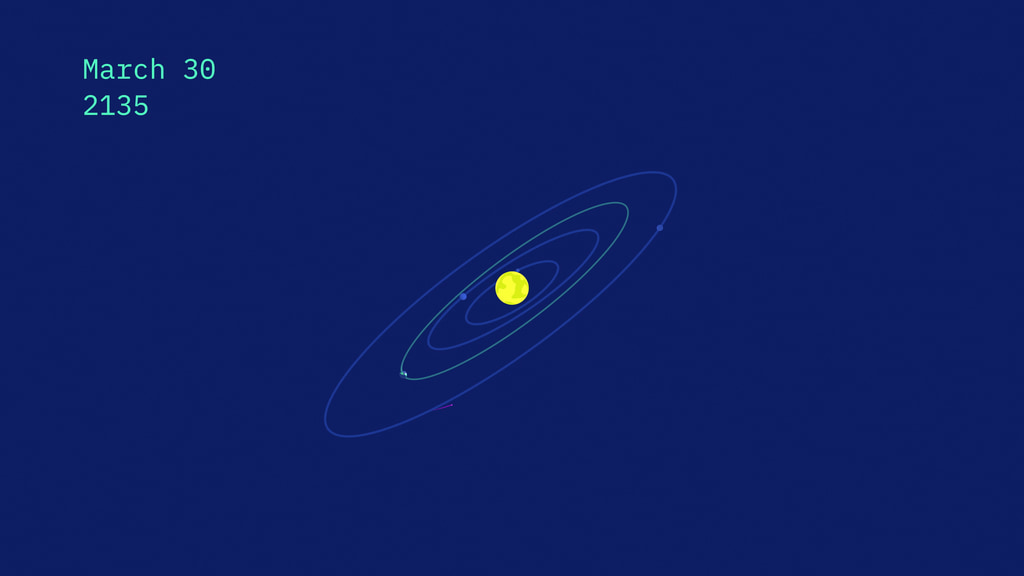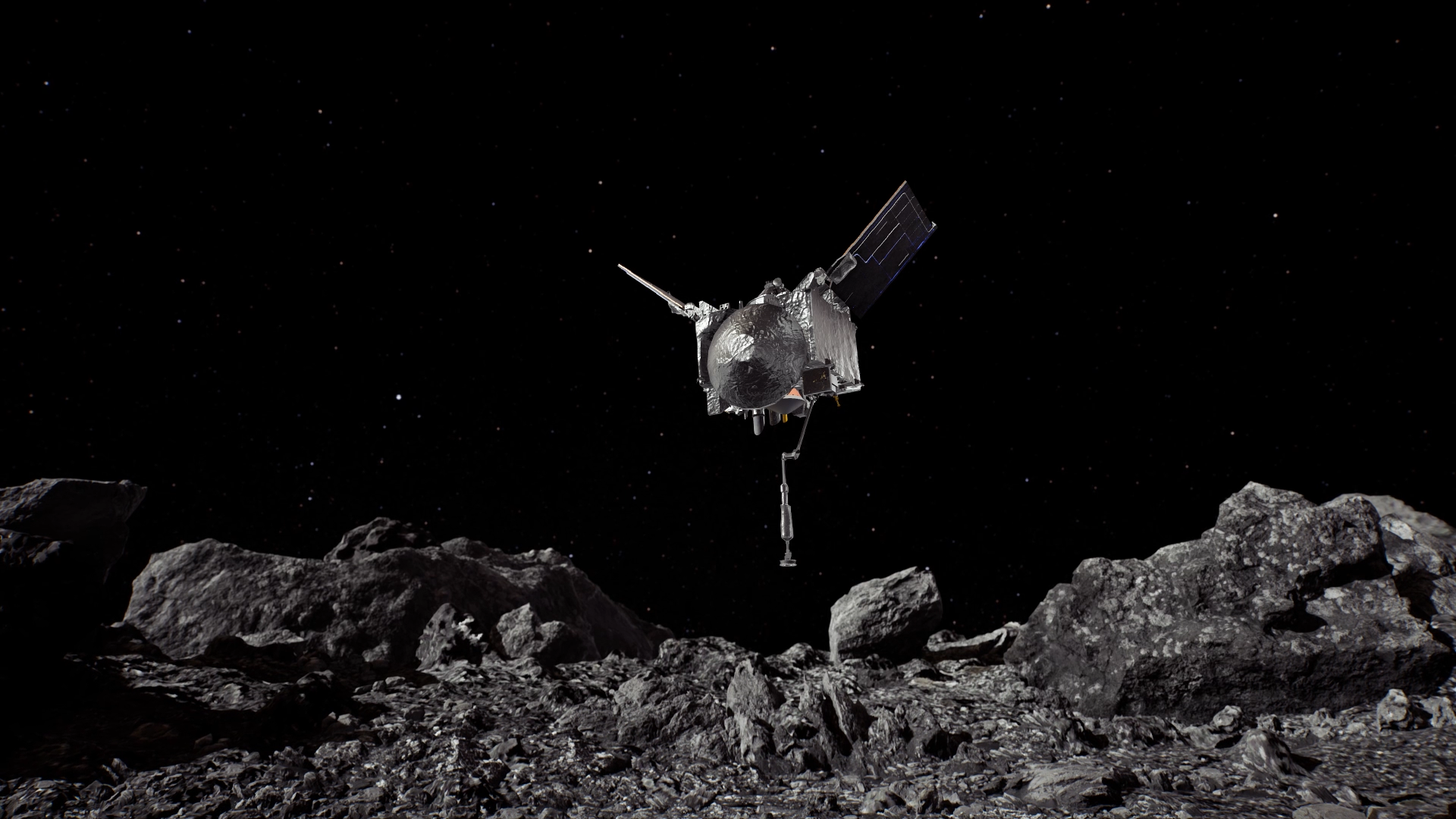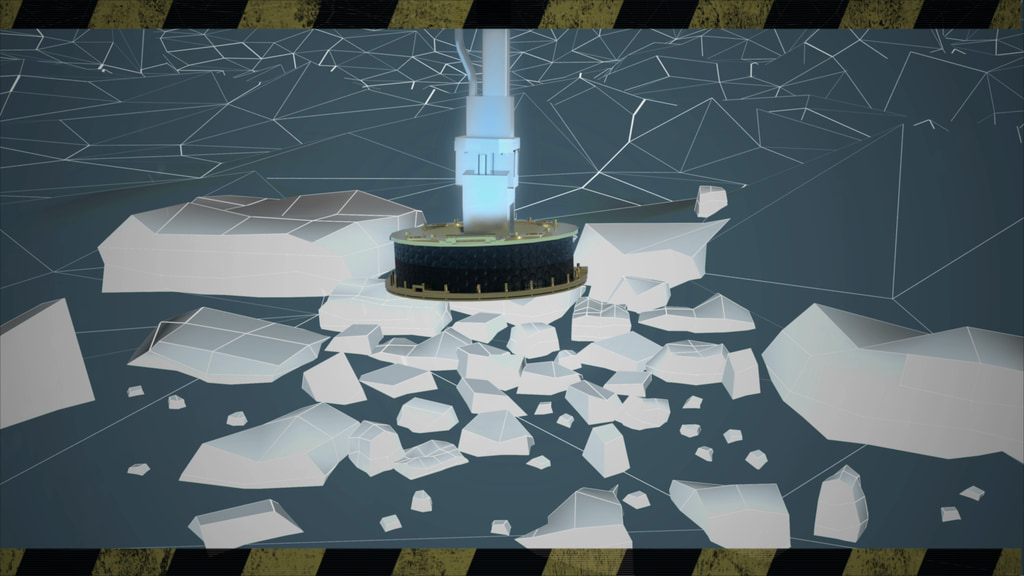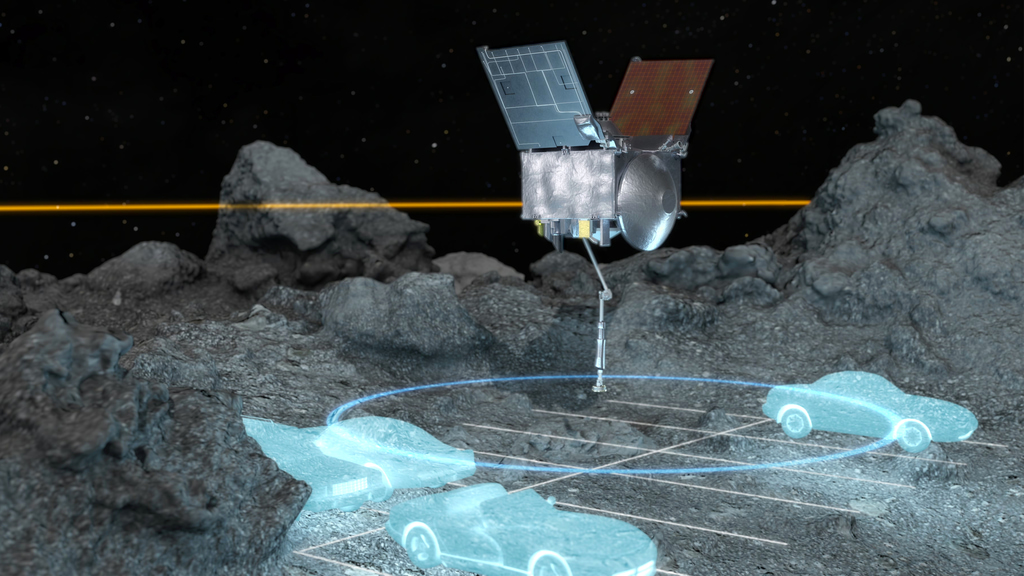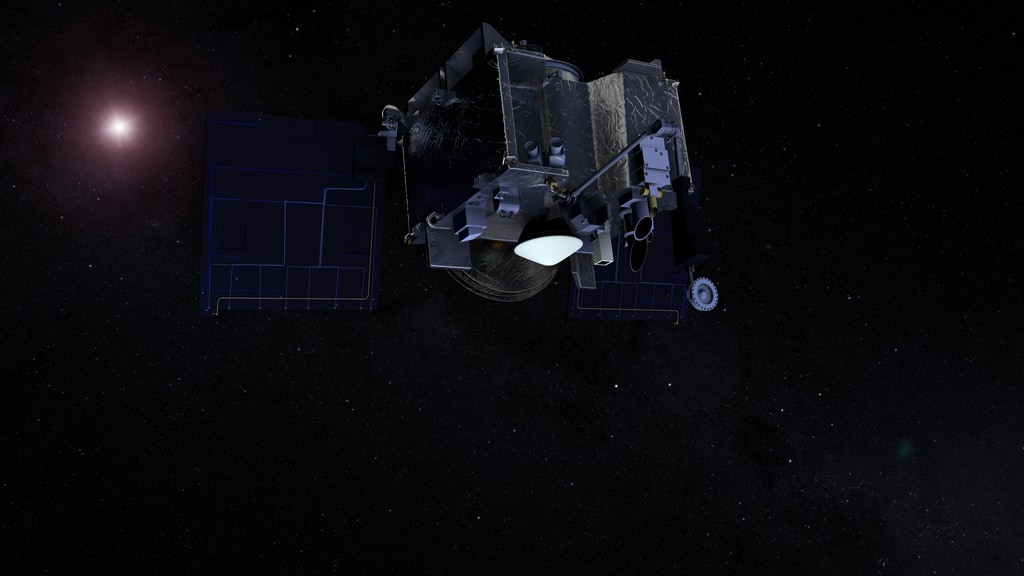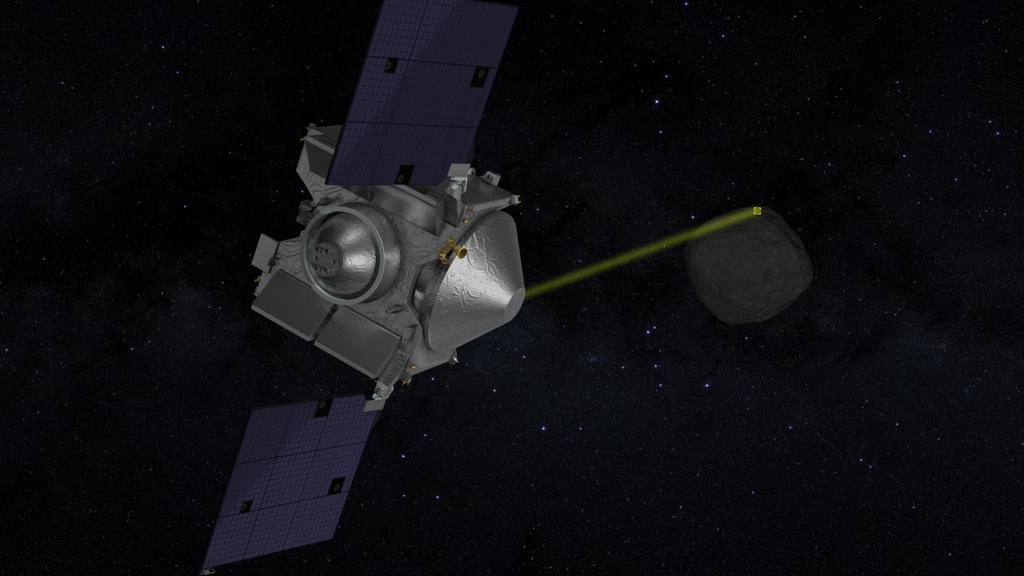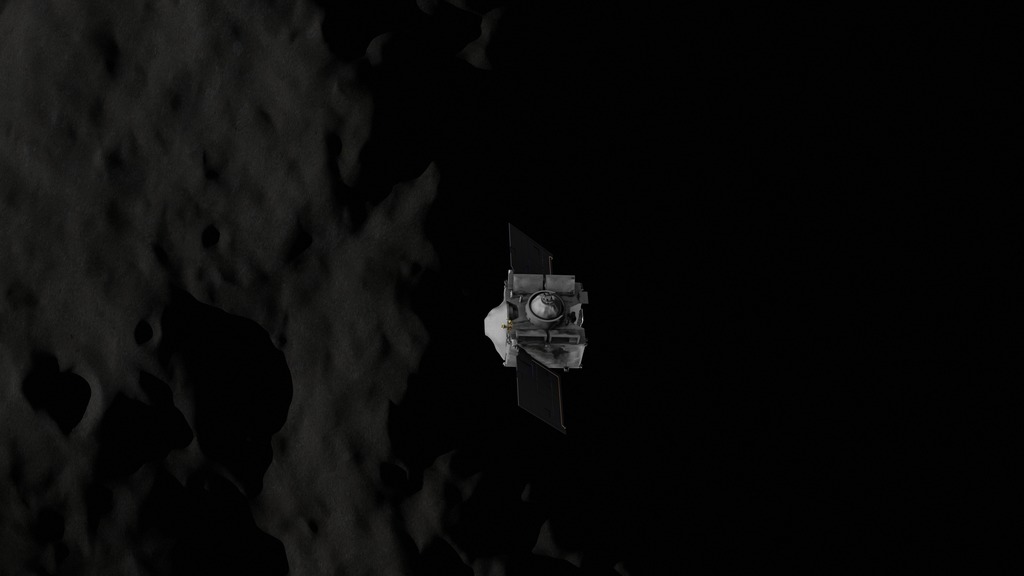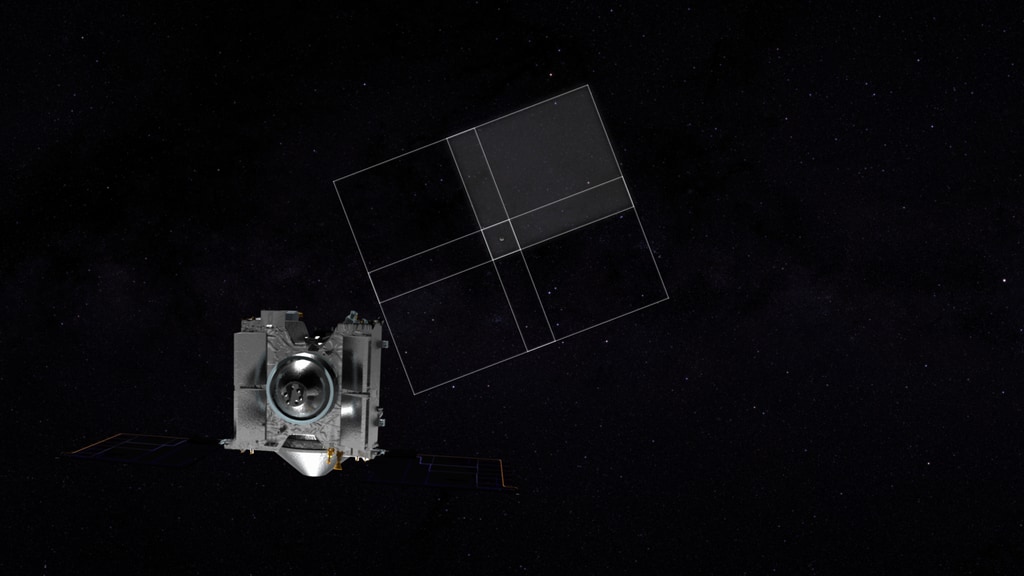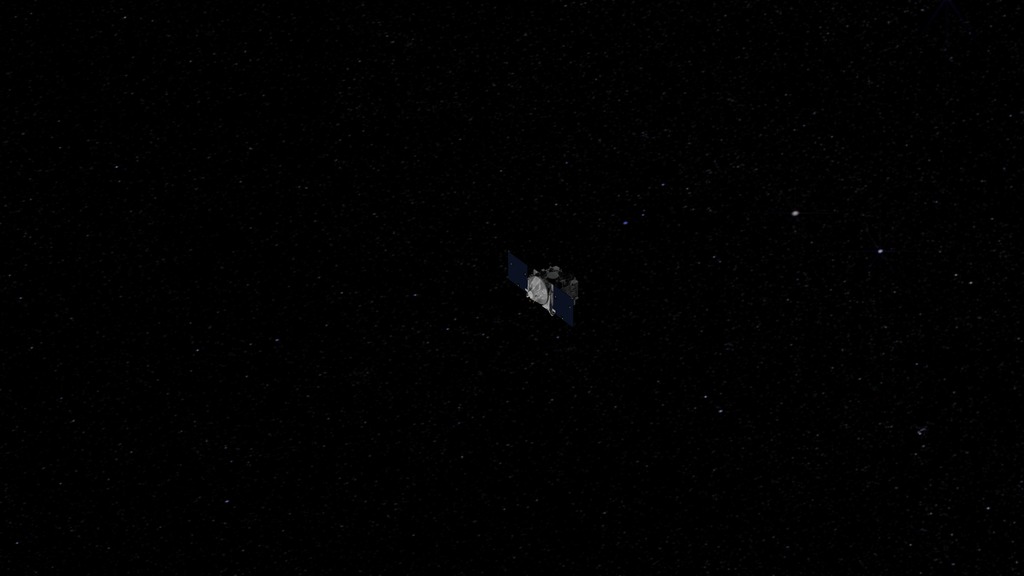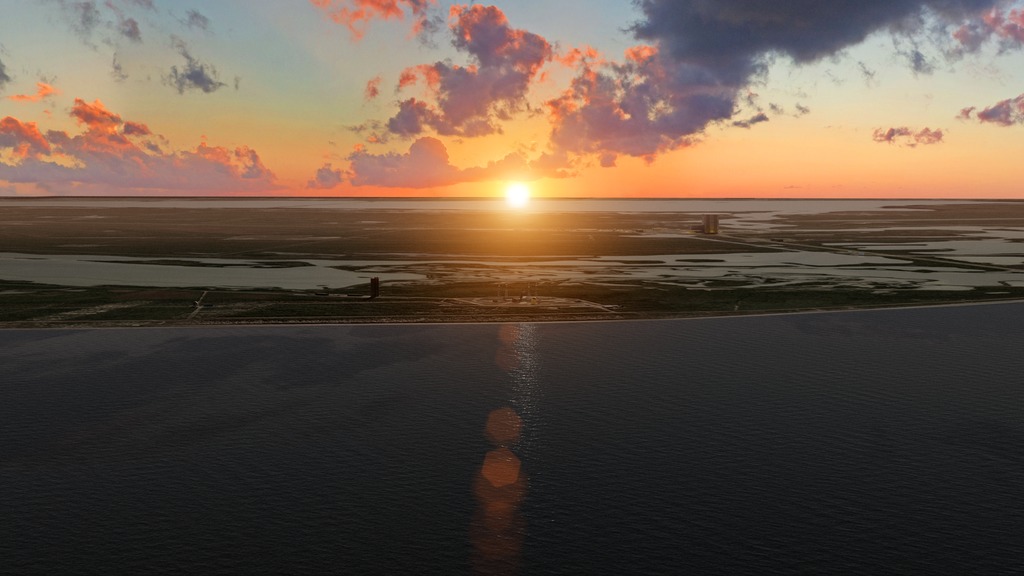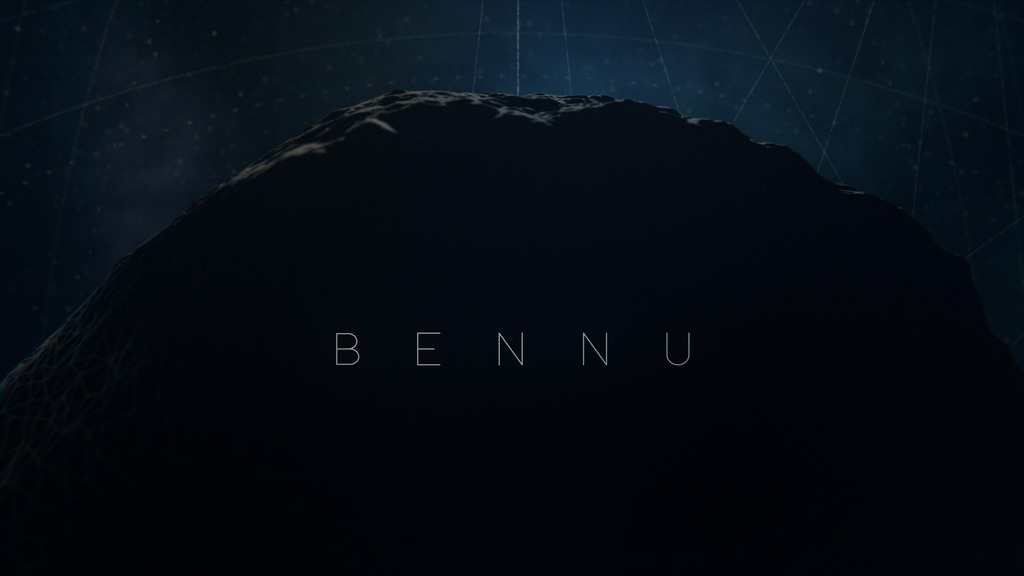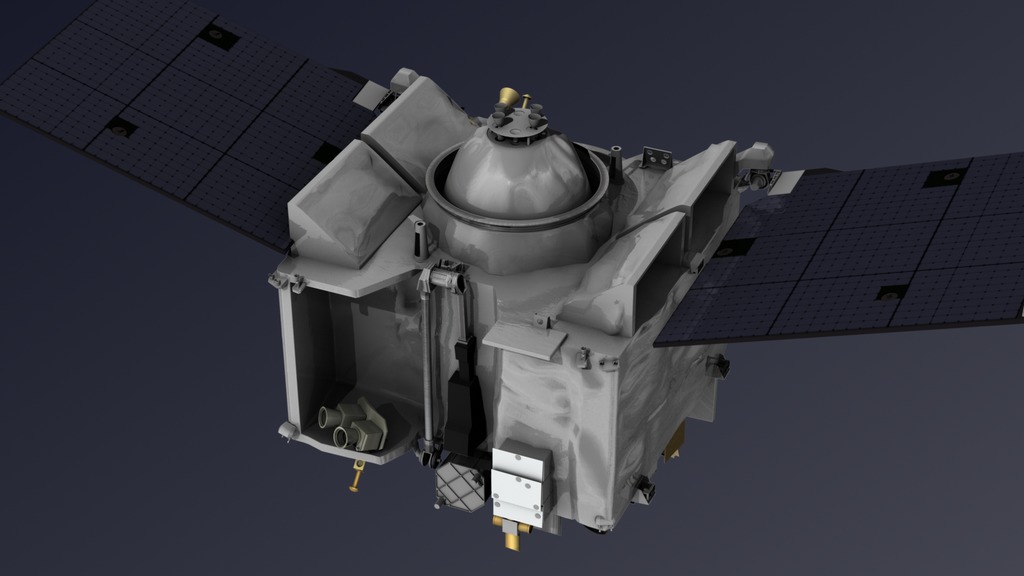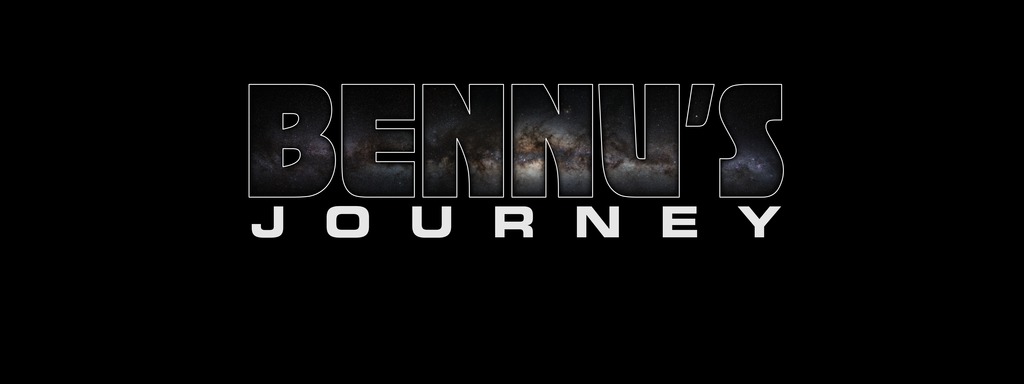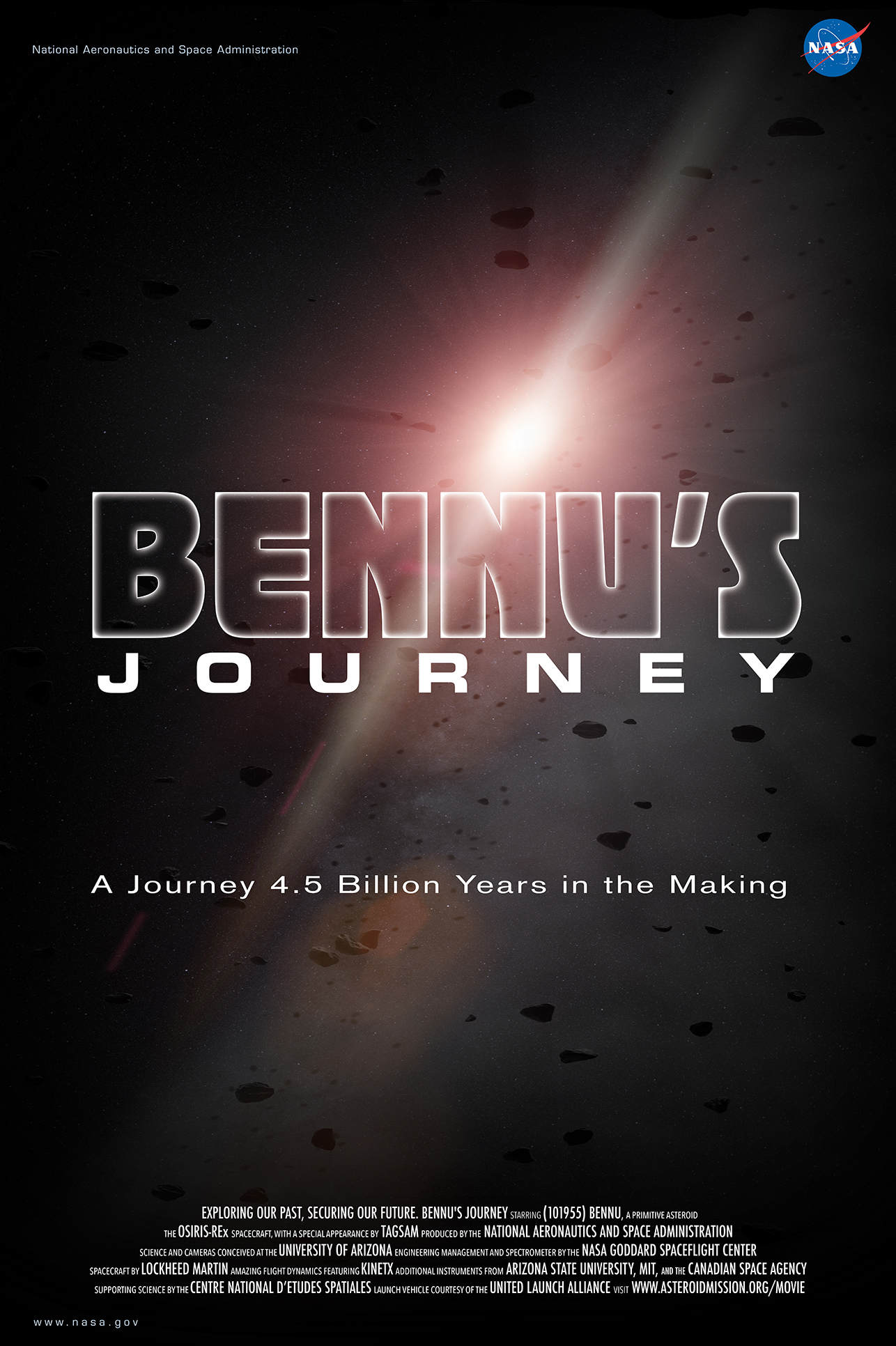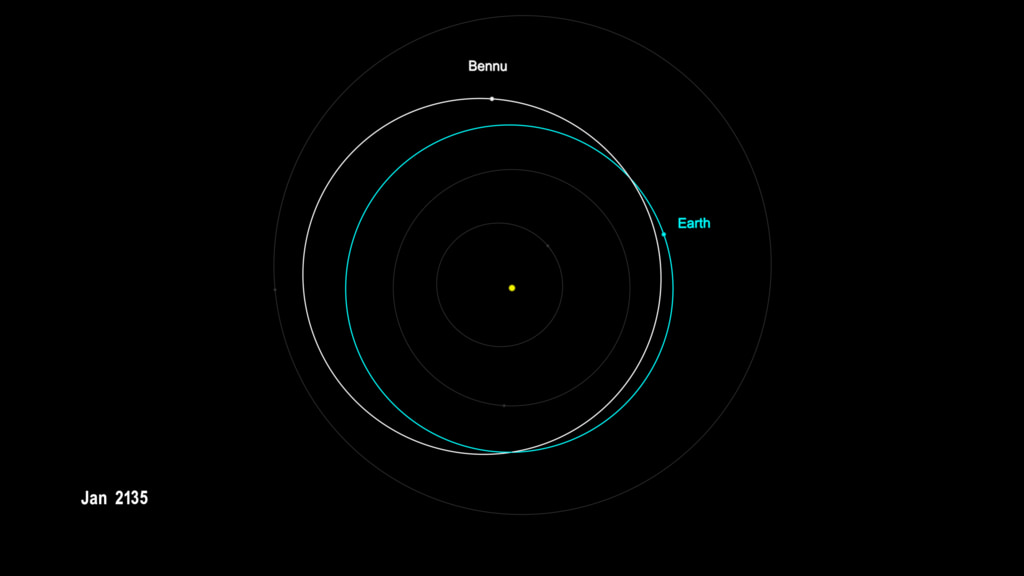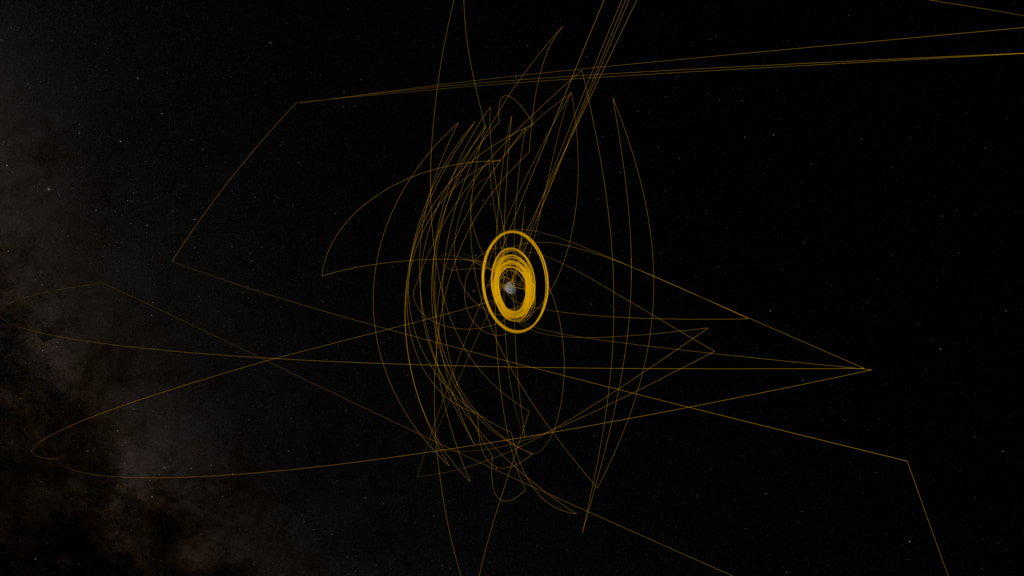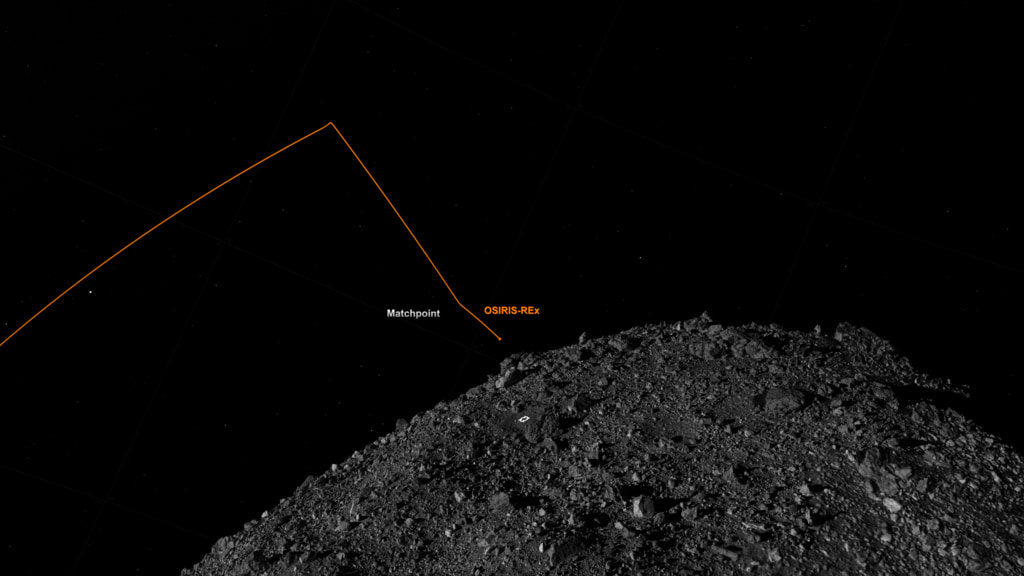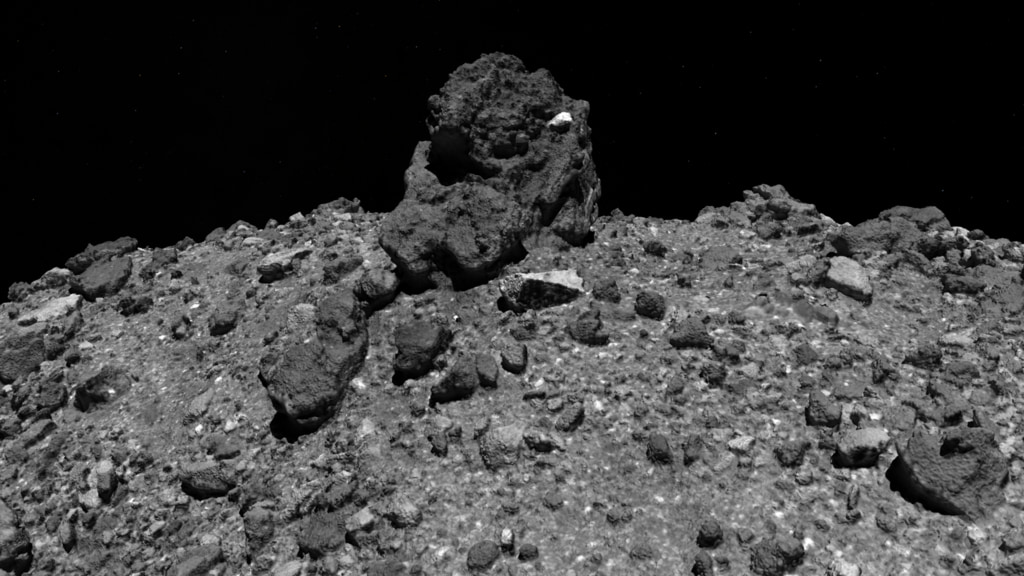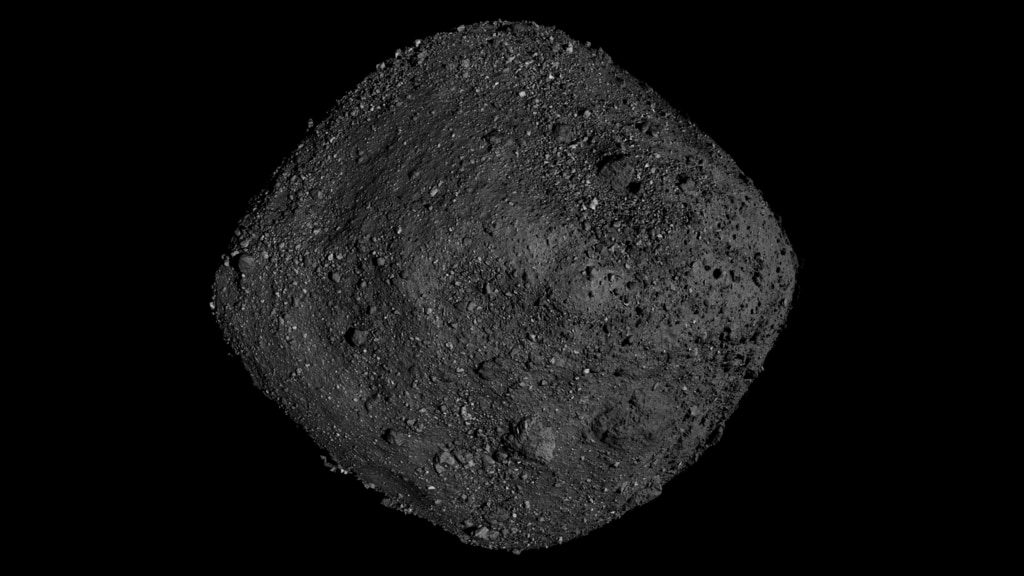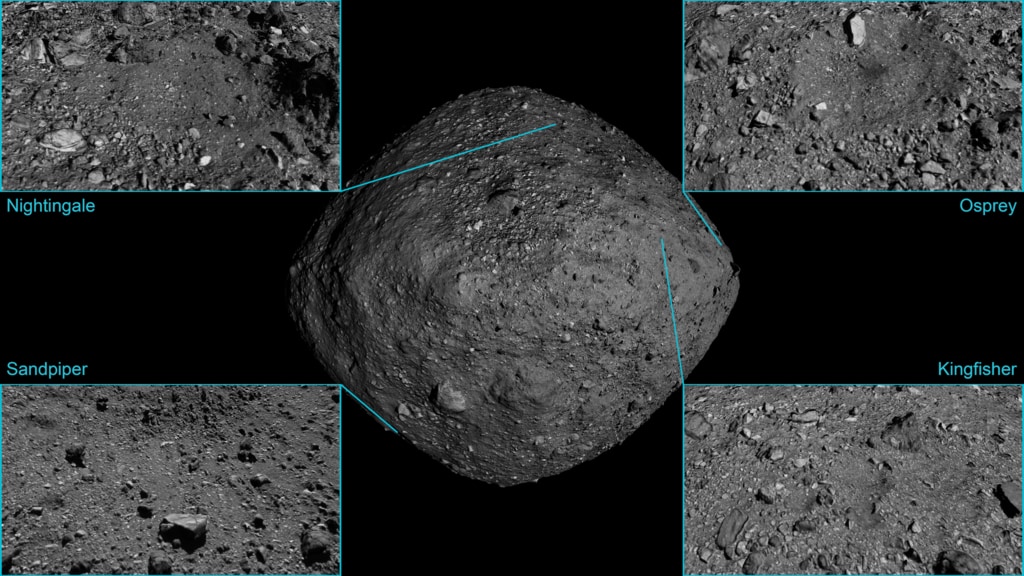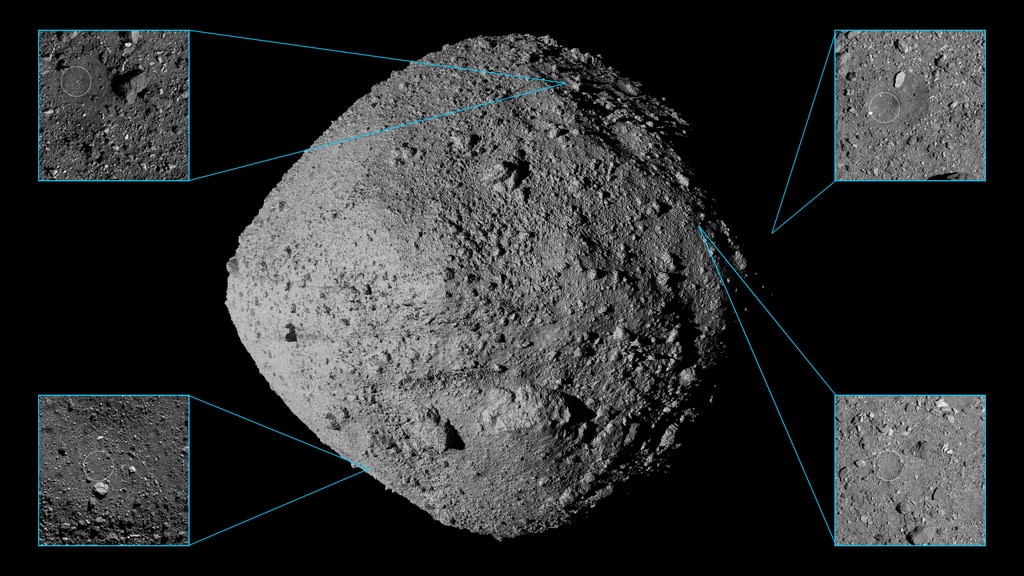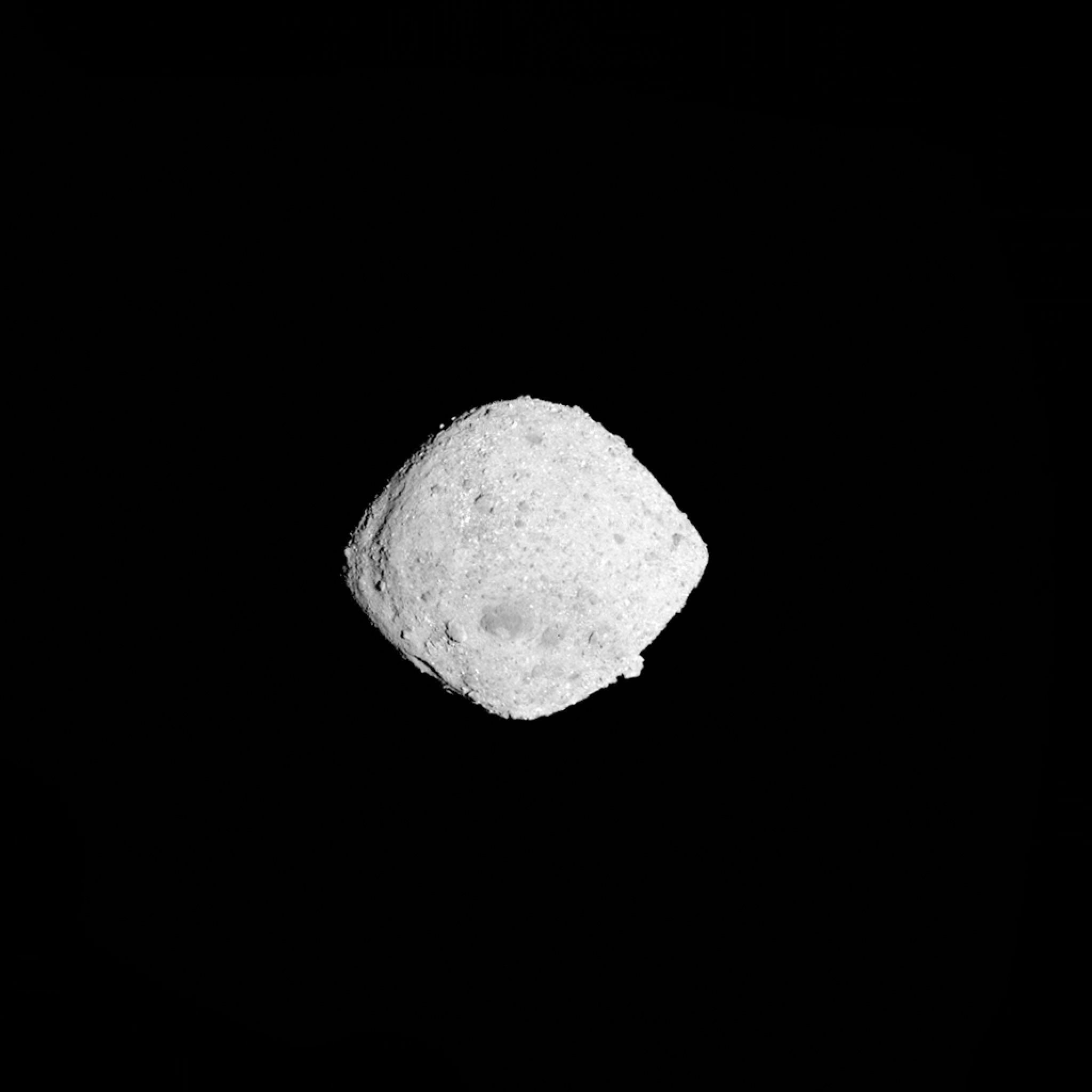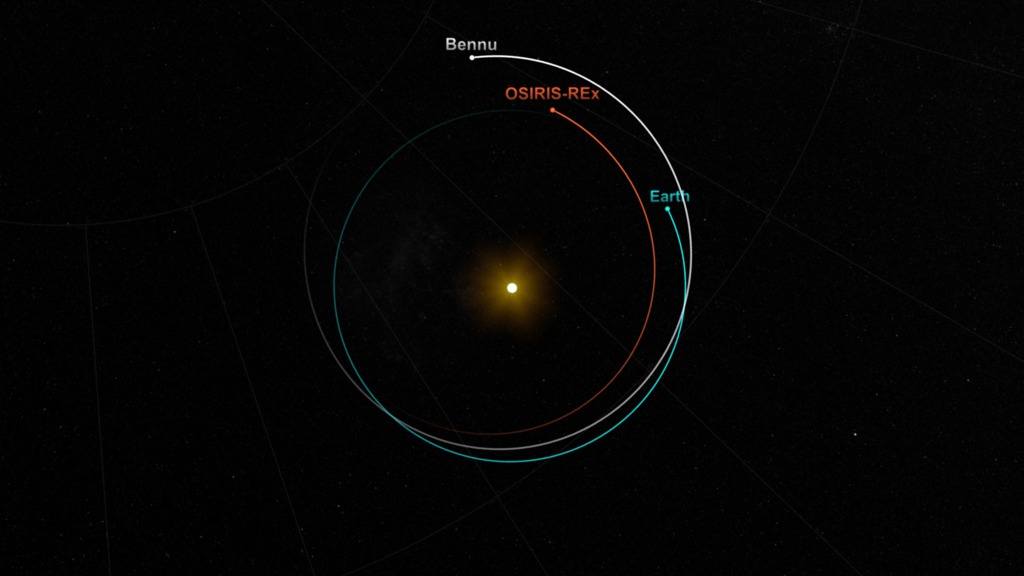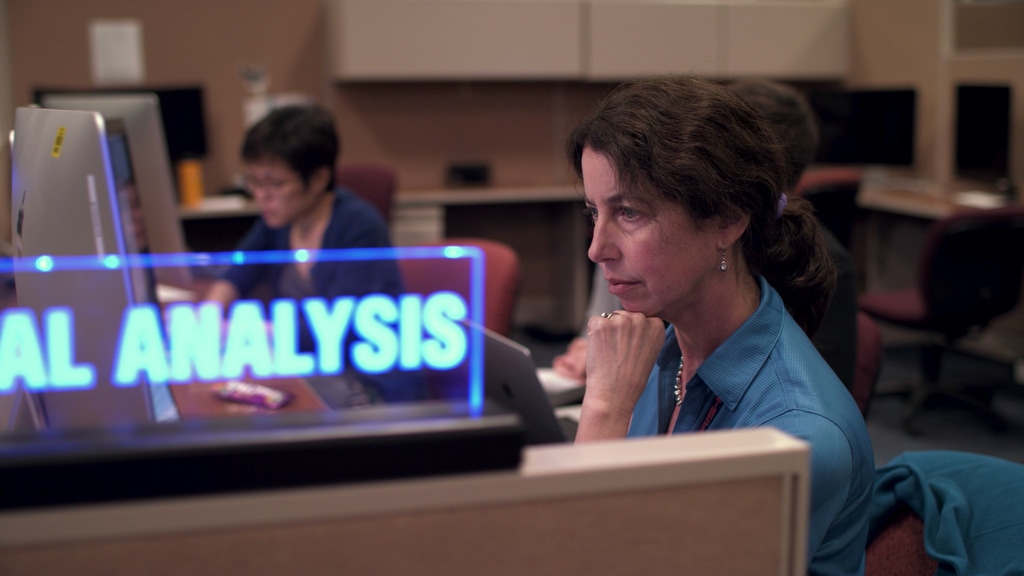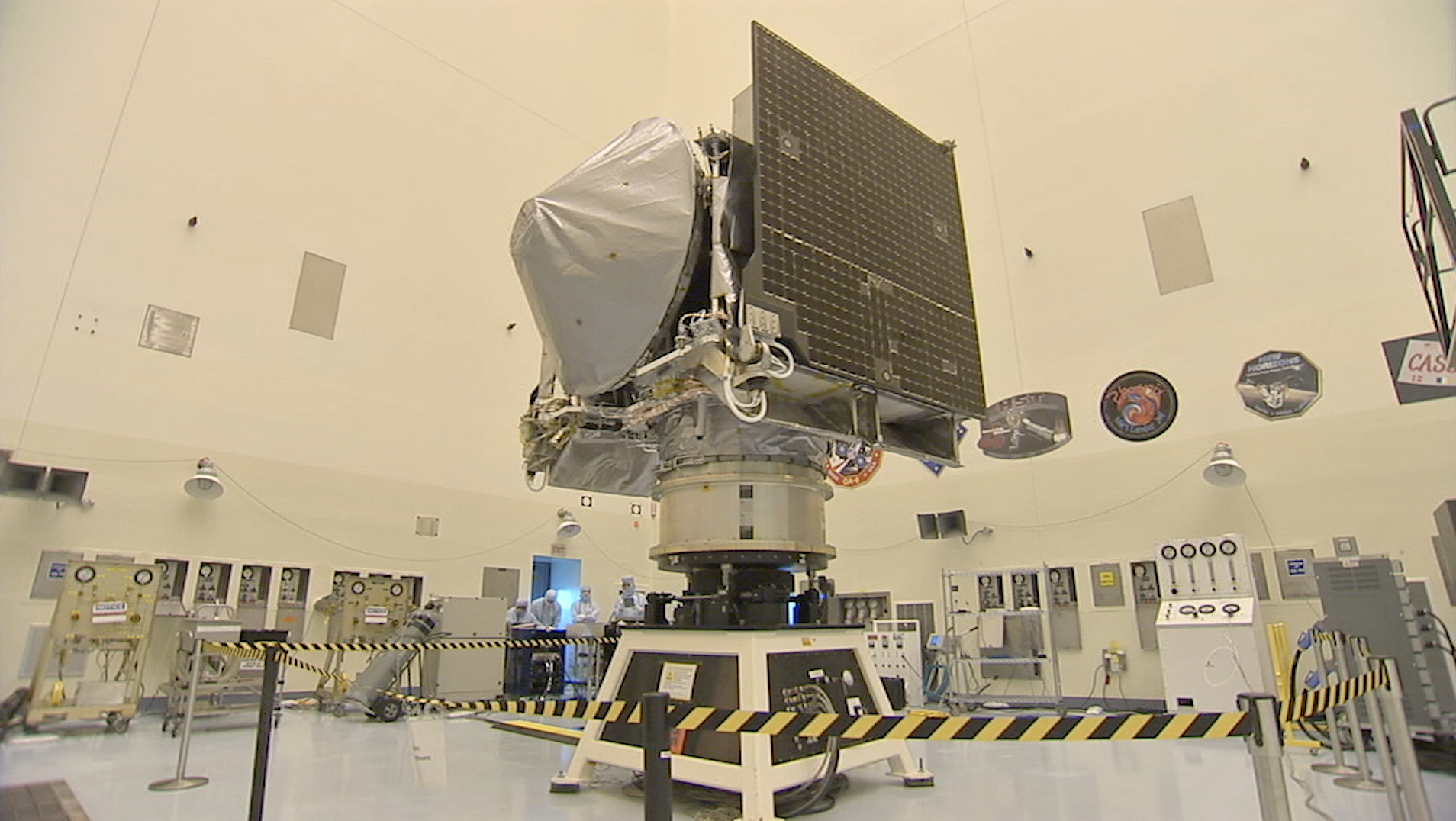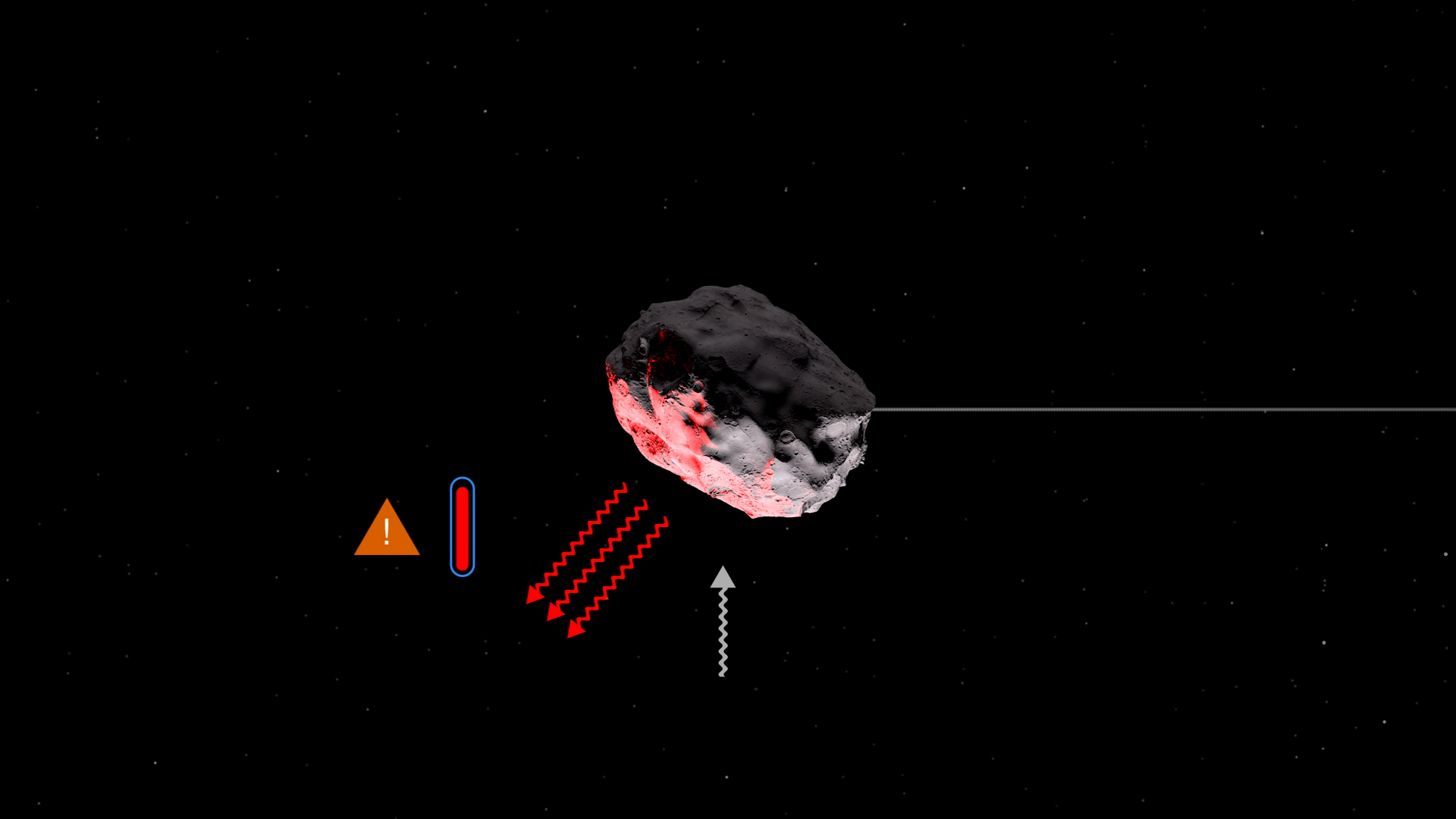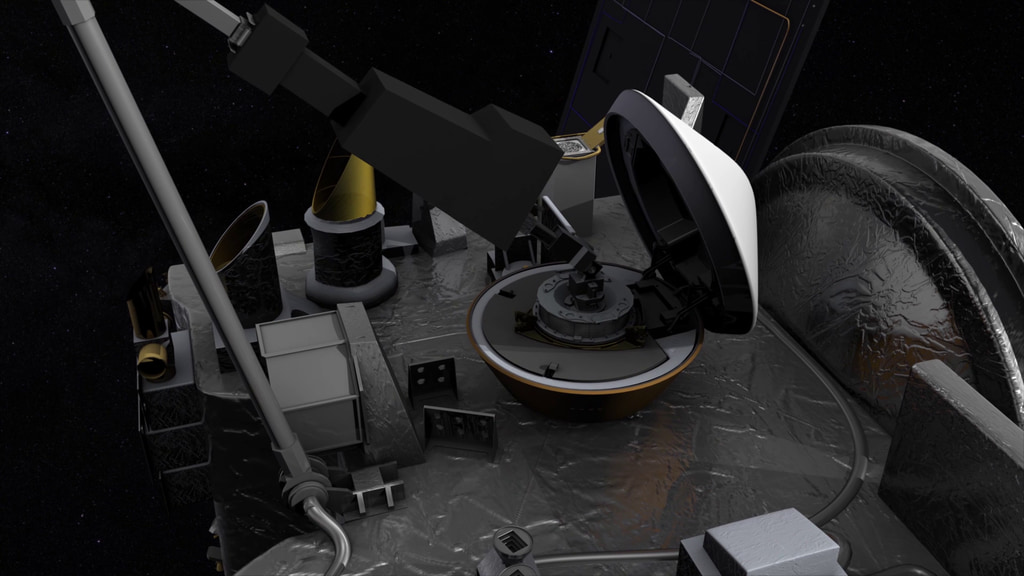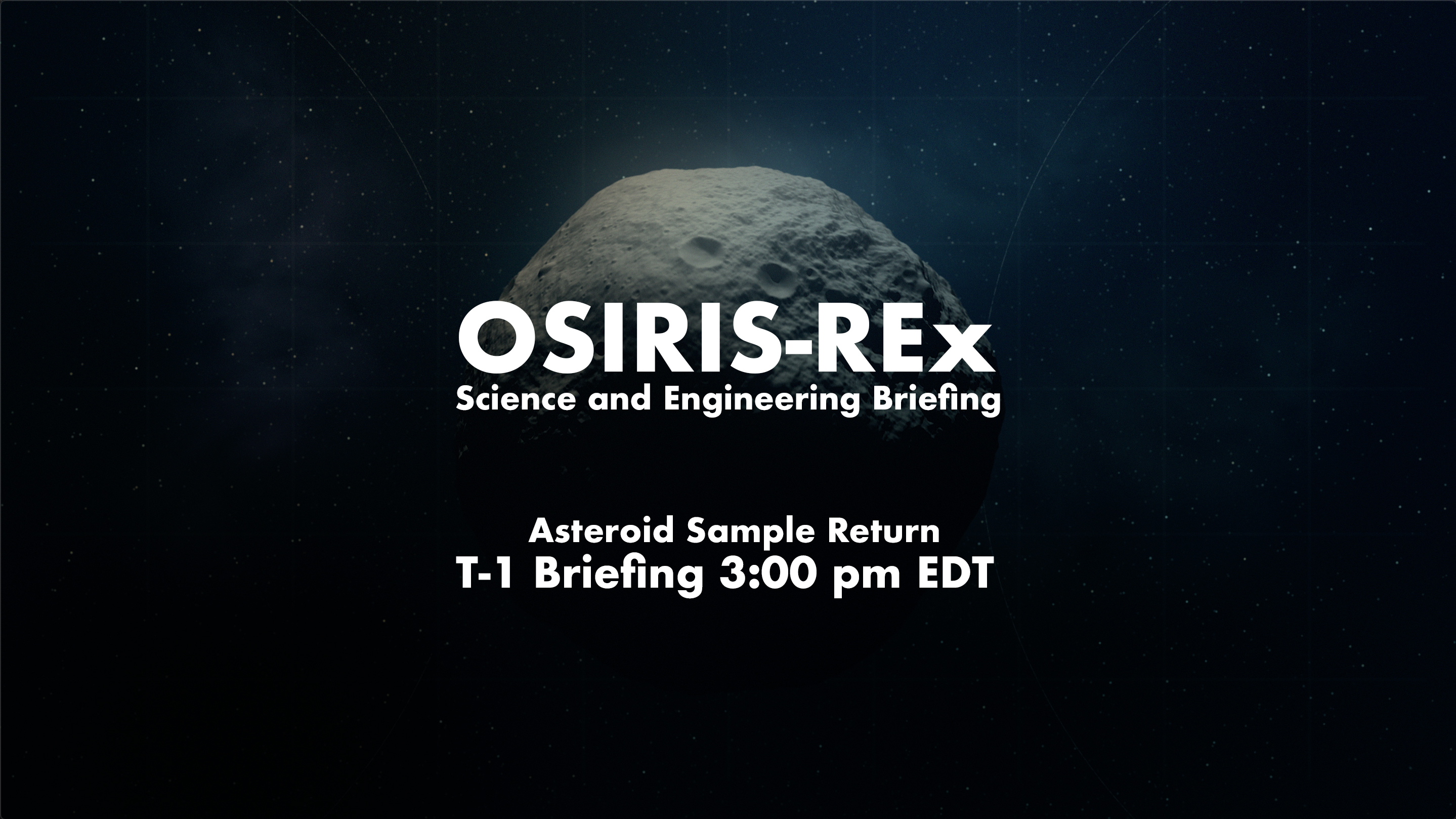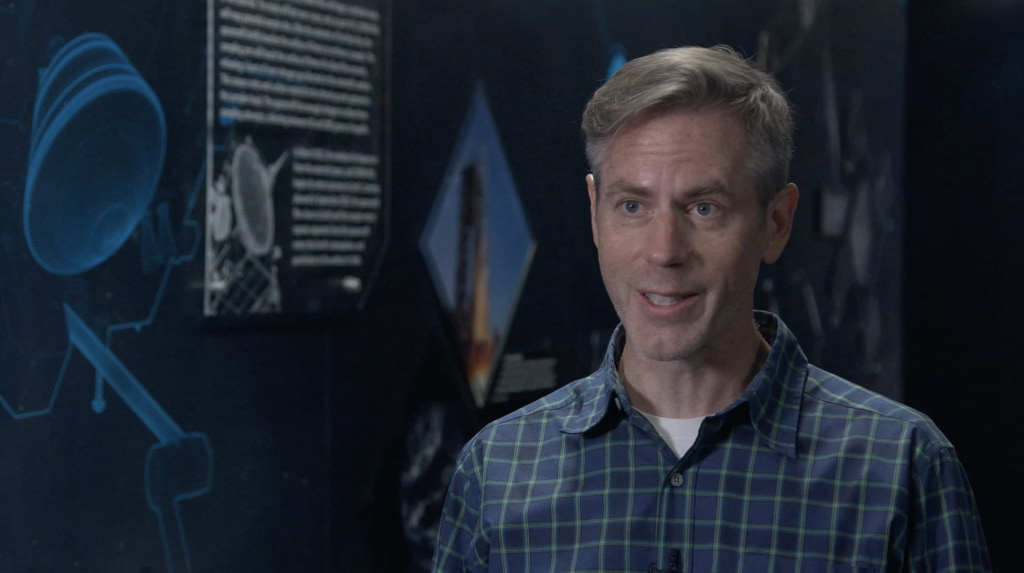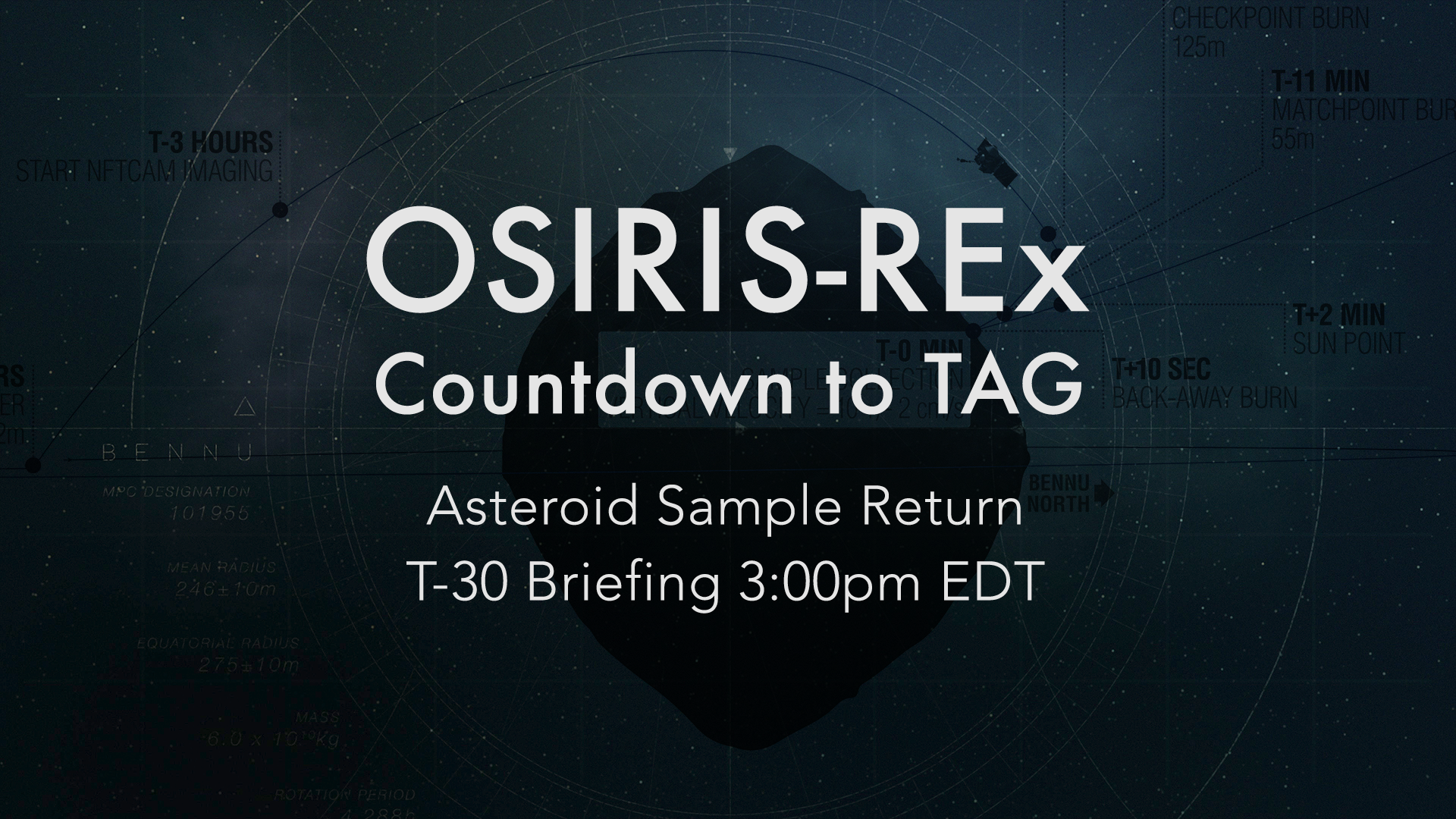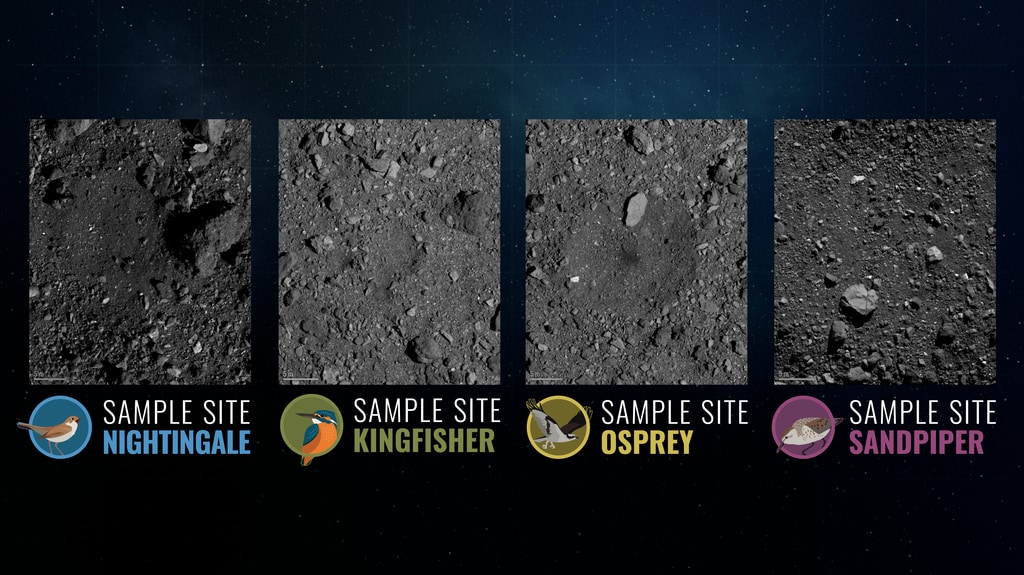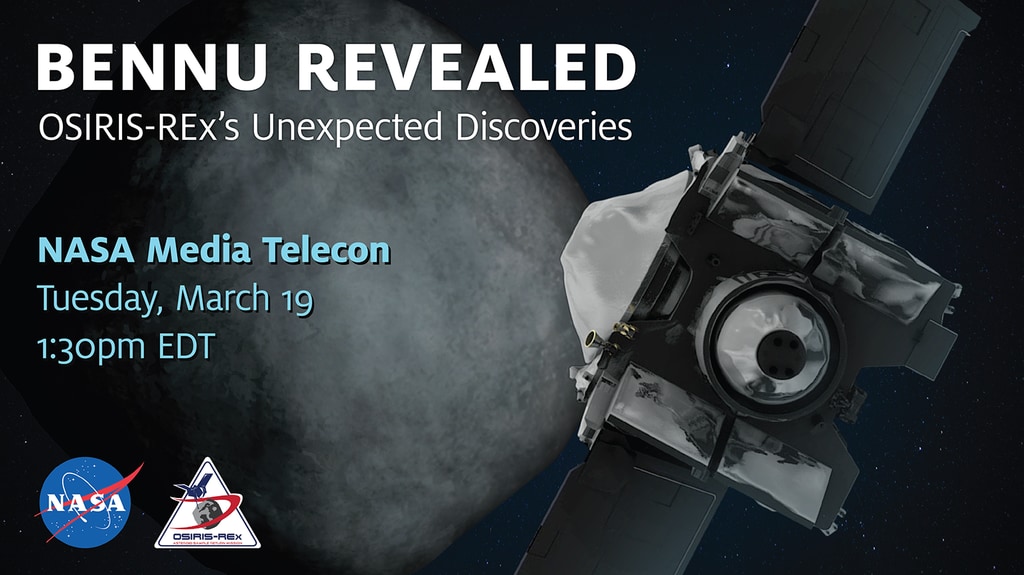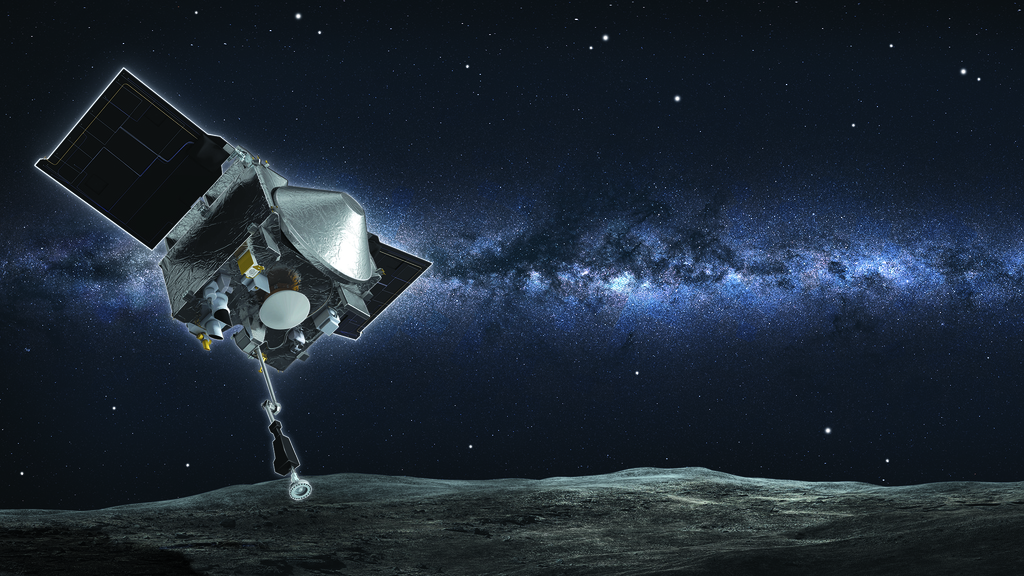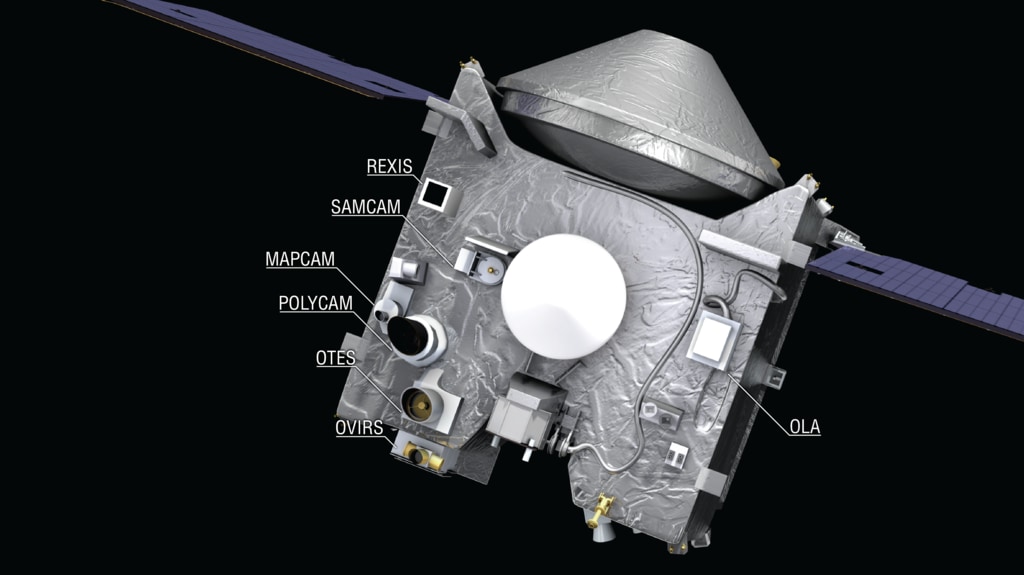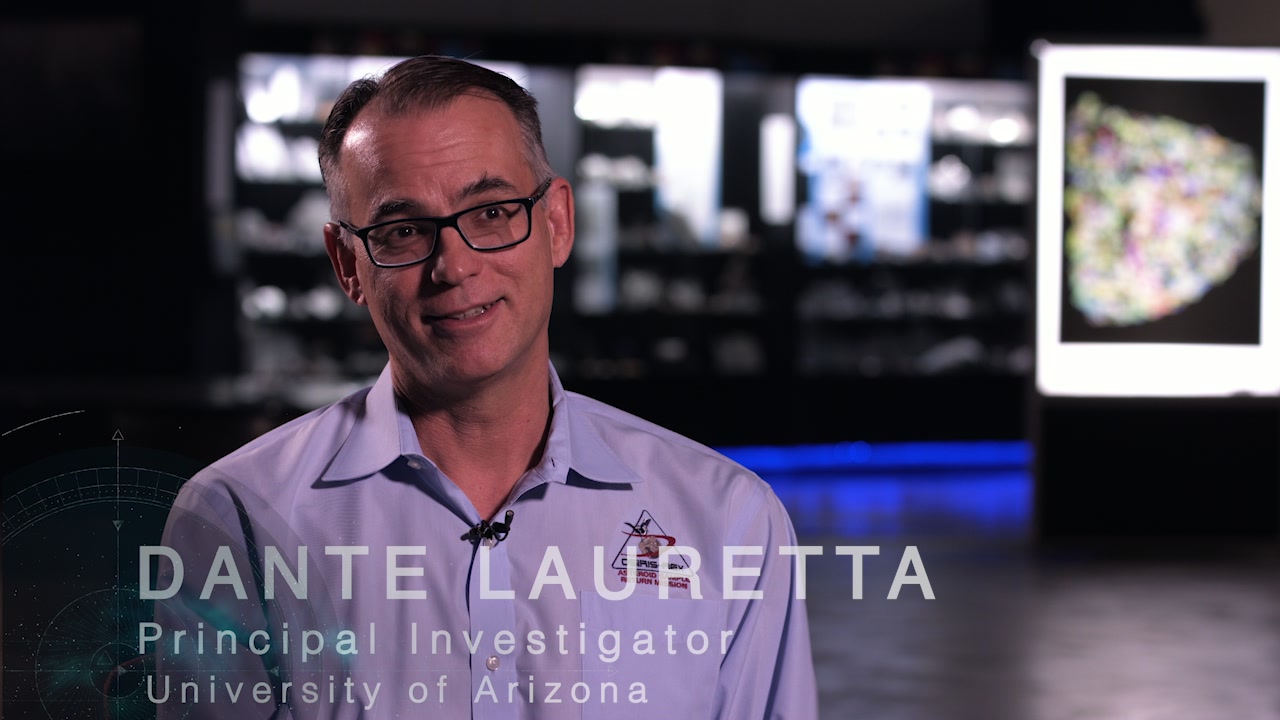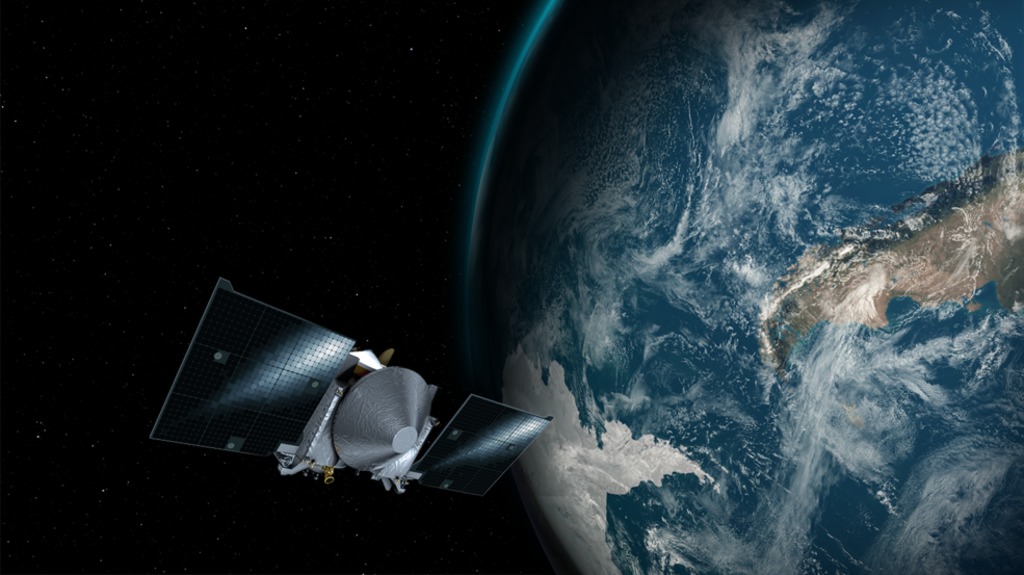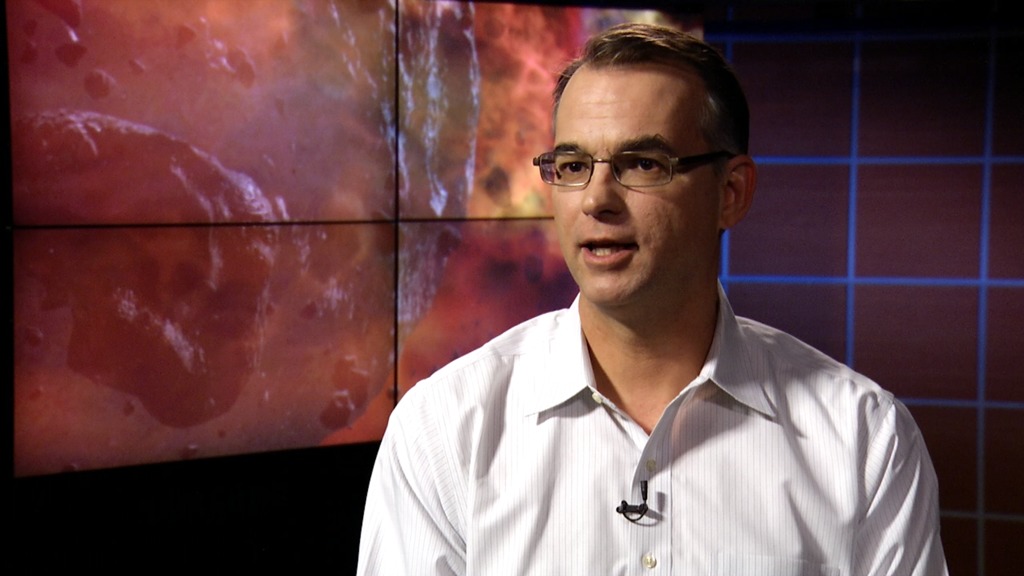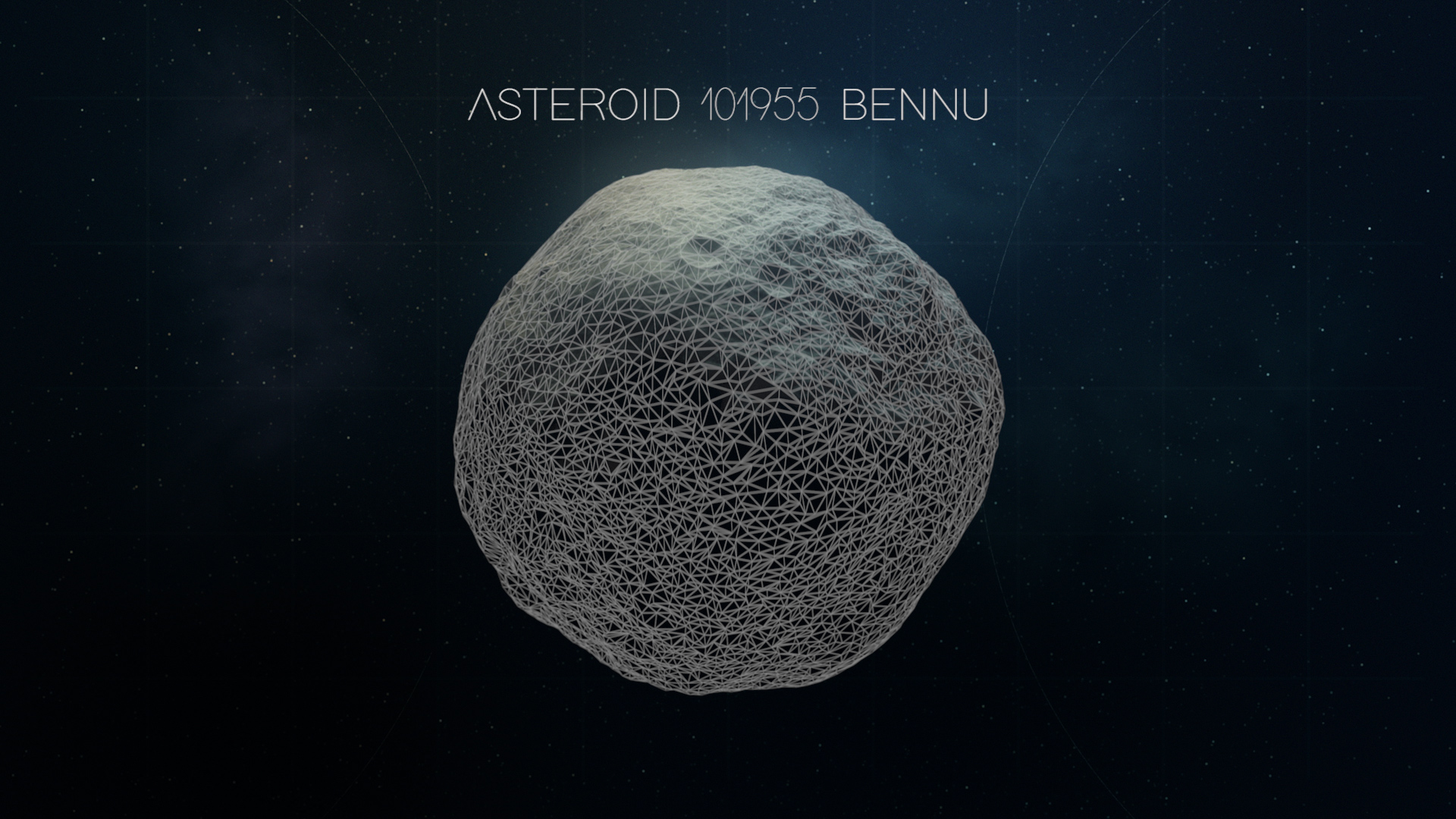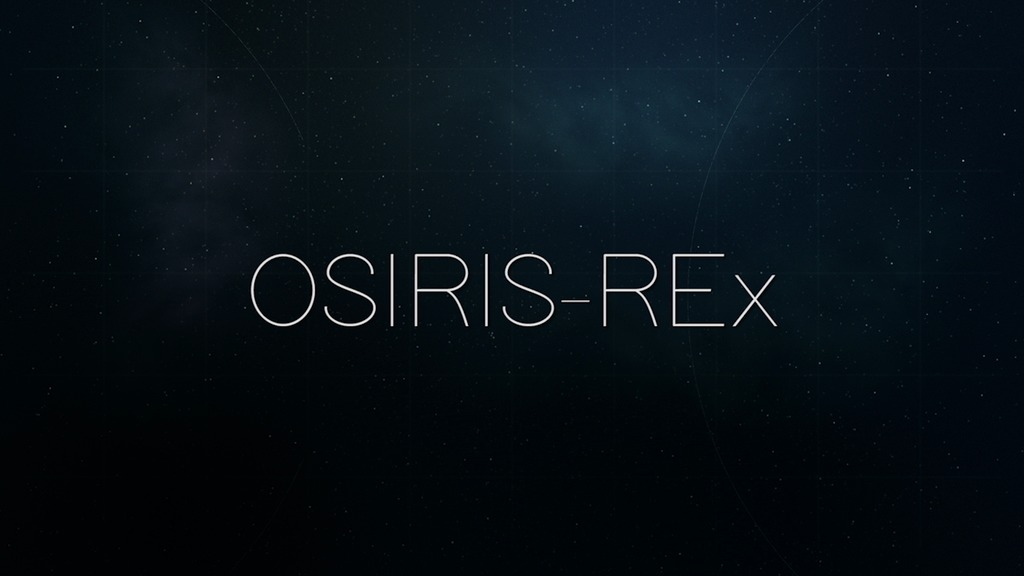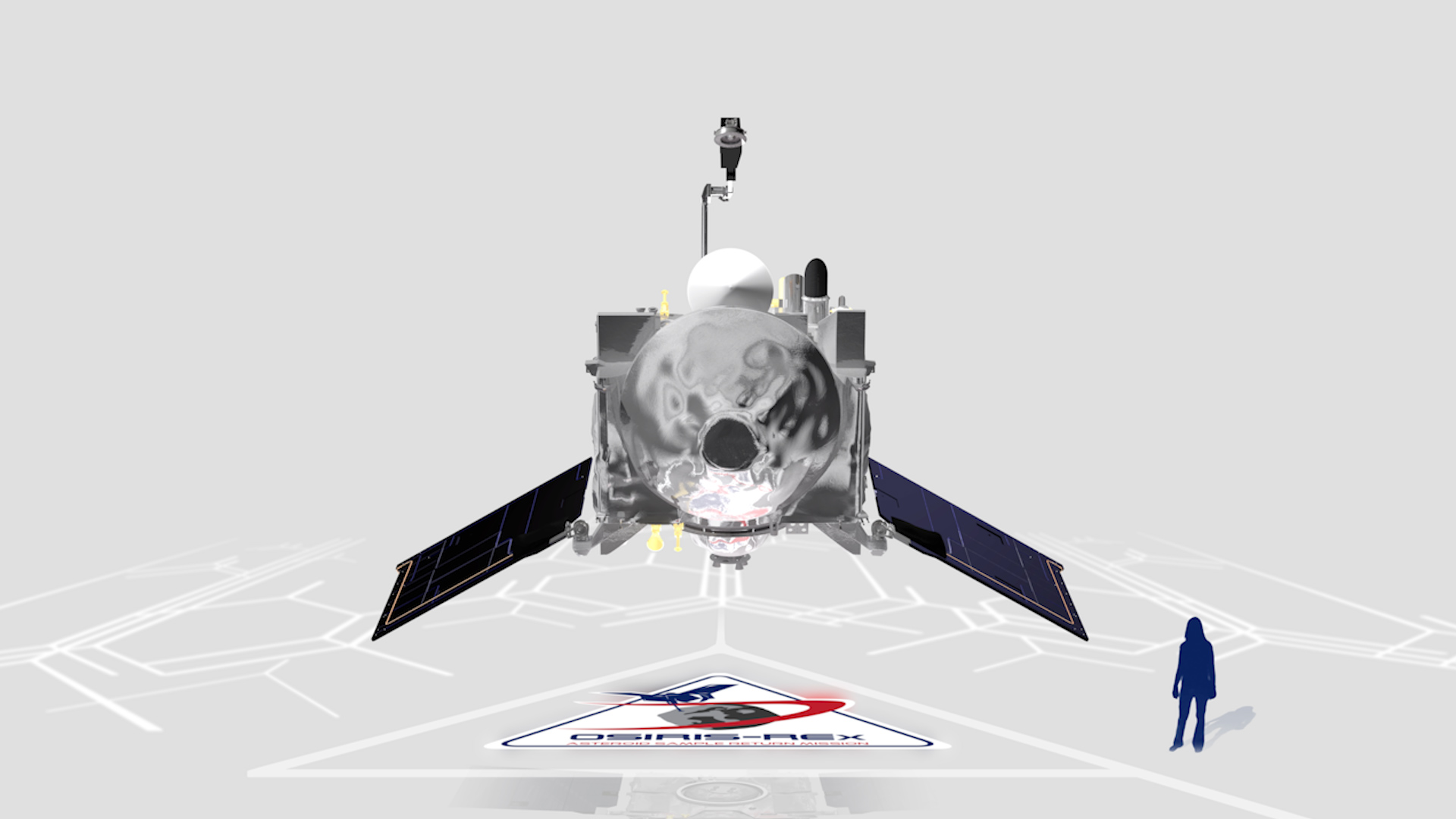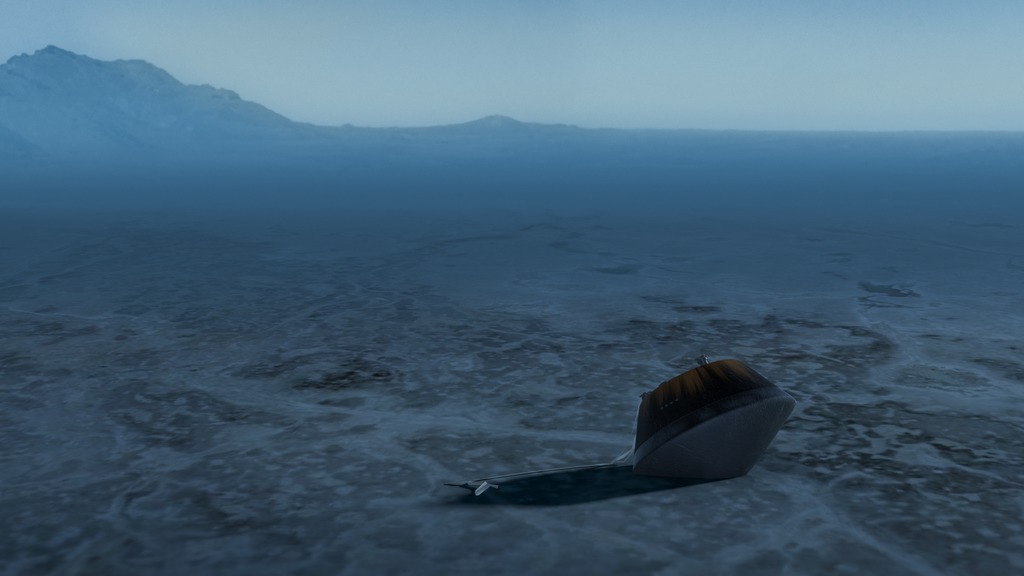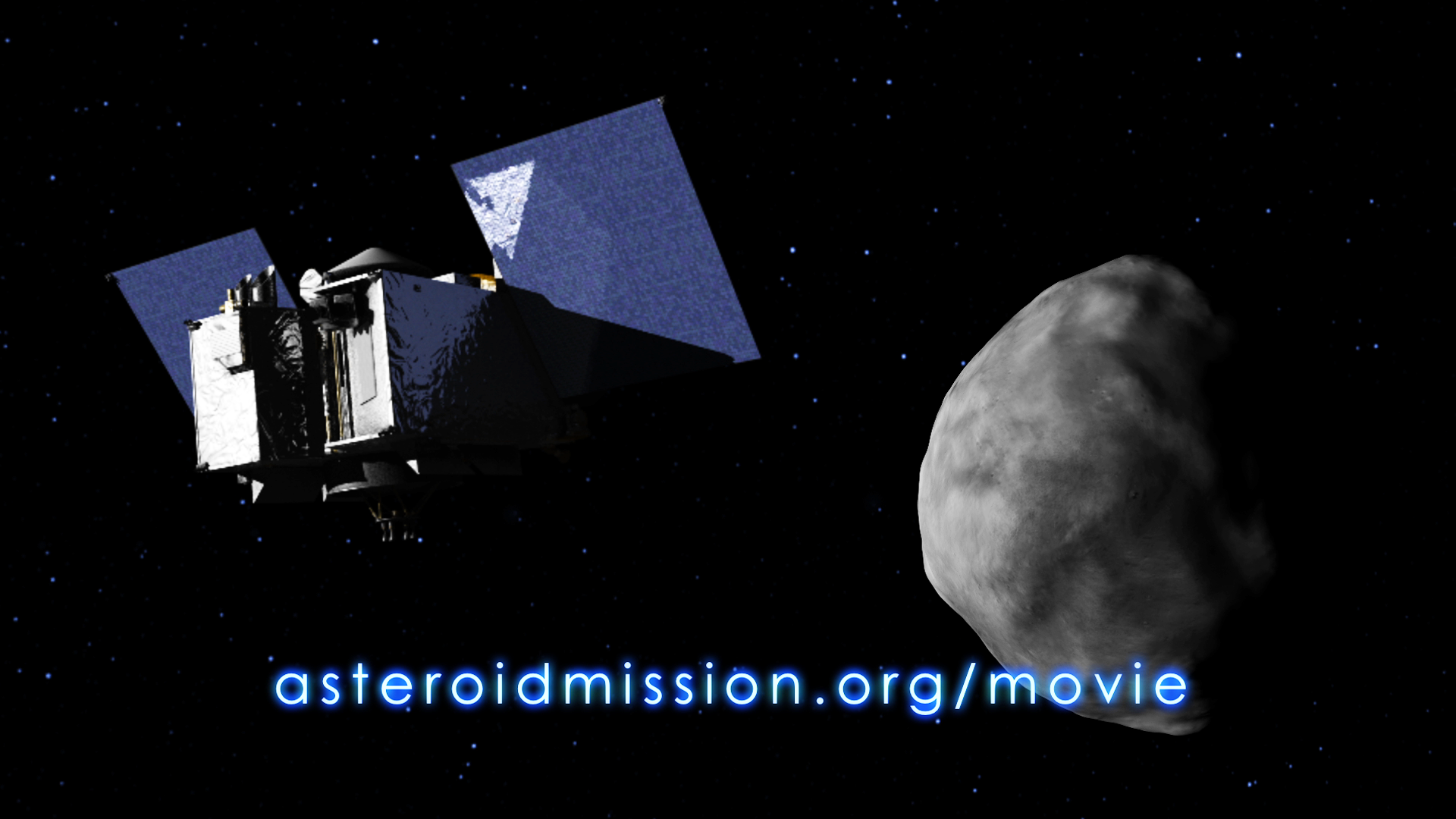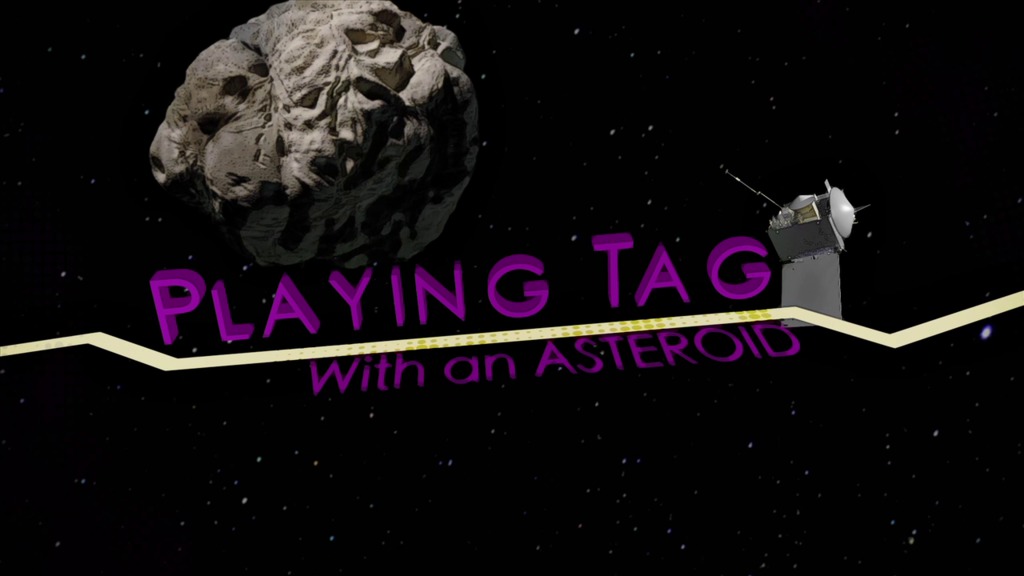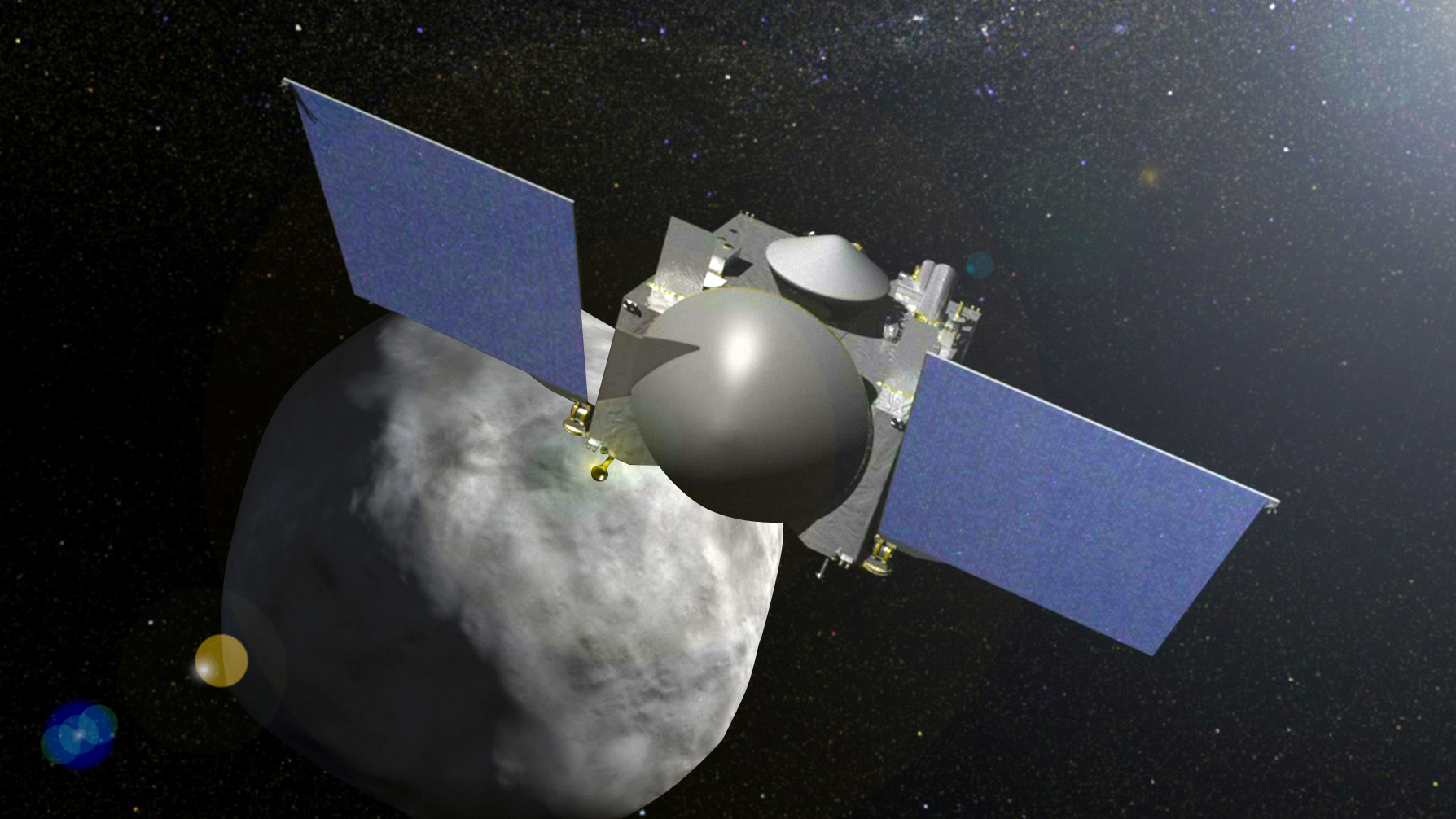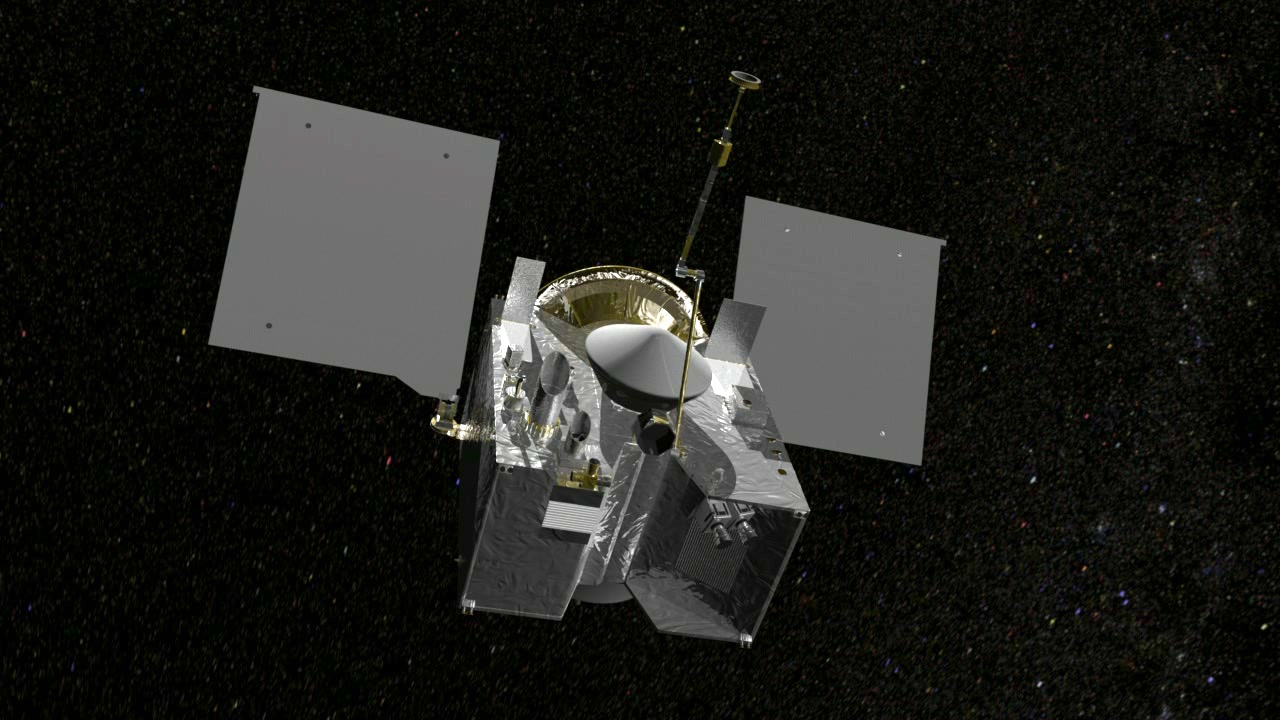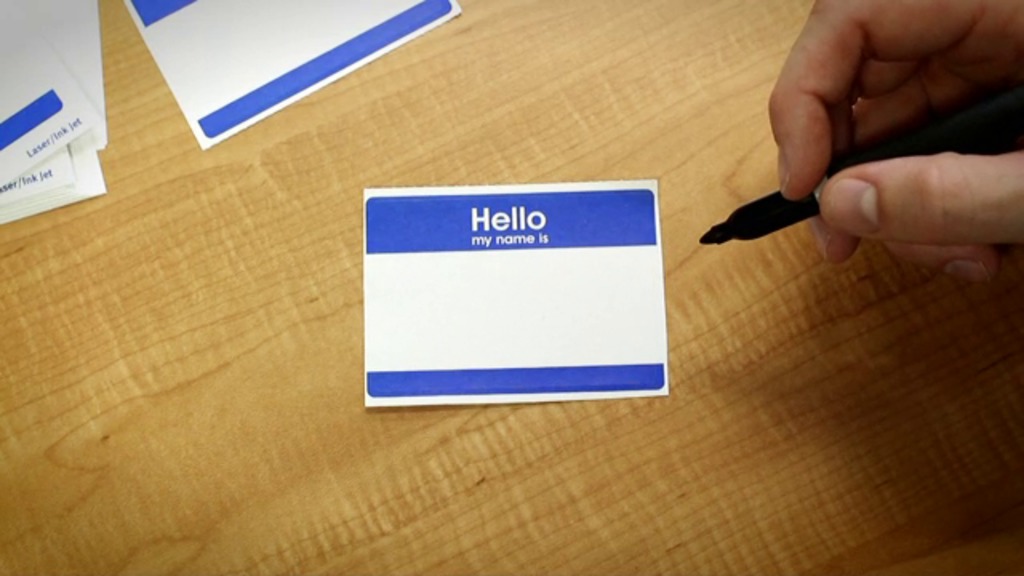OSIRIS-REx
Overview
NASA’s OSIRIS-REx, the first U.S. mission to collect a sample from an asteroid, will return to Earth on Sept. 24, 2023, with material from asteroid Bennu. When it arrives, the OSIRIS-REx spacecraft will release the sample capsule for a safe landing in the Utah desert. Generations of scientists will study the material from Bennu in laboratories on Earth to better understand how the solar system evolved and where the chemical ingredients for life may have originated.
Keep up with sample-landing news and updates on the OSIRIS-REx blog.
Watch OSIRIS-REx videos on this YouTube channel.
Learn more about OSIRIS-REx from NASA.
Recent and Curated Content
- Produced Video
- Produced Video
- Produced Video
- Produced Video
- Animation
- Produced Video
- Visualization
- Visualization
- Produced Video
- Produced Video
- Produced Video
- Animation
- Produced Video
- Visualization
- Animation
- Produced Video
- Visualization
- B-Roll
Produced Videos
- Produced Video
- Produced Video
- Produced Video
- Produced Video
- Produced Video
- Produced Video
- Produced Video
- Produced Video
- Produced Video
- Produced Video
- Animation
- Produced Video
- Produced Video
- Produced Video
- Produced Video
- Produced Video
- Produced Video
- Produced Video
- Produced Video
- Produced Video
- Produced Video
- Produced Video
- Produced Video
- Produced Video
- Produced Video
- Produced Video
- Produced Video
- Produced Video
- Produced Video
- Animation
- Produced Video
- Animation
- Produced Video
- Produced Video
- Produced Video
- Animation
- Animation
- Produced Video
- Produced Video
- Produced Video
- Produced Video
- Produced Video
- Produced Video
- Produced Video
- Produced Video
- Animation
Animations
OSIRIS-REx artist concept animations
- Animation
- Animation
- Animation
- Animation
- Animation
- Animation
- Animation
- Animation
- Animation
- Animation
Data Visualizations
OSIRIS-REx data-driven animations
- Visualization
- Visualization
- Visualization
- Visualization
- Visualization
- Visualization
- Visualization
- Produced Video
Mission Footage
OSIRIS-REx Sample Recovery: Field Rehearsal Two
Go to this pageHELICOPTER OPERATIONS REHEARSAL – Wednesday, July 1900:00 – Recovery Helicopter One touches down at staged landing area.00:25 – Helicopter safety briefing with pilot and sample recovery team members.01:43 – Helicopter One begins practice sorties with groups of team members.03:30 – Practice towing the SRC on a line and returning it to the ground.05:32 – Team members practice walking in wet and muddy conditions. || OSIRIS-REx_Rehearsal_Jul_19_Preview_print.jpg (1024x576) [303.3 KB] || OSIRIS-REx_Rehearsal_Jul_19_Preview.jpg (3840x2160) [2.8 MB] || OSIRIS-REx_Rehearsal_Jul_19_Preview_searchweb.png (320x180) [88.2 KB] || OSIRIS-REx_Rehearsal_Jul_19_Preview_thm.png (80x40) [6.2 KB] || OSIRIS-REx_Rehearsal_Utah_20230719_1080.mp4 (1920x1080) [245.2 MB] || OSIRIS-REx_Rehearsal_Utah_20230719_720.mp4 (1280x720) [102.8 MB] || OSIRIS-REx_Rehearsal_Utah_20230719.mp4 (3840x2160) [575.5 MB] ||
OSIRIS-REx Sample Recovery: Field Rehearsal One
Go to this pageRecovery team members rehearse bagging and moving OSIRIS-REx’s sample return capsule at Lockheed Martin Space in Littleton, Colorado, ahead of the sample’s return to Earth Sept. 24.Credit: Lockheed Martin Space || LM_OSIRIS-REx_Rehearsal_062723_01_print.jpg (1024x576) [402.1 KB] || LM_OSIRIS-REx_Rehearsal_062723_01.jpg (3840x2160) [2.9 MB] || LM_OSIRIS-REx_Rehearsal_062723_01_searchweb.png (320x180) [115.1 KB] || LM_OSIRIS-REx_Rehearsal_062723_01_thm.png (80x40) [7.0 KB] || 23_07288_o-rex_rehearsal_broll_string_4k_v2_bl_1080p.mp4 (1920x1080) [63.3 MB] || 23_07288_o-rex_rehearsal_broll_string_4k_v2_bl_720p.mp4 (1280x720) [32.7 MB] || 23_07288_o-rex_rehearsal_broll_string_4k_v2_bl_540p.mp4 (960x540) [20.1 MB] || LM_OSIRIS-REx_Rehearsal_062723.mp4 (3840x2160) [274.4 MB] || 23_07288_o-rex_rehearsal_broll_string_4k_v2_bl_1440p.mp4 (2560x1440) [137.1 MB] || 23_07288_o-rex_rehearsal_broll_string_4k_v2_bl_360p.mp4 (640x360) [10.8 MB] || 23_07288_o-rex_rehearsal_broll_string_4k_v2_bl_240p.mp4 (426x240) [6.0 MB] ||
OSIRIS-REx Sample Curation Rehearsals
Go to this pageOSIRIS-REx team members practice extracting samples of asteroid Bennu from the Touch-and-Go Sample Acquisition Mechanism (TAGSAM) on June 8, 2023. Teflon spheres were used to represent material from Bennu. || JSC_Cleanroom_Preview_20230608_print.jpg (1024x576) [153.6 KB] || JSC_Cleanroom_Preview_20230608.png (3840x2160) [12.7 MB] || JSC_Cleanroom_Preview_20230608_searchweb.png (320x180) [105.0 KB] || JSC_Cleanroom_Preview_20230608_thm.png (80x40) [7.5 KB] || JSC_OSIRIS-REx_Cleanroom_20230608_1080.mp4 (1920x1080) [323.1 MB] || JSC_OSIRIS-REx_Cleanroom_20230608_720.mp4 (1280x720) [57.7 MB] || JSC_OSIRIS-REx_Cleanroom_20230608_4K.mp4 (3840x2160) [2.0 GB] ||
OSIRIS-REx TAG Events
Go to this pageOSIRIS-REx Mission Support Area - TAG Sequence and CelebrationB-ROLL || 13741_OSIRIS_MSA.png (1173x658) [1.3 MB] || 13741_OSIRIS_MSA.jpg (1173x658) [806.3 KB] || 13741_OSIRIS_MSA_print.jpg (1024x574) [545.3 KB] || 13741_OSIRIS_MSA_searchweb.png (320x180) [104.6 KB] || 13741_OSIRIS_MSA_thm.png (80x40) [11.3 KB] || 13741_OSIRIS_MSA.mov (1280x720) [1.3 GB] || 13741_OSIRIS_MSA.mp4 (1280x720) [134.6 MB] || 13741_OSIRIS_MSA.webm (1280x720) [14.2 MB] ||
NASA OSIRIS-REx Final Command Go for TAG
Go to this pageOctober 20, 2020, 7:29 am MDTFinal commands sent to OSIRIS REx: Go for Touch-And-Go (TAG) Command SequenceLocation: Lockheed Martin Space, Mission Support Area, Littleton, ColoradoCredit: Lockheed Martin ||
OSIRIS-REx: Science Operations Center & Mission Support Area
Go to this pageThis editor's resource page contains footage of the OSIRIS-REx Science Operations Center at the University of Arizona in Tucson, and of the Mission Support Area at Lockheed Martin Space in Littleton, Colorado. OSIRIS-REx is a NASA mission studying near-Earth asteroid Bennu. It will return a sample of Bennu to Earth in 2023. ||
OSIRIS-REx Launch Footage
Go to this pageOn September 8, 2016, NASA's OSIRIS-REx spacecraft began its journey to near-Earth asteroid Bennu. Just as the sun began to set over Cape Canaveral, OSIRIS-REx made a picture-perfect liftoff at 7:05 pm EDT. It departed Space Launch Complex 41 aboard a United Launch Alliance Atlas V 411 rocket, cheered on by crowds of mission personnel and space enthusiasts. The launch sent OSIRIS-REx on a seven-year journey to asteroid Bennu and back.An excerpt of the launch broadcast appears at the top of this page. Raw camera feeds from Cape Canaveral and Kennedy Space Center appear below. These clips are intended as a video editor's resource, and are available for download in their original DVCPRO HD format. Launch commentary is provided by KSC host Mike Curie.Learn more about OSIRIS-REx from NASA and the University of Arizona. ||
OSIRIS-REx Spacecraft Footage
Go to this pageB-roll of OSIRIS-REx arriving at the Kennedy Space Center in May 2016, leading to a spin test and balance test. || KSC_OSIRIS-REx_SPIN.png (1908x1076) [2.4 MB] || KSC_OSIRIS-REx_SPIN_print.jpg (1024x577) [124.6 KB] || KSC_OSIRIS-REx_SPIN_searchweb.png (320x180) [92.1 KB] || KSC_OSIRIS-REx_SPIN_thm.png (80x40) [6.8 KB] || KSC_OSIRIS-REx_Arrival_Spin_Test.mov (1920x1080) [19.2 GB] || KSC_OSIRIS-REx_Arrival_Spin_Test_720.mov (1280x720) [9.8 GB] || KSC_OSIRIS-REx_Arrival_Spin_Test.webm (1920x1080) [85.3 MB] ||
Broadcasts, Press Briefings, and Interviews
- Produced Video
- Produced Video
- Produced Video
- Produced Video
- Produced Video
- Produced Video
- Produced Video
- Produced Video
- Produced Video
- Produced Video
- Produced Video
- Produced Video
- Produced Video
- Produced Video
- Produced Video
- Produced Video
- Produced Video
- Produced Video
- Animation
Older OSIRIS-REx Content
Older videos and animations for the OSIRIS-REx mission.
OSIRIS-REx Mission Design: Earth Return Animations
Go to this pageOn September 24, 2023, OSIRIS-REx will return its sample of asteroid Bennu to Earth. The sample return capsule will detach from the spacecraft, perform an entry, descent and landing sequence, and touch down at the UTTR facility in Utah. The Bennu samples will be taken to Johnson Space Center in Houston, Texas for curation, and will be studied by scientists around the world for decades to come. ||
Bennu's Journey Teaser
Go to this pageThe solar system today is an orderly place, much quieter than it was in its turbulent youth. How did our Sun, the Earth and the planets evolve from a whirlpool of gas, dust, and fiery droplets of molten rock? To answer this question, scientists are planning to visit asteroid Bennu (1999 RQ-36), which is composed of the same raw ingredients that created the planets. Bennu is a survivor of our solar system's early chaos, and following its journey will teach us a great deal about our own origins. This video is the official teaser for Bennu's Journey, a signature animation of NASA's OSIRIS-REx mission; the full-length video will be released in November 2014. ||
Playing Tag With an Asteroid
Go to this pageWhat’s the best way get a sample of an asteroid? Play tag with it! That’s the plan for OSIRIS-REx, a NASA spacecraft that will approach the asteroid Bennu in 2018. The collection will be done with an instrument on board called the Touch-And-Go Sample Acquisition Mechanism, or, TAGSAM. Learn how it works in this video. ||
OSIRIS-REx Mission Overview
Go to this pageOSIRIS-REx will visit a Near Earth asteroid called Bennu and return with samples that may hold clues to the origins of the solar system and perhaps life itself. It will also investigate the asteroid's chance of impacting Earth in 2182. For the mission, NASA has selected the team led by Principal Investigator Dr. Dante Lauretta from the University of Arizona. NASA GSFC will manage the mission and Lockheed Martin Space Systems will build the spacecraft. Arizona State University will supply the OTES instrument; NASA GSFC will supply the OVIRS instrument; the Canadian Space Agency will supply the OLA instrument; the University of Arizona will supply the OCAMS camera suite; Harvard/MIT will supply the REXIS instrument; and Flight Dynamics will supply the KinetX instrument. ||
OSIRIS-REx Animations
Go to this pageTHIS PAGE FEATURES OLDER CONTENT FOR OSIRIS-REx. NEWER CONTENT IS AVAILABLE ON THE OSIRIS-REx GALLERY. ||
OSIRIS-REx Targets Near-Earth Asteroid
Go to this pageOn February 15, 2013, a 45-meter asteroid called Duende (formerly 2012 DA14) passed within 28,000 kilometers of Earth - the closest approach on record for an object of this size. Although such Near-Earth Objects, or NEO's, cross our planet's orbit on a regular basis, only a handful are large enough to pose a threat. One of these objects is asteroid Bennu (formerly 1999 RQ36), a "leftover" from the formation of our solar system. In an effort to better understand NEO's and our planet's own origins, NASA is sending the OSIRIS-REx spacecraft to asteroid Bennu to study the evolution of its orbit and retrieve a sample for return to Earth. ||
Name That Asteroid!
Go to this pageThe OSIRIS-REx mission is going to an asteroid to collect and return a sample to Earth. OSIRIS-REx will launch in 2016, visit the asteroid from 2018 to 2021, and return a sample to Earth in 2023. Scientists will study the asteroid’s orbit, composition, and characteristics to answer questions about the early solar system, the building blocks of life, and potential impact hazards. Instead of traveling to (101955) 1999 RQ36, the asteroid’s provisional designation, we’re asking for help to find a new name. The Planetary Society, NASA’s OSIRIS-REx mission, and the discovers at MIT’s Lincoln Lab will recommend selected names to the International Astronomical Union for selection.Contestants must choose a name, explain their choice, and submit the application on the Planetary Society website.The contest starts Tuesday, September 4, 2012. The deadline is Sunday, December 2, 2012.For contest rules, guidelines, and application visit: www.planetary.org/name ||
Destination Asteroid
Go to this pageNot far from Earth, dark bodies of rock circle the sun in lonely orbits. These near Earth objects, or NEOs, are asteroids found outside the traditional belt between Mars and Jupiter. Protected from the gravitational tugs and tumbles that affect objects found closer to the gas giant, these asteroids may contain clues about the origins of the solar system. That's why experts from NASA and The University of Arizona want to send a research vehicle to collect a sample. That's OSIRIS. Once approved, the OSIRIS vehicle would leave Earth on a multi-year mission to map and collect samples from a particular NEO called RQ-36.In DESTINATION: ASTEROID, we look behind the scenes as a team of government scientists demonstrates for a visiting group of reporters how the mission will work. This short film explores the basics of the mission, including scientific goals, technical design plans, and a timeline of planned events. Imagination and invention meet in this spirited paean to NASA's legacy for great feats of exploration and discovery. Join us as we set our navigation systems to DESTINATION: ASTEROID. ||
![Learn why NASA chose near-Earth asteroid Bennu as the target of the OSIRIS-REx sample return mission.Complete transcript available.Universal Production Music: “Spin Foam” by Mauricio Loseto [PRS], Ninja Tune Production Music [PRS]Watch this video on the NASA Goddard YouTube channel.](/vis/a010000/a014300/a014398/why-bennu-preview.jpg)
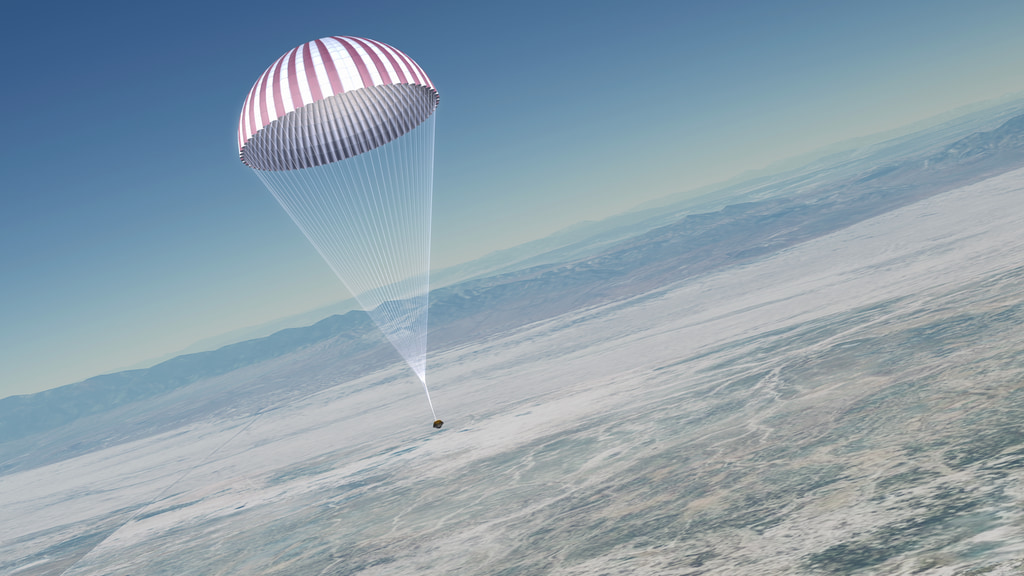
![Producer James Tralie“Path of a Hero” by Caleb Jordan Swift [ASCAP] via Hyperscore Productions [ASCAP] and Universal Production Music](/vis/a010000/a014400/a014416/1._SOT_SHOW_OPEN_FIN_3_Poster_print.jpg)
![Learn more about how NASA will curate and study samples of asteroid Bennu that were collected by OSIRIS-REx.Complete transcript available.Universal Production Music: “Mirage” and “Manifest” by Ben Niblett and Jonathan David Cotton, Chappell Recorded Music Library Ltd [PRS]; “Lumos” by Ben Niblett and Jonathan David Cotton, Nova Production Music Ltd [PRS]Watch this video on the NASA Goddard YouTube channel.](/vis/a010000/a014400/a014412/14412_OREX_ScienceGoals_Thumbnail.jpg)
![Ride along with OSIRIS-REx during the thrilling finale of its journey to Bennu and back.Complete transcript available.Universal Production Music: “A Sense of Urgency” and “Rise to the Challenge” by Daniel Marantz and Michael James Burns, Raydia Music library [PRS]; “Fragments of Time” by Timothy Robert Shortell, Scores of Hypersonic Music [BMI]Watch this video on the NASA Goddard YouTube channel.](/vis/a010000/a014400/a014406/OSIRIS-REx_Journeys_End_Preview_V3_print.jpg)
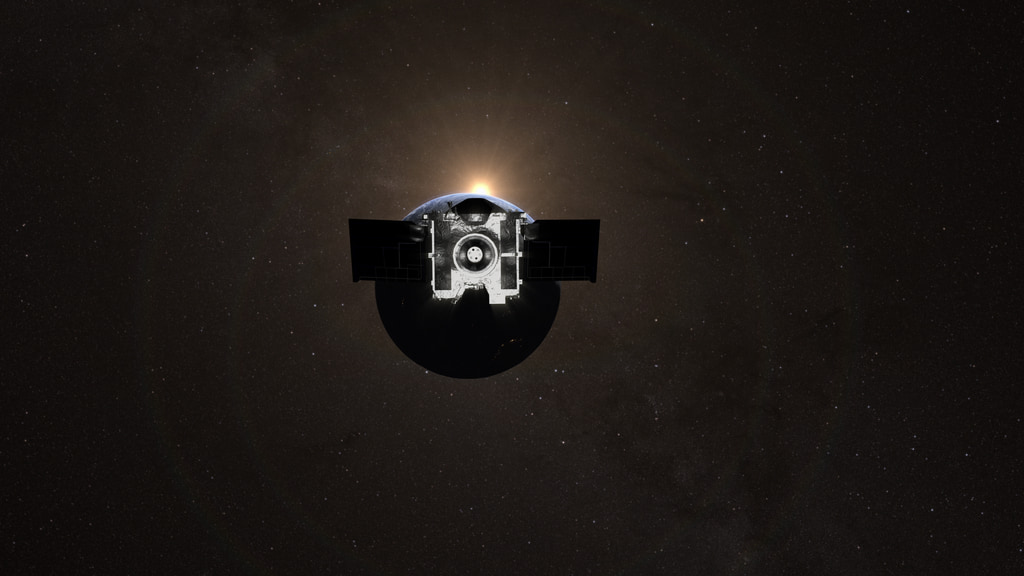
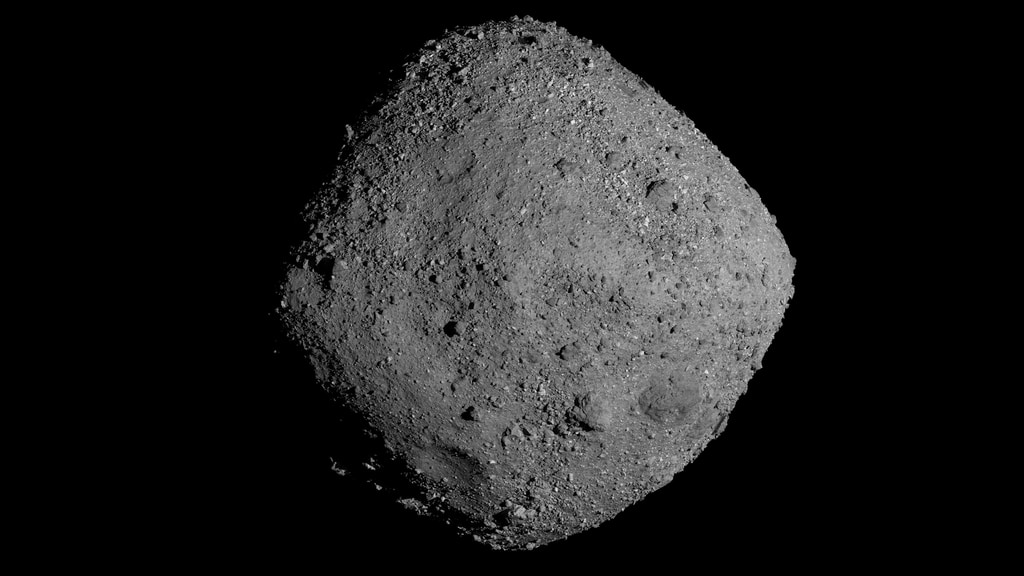
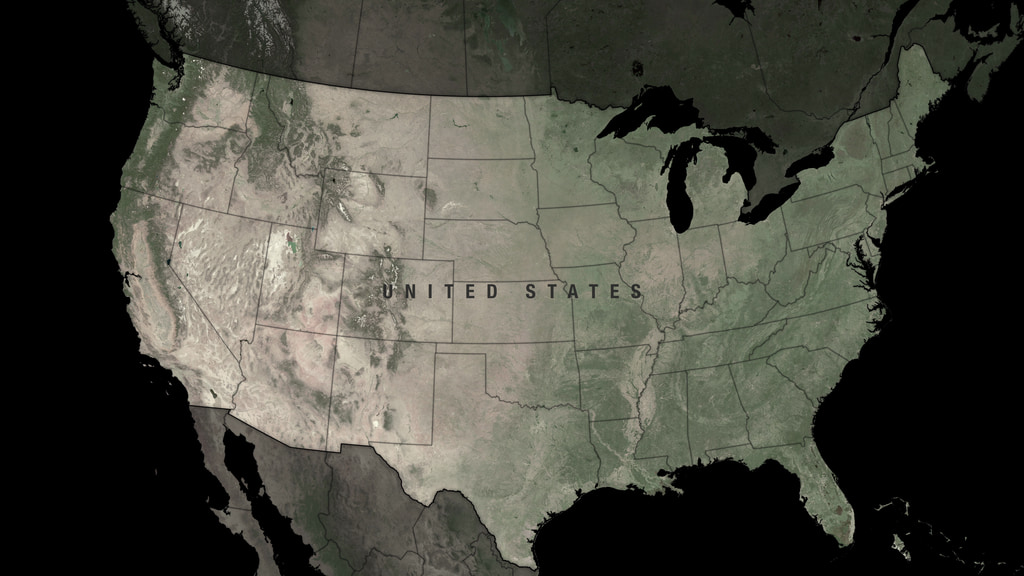
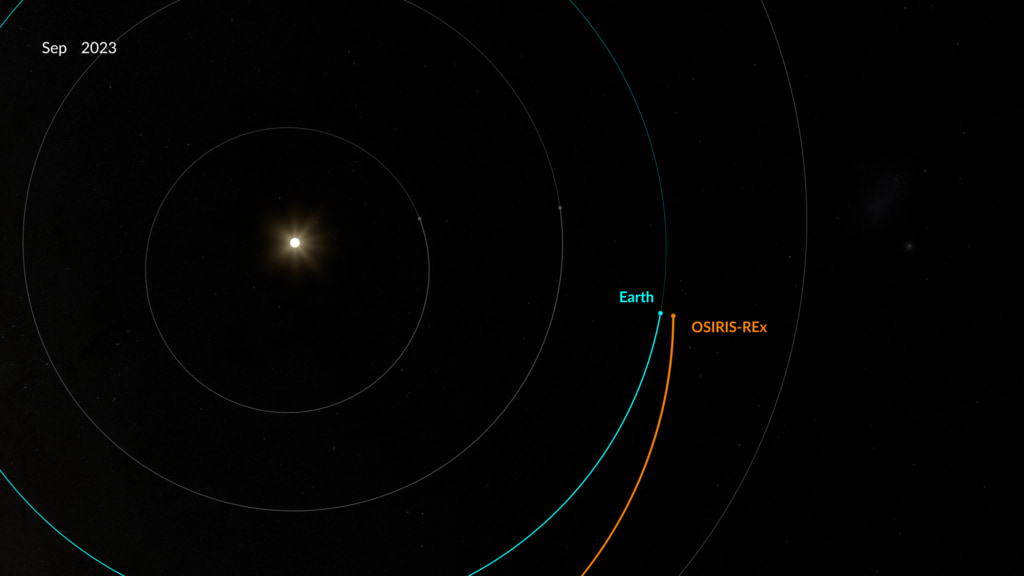
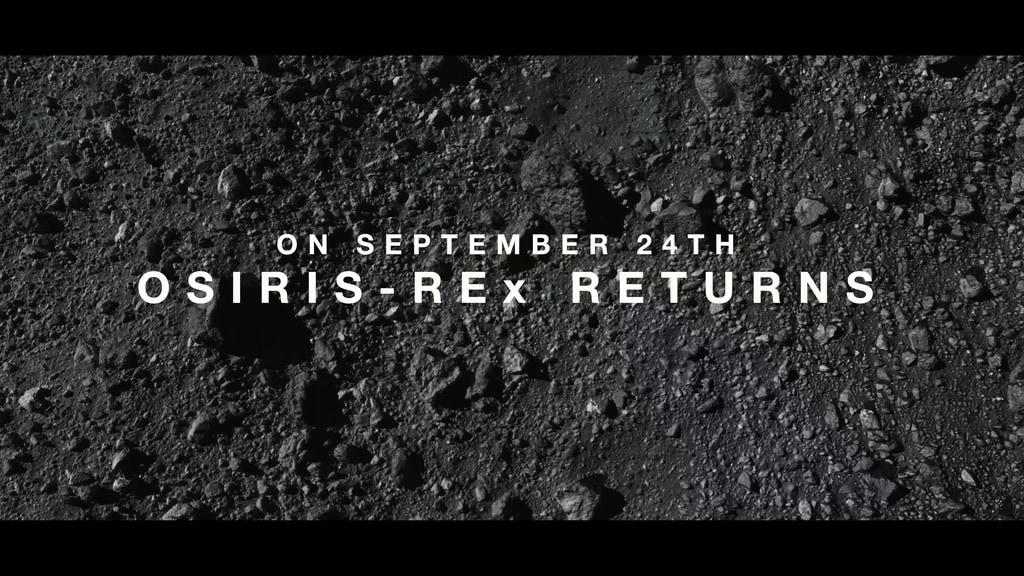
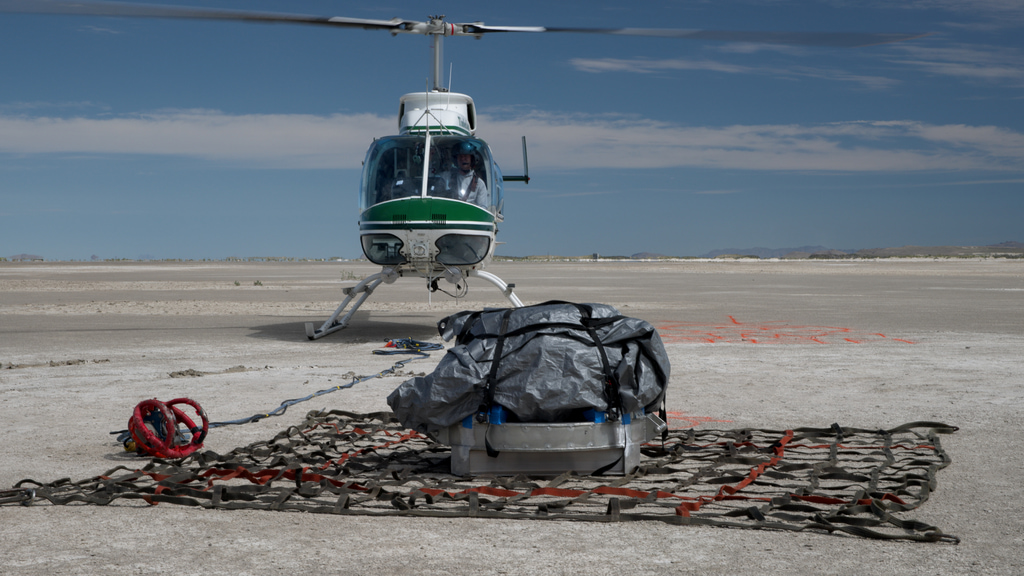
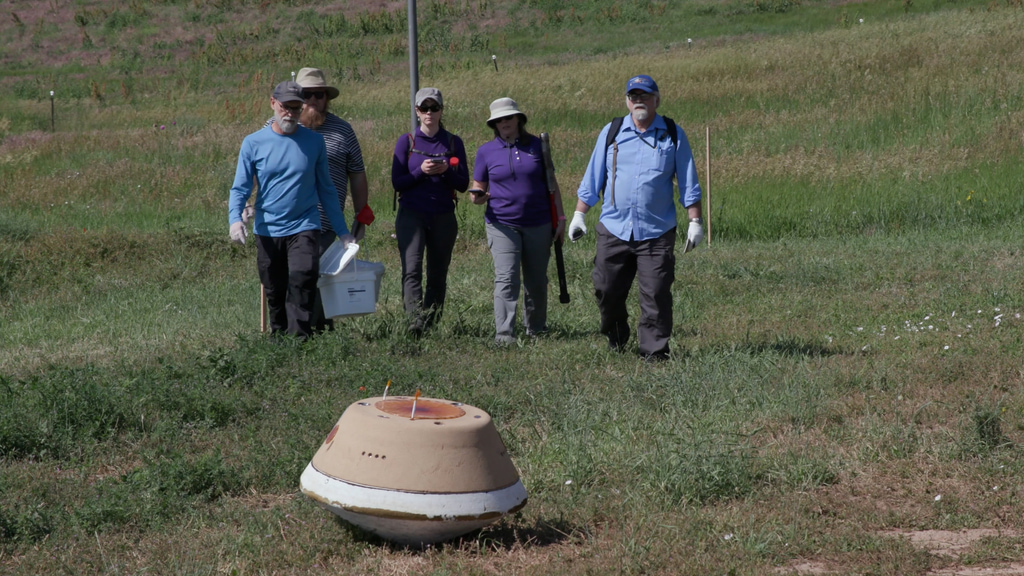
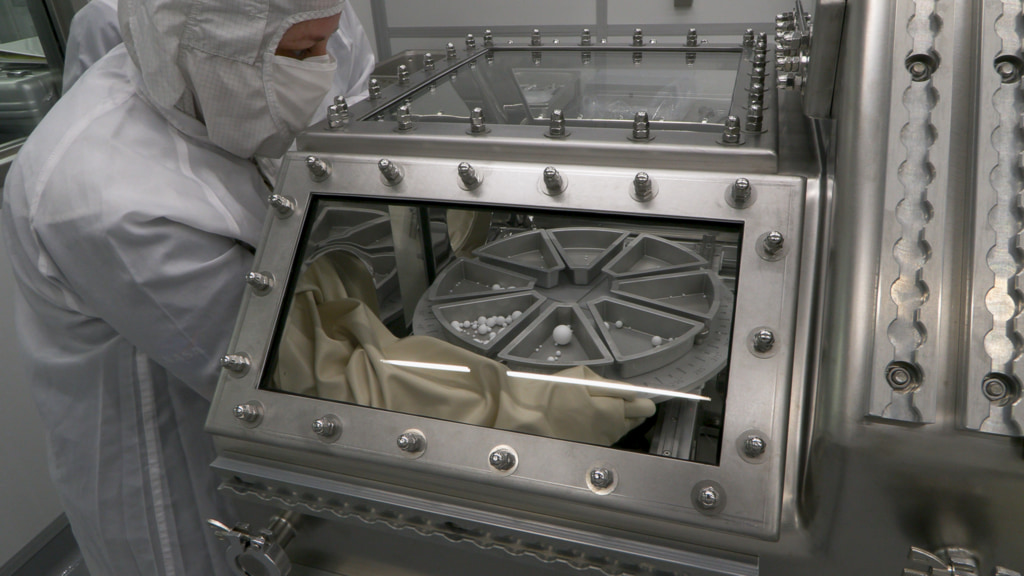
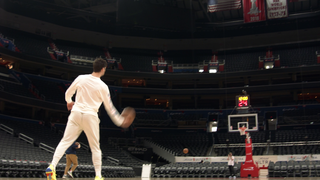
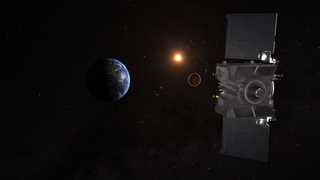
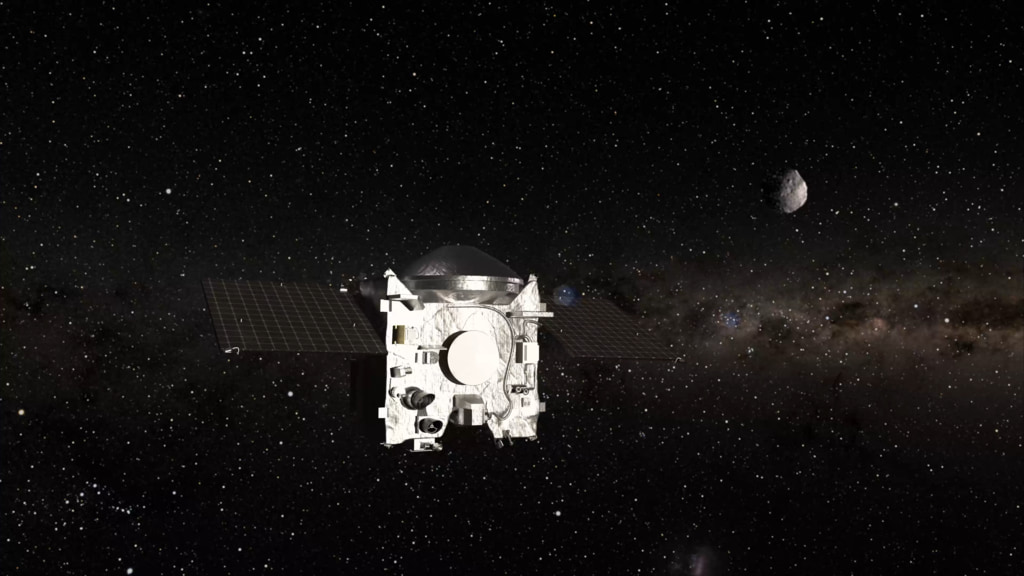

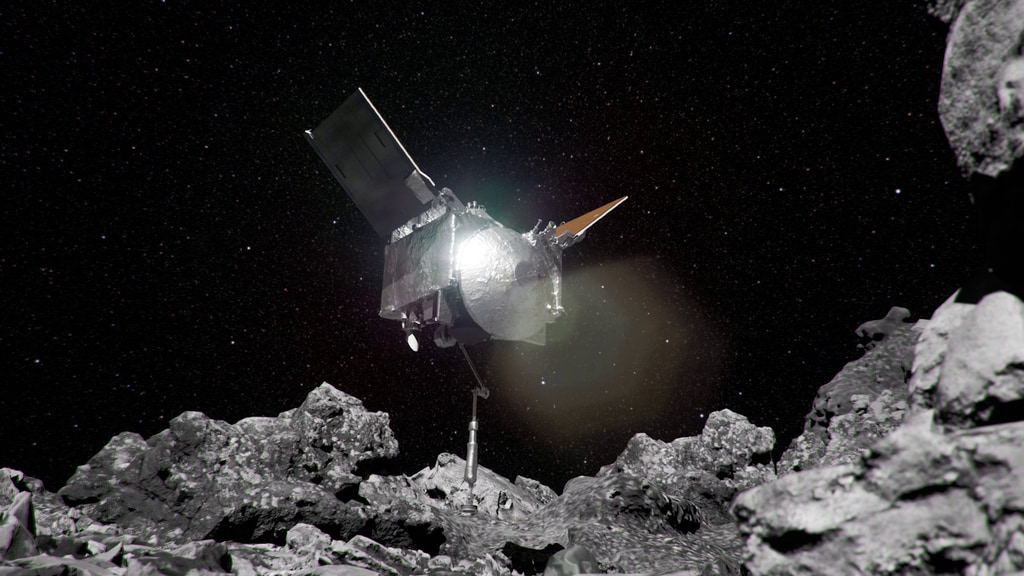
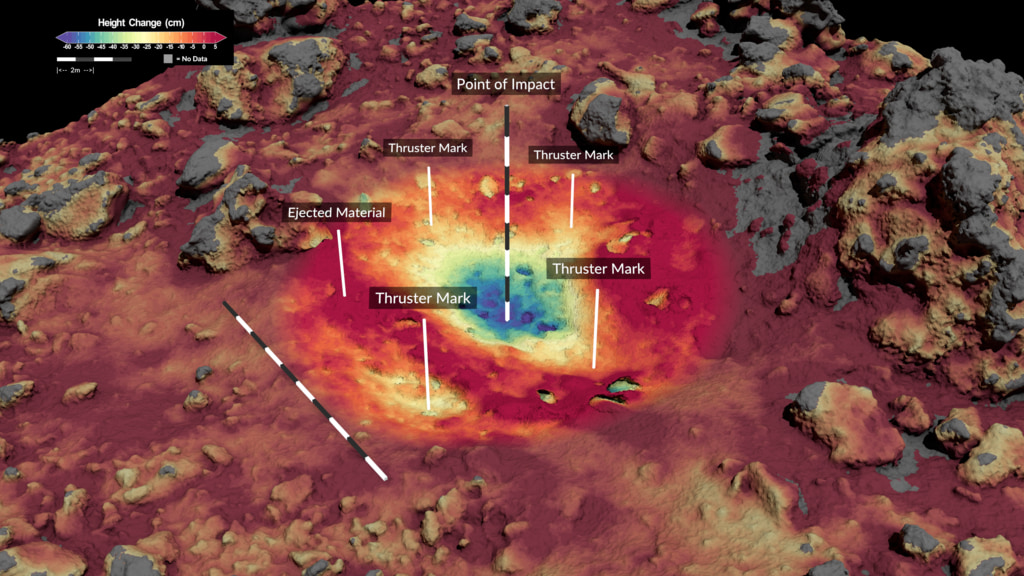

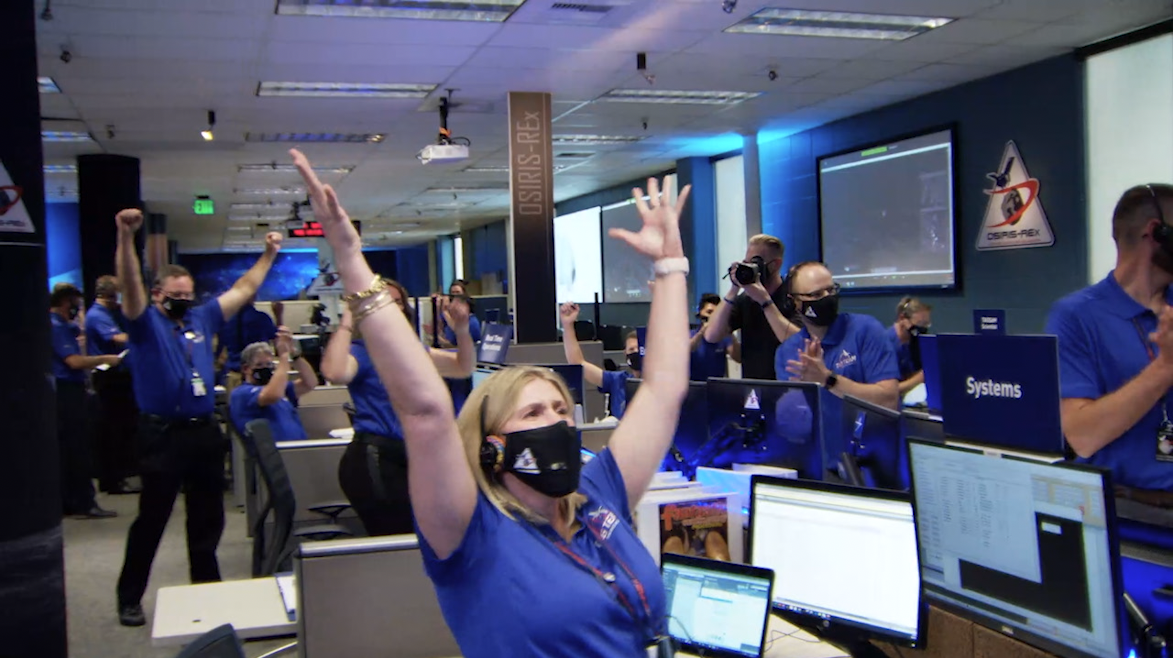
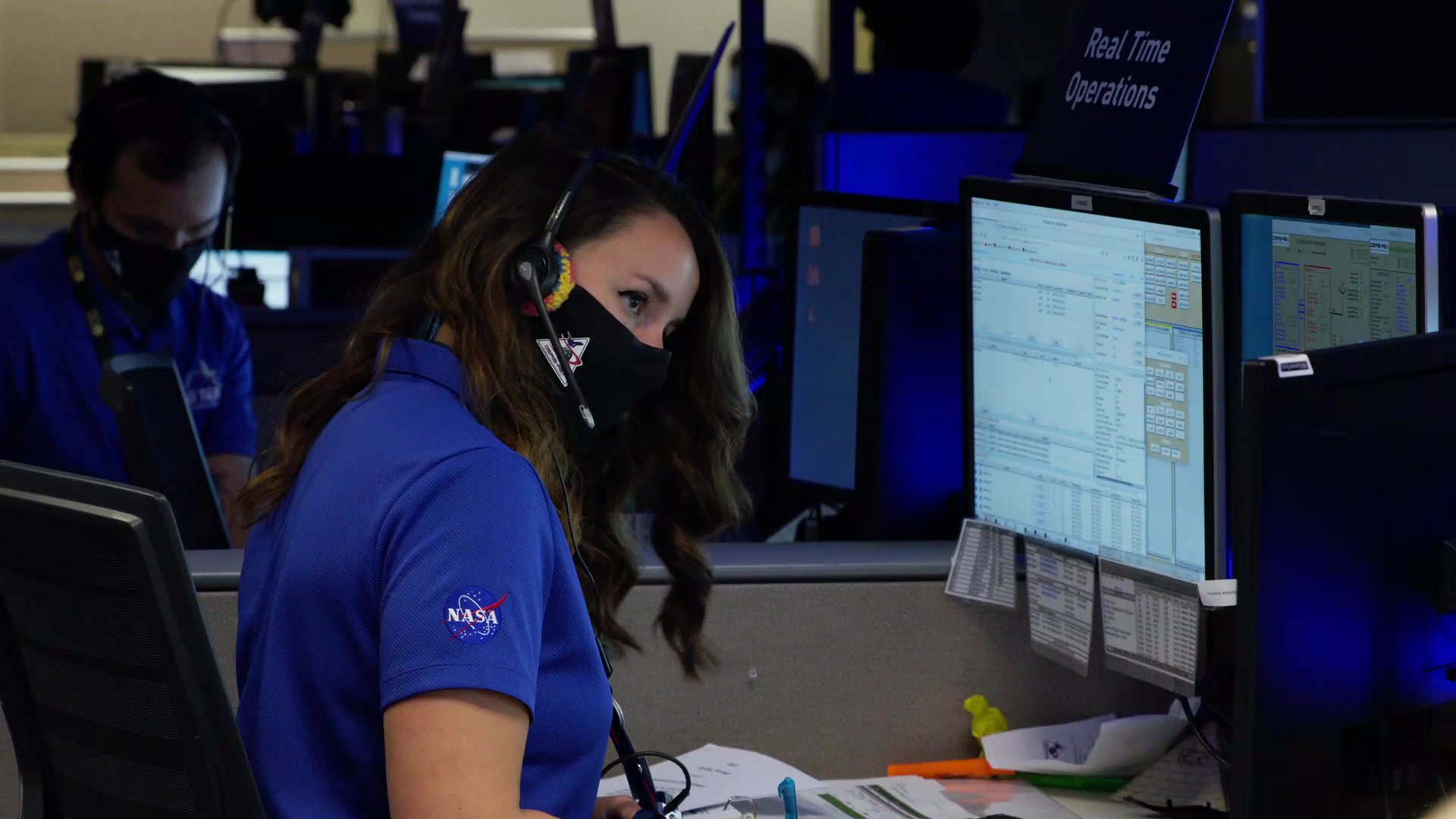
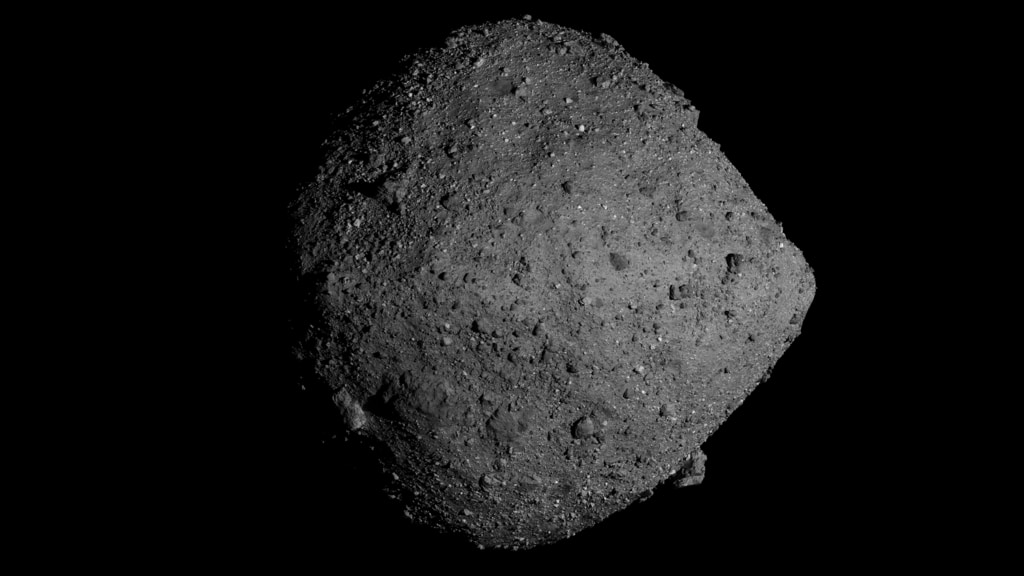
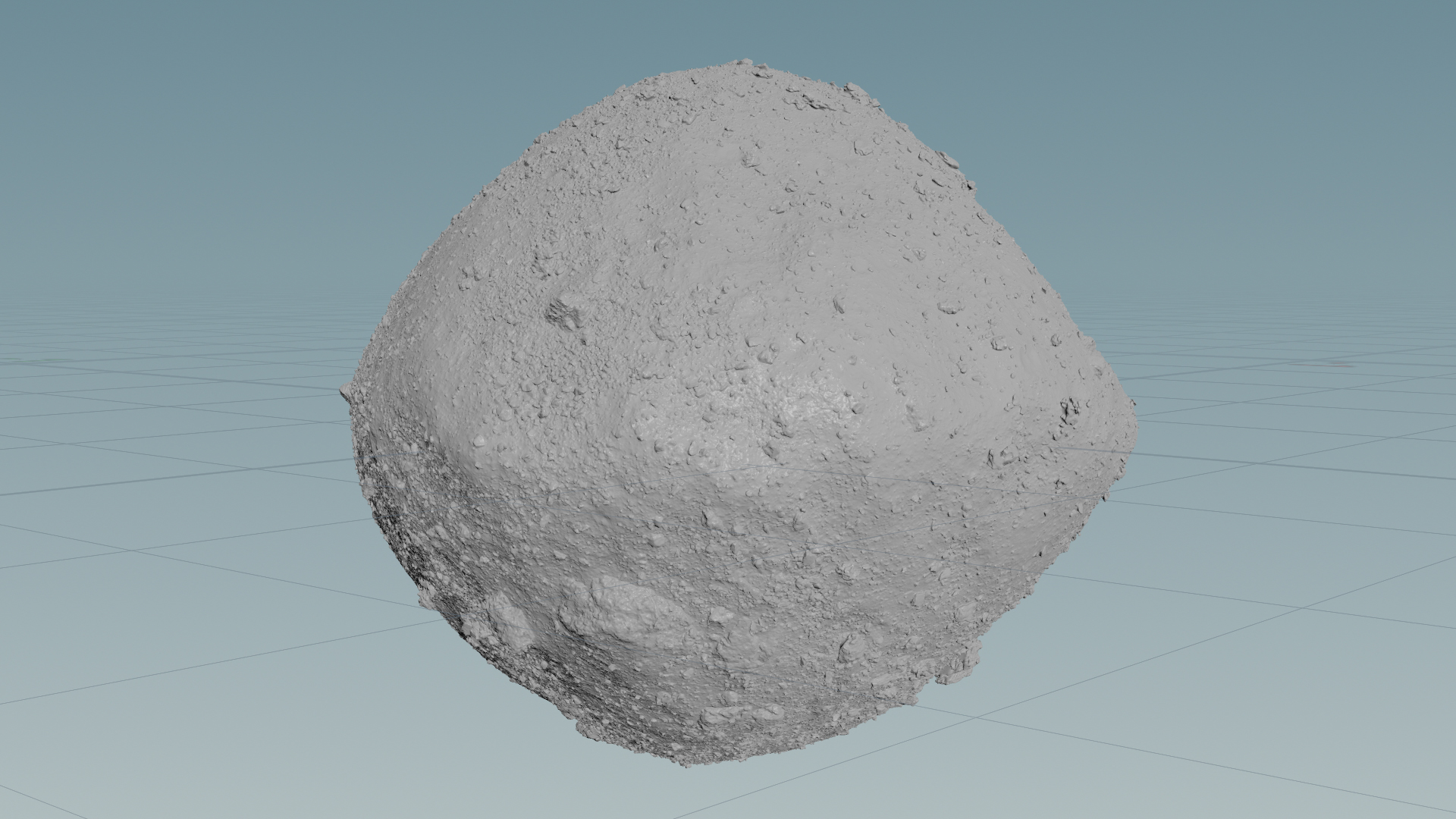
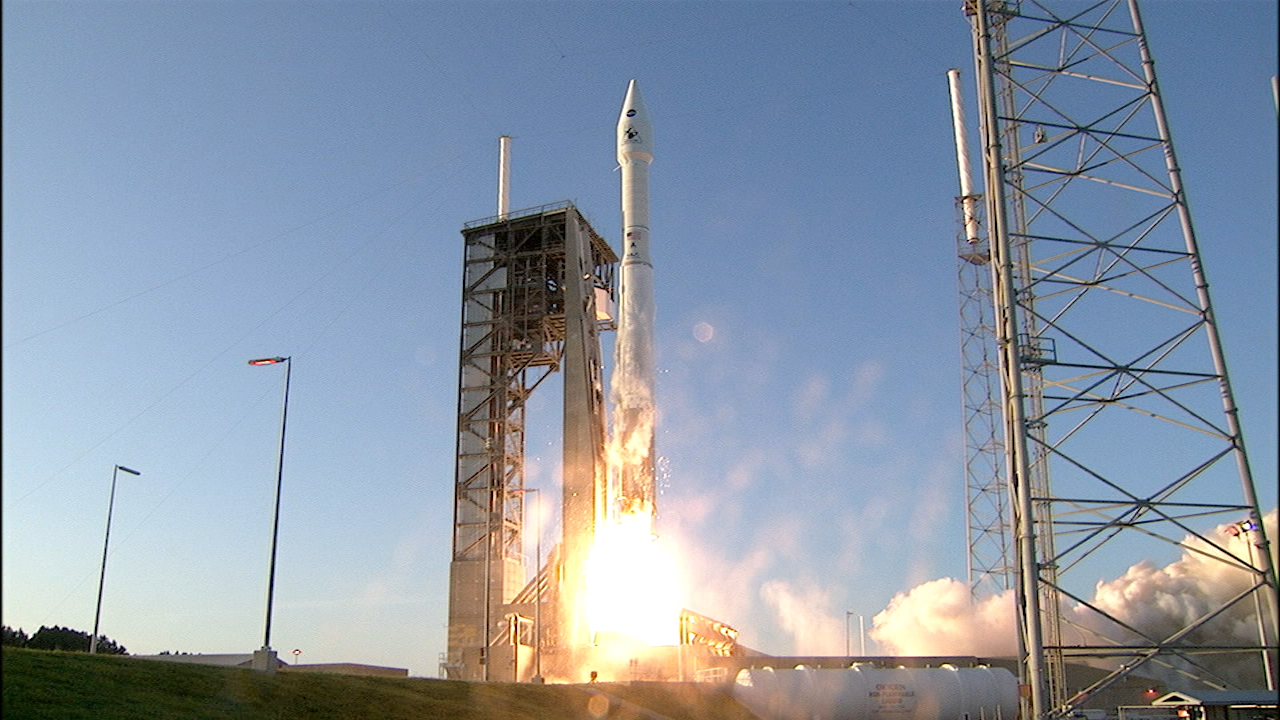
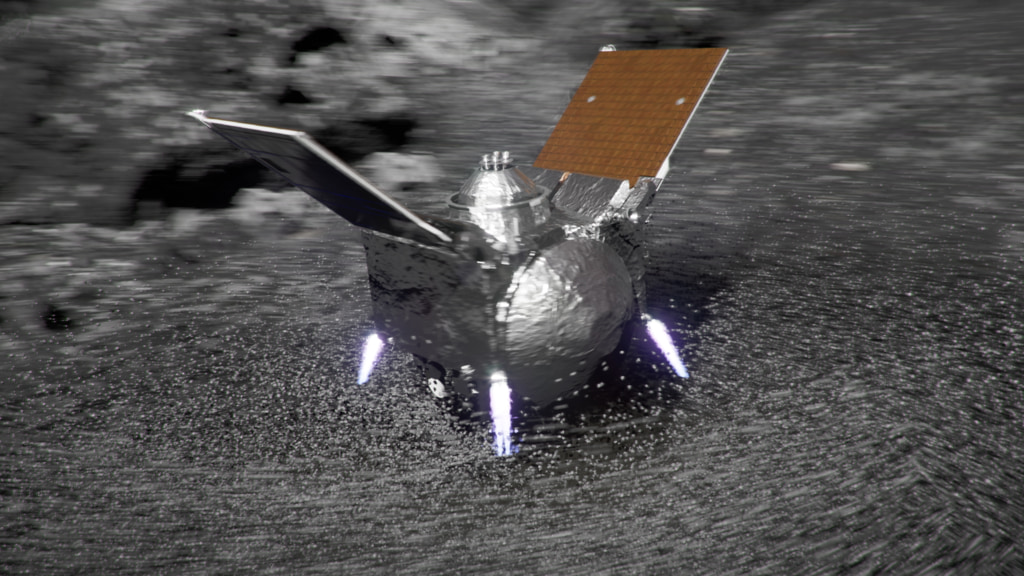
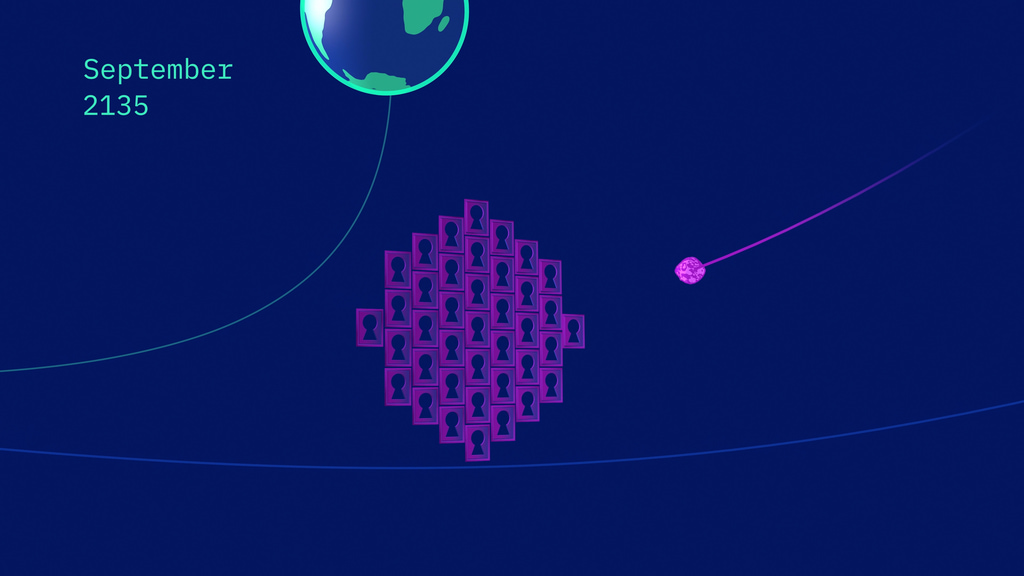
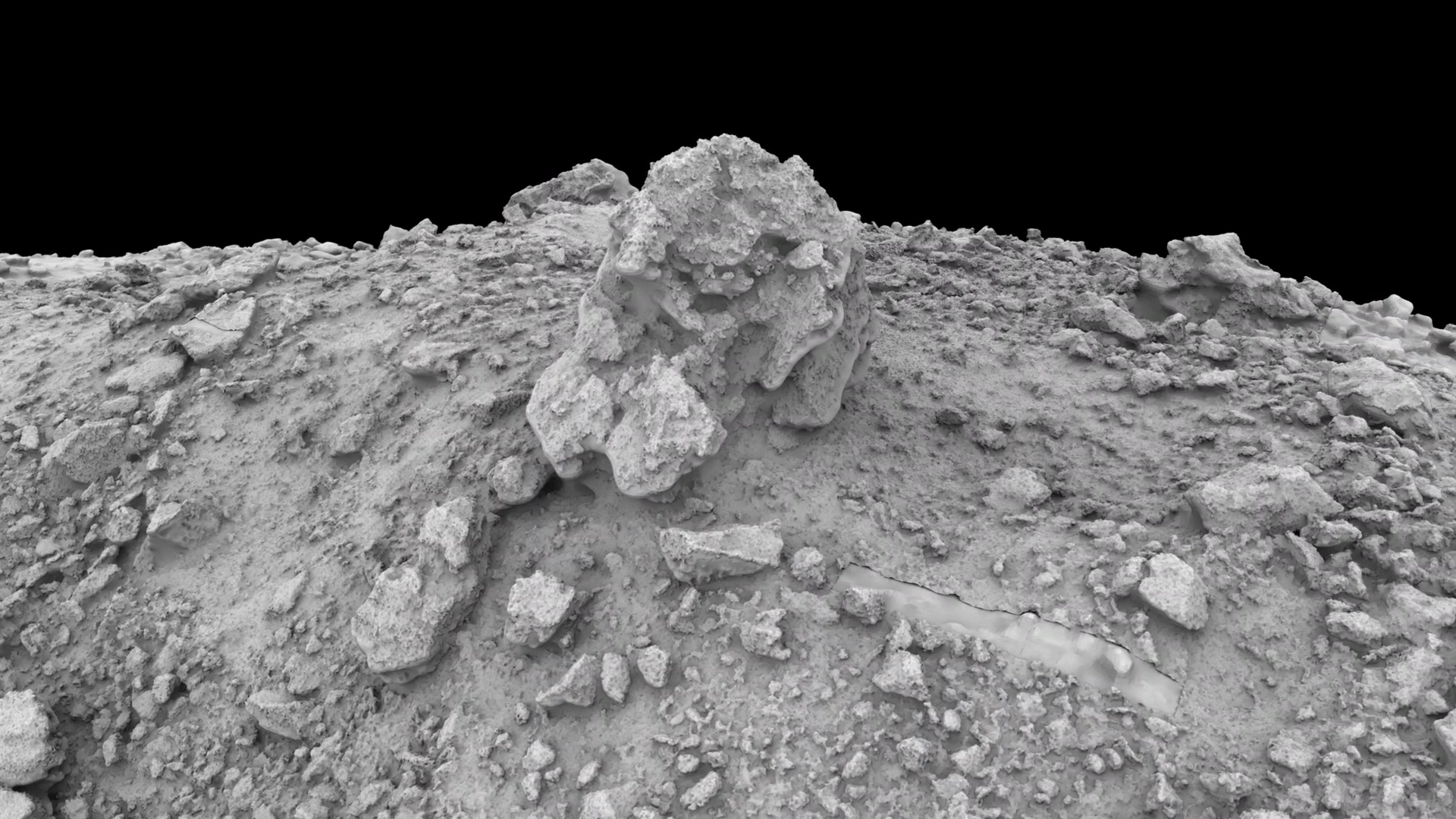
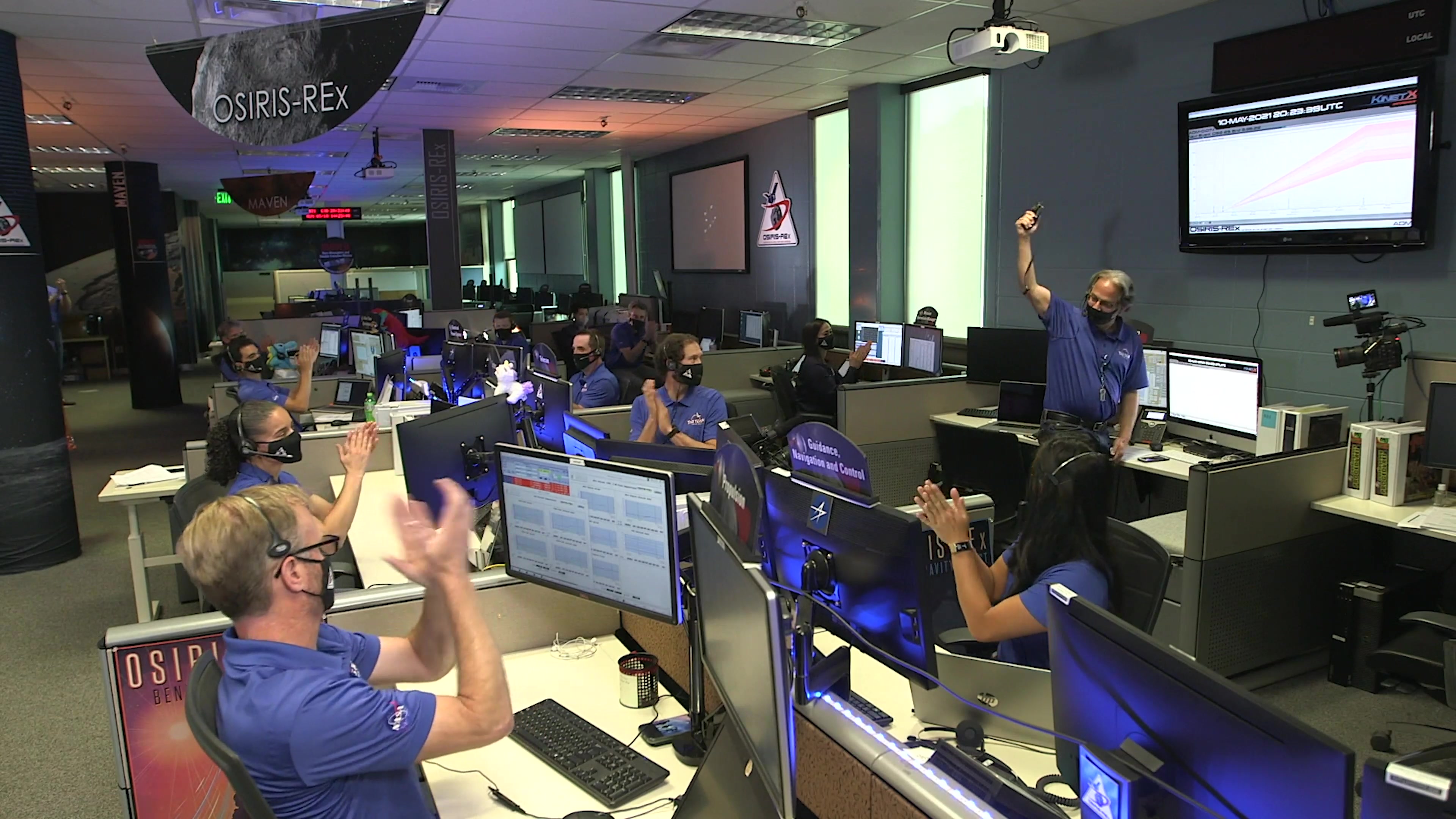
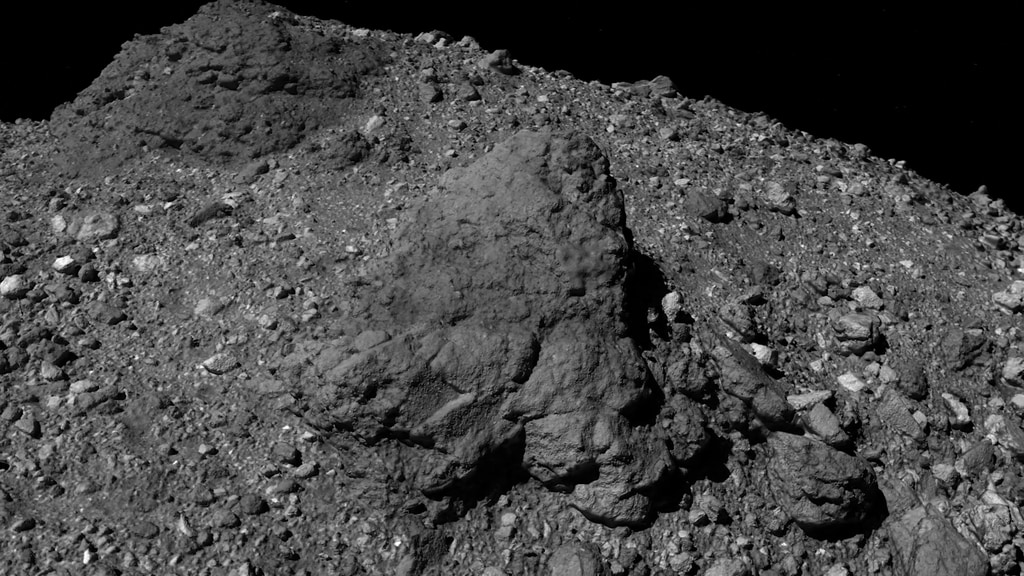
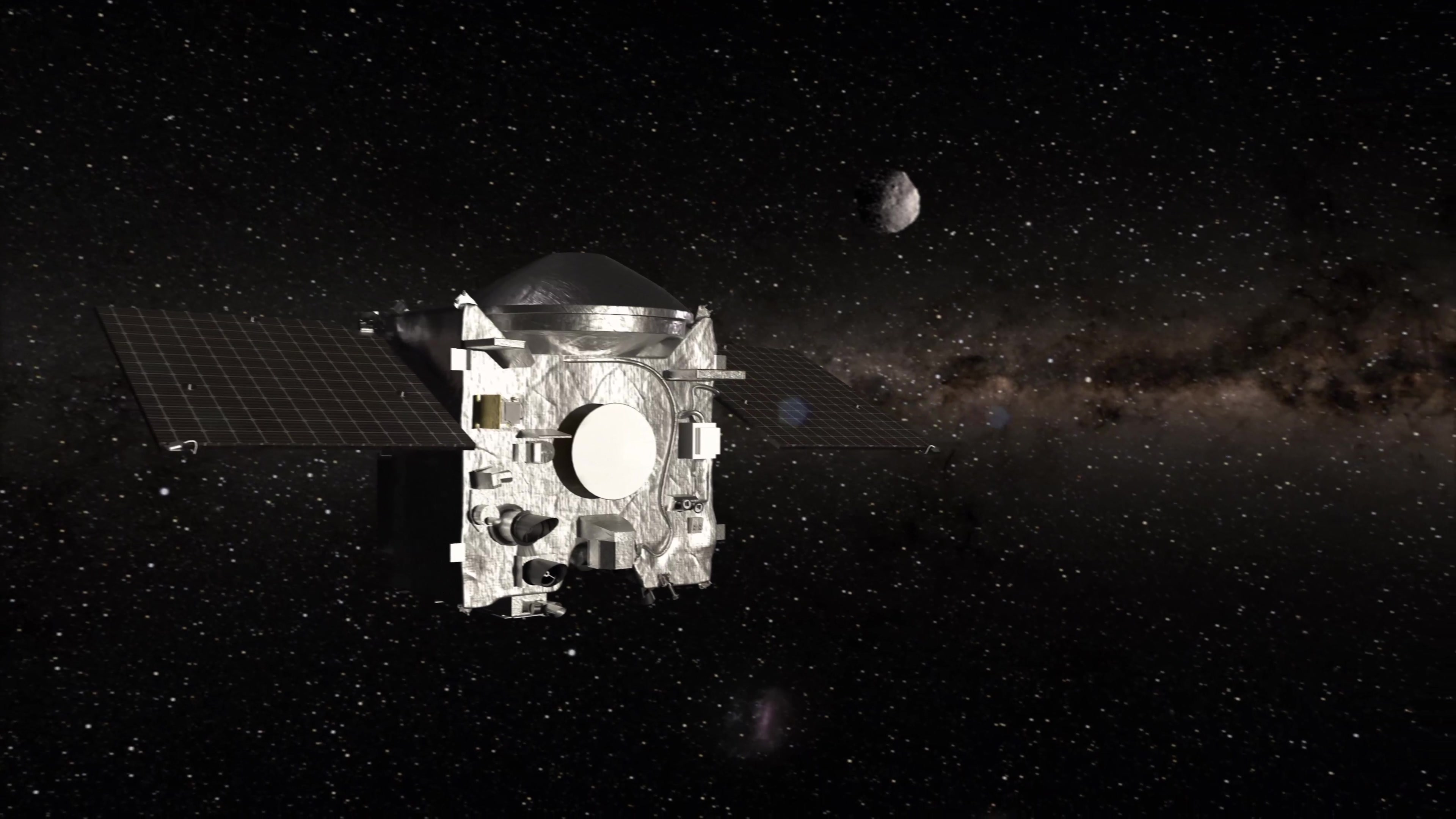
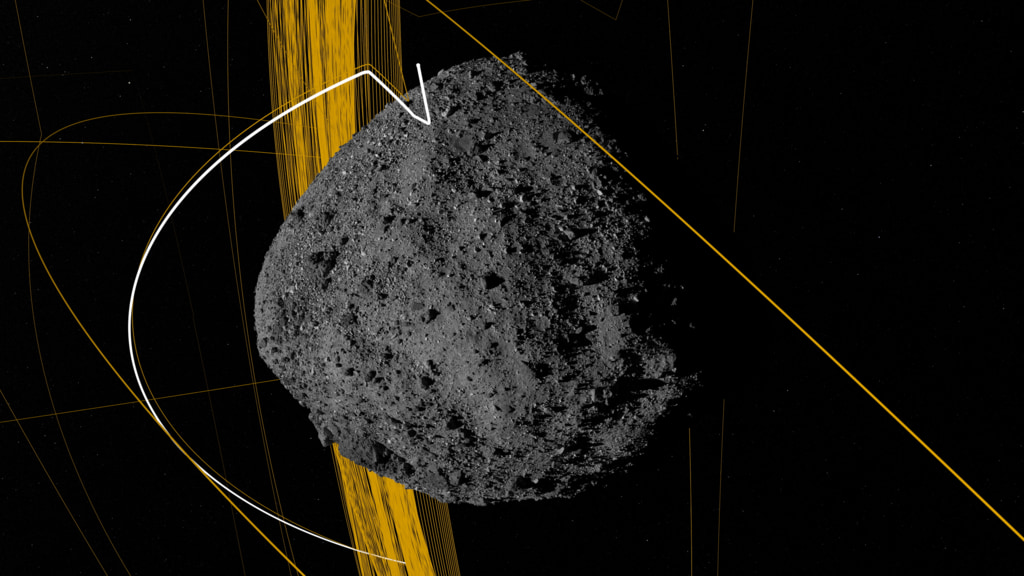
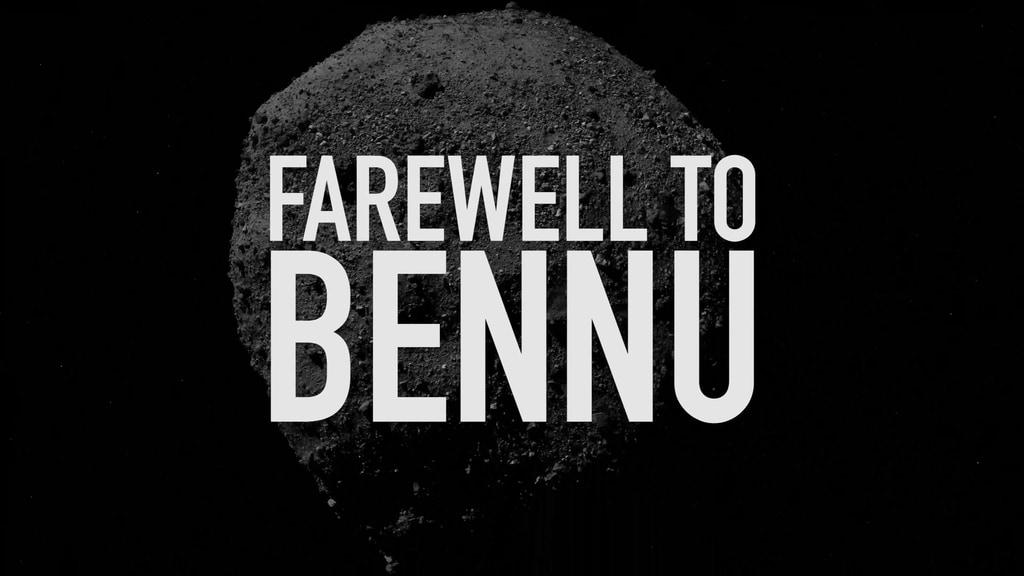


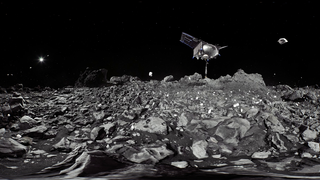
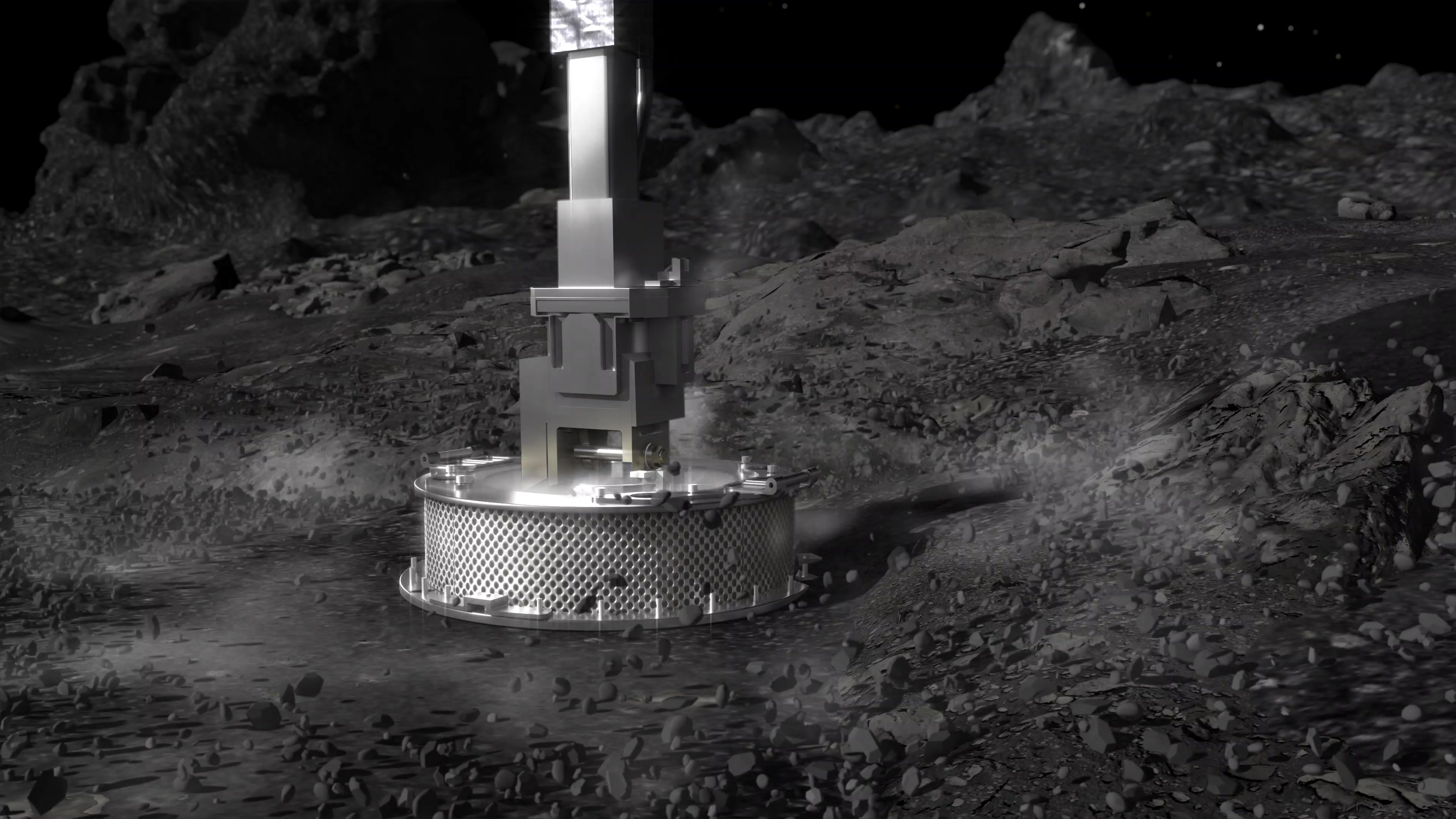
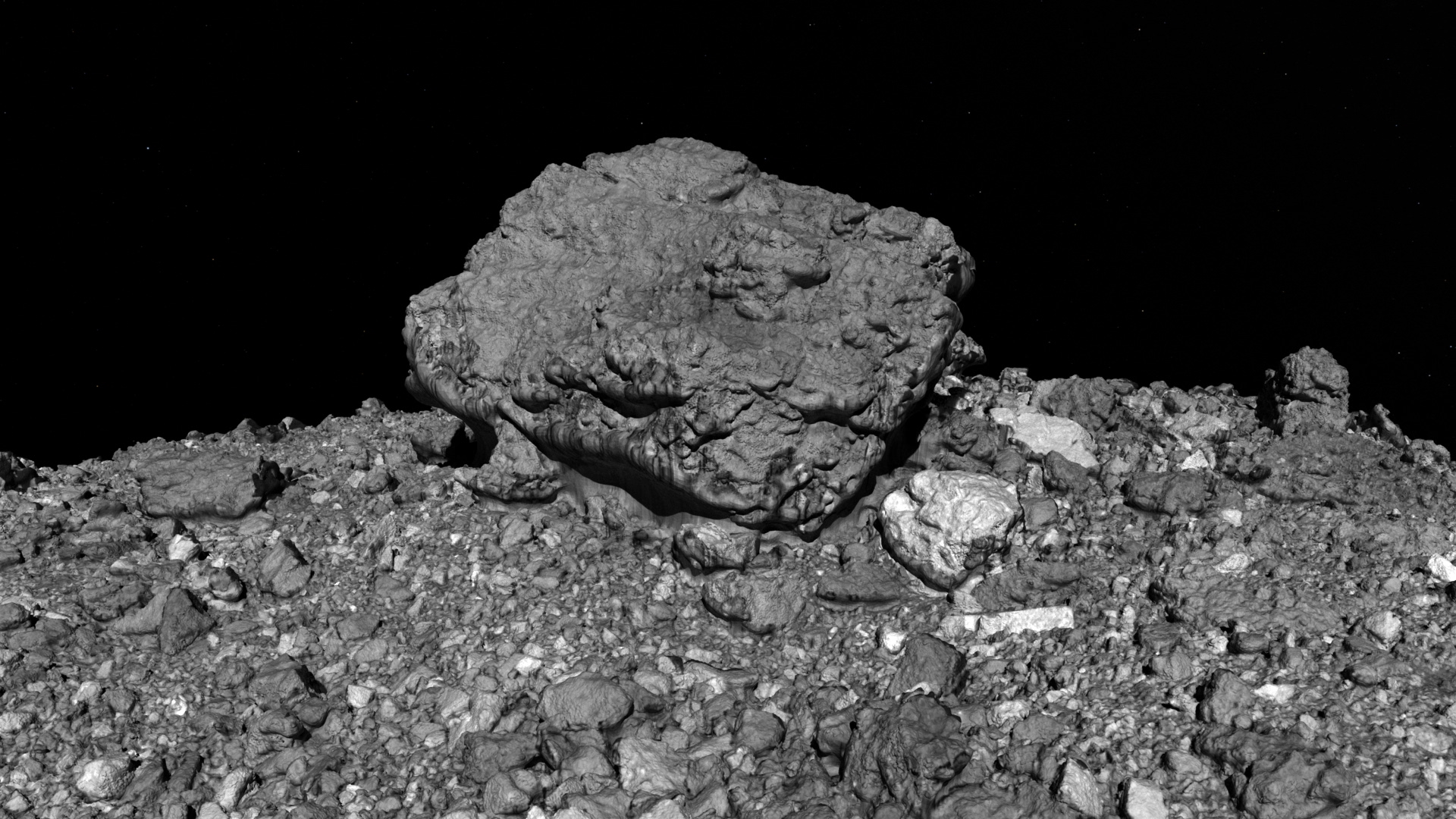
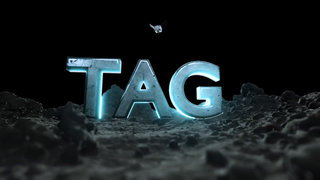
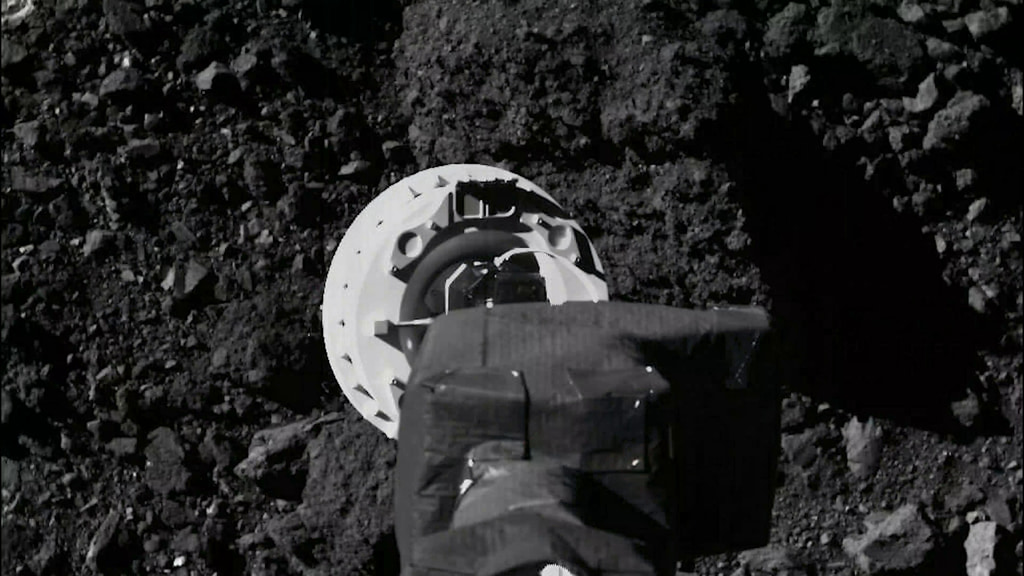
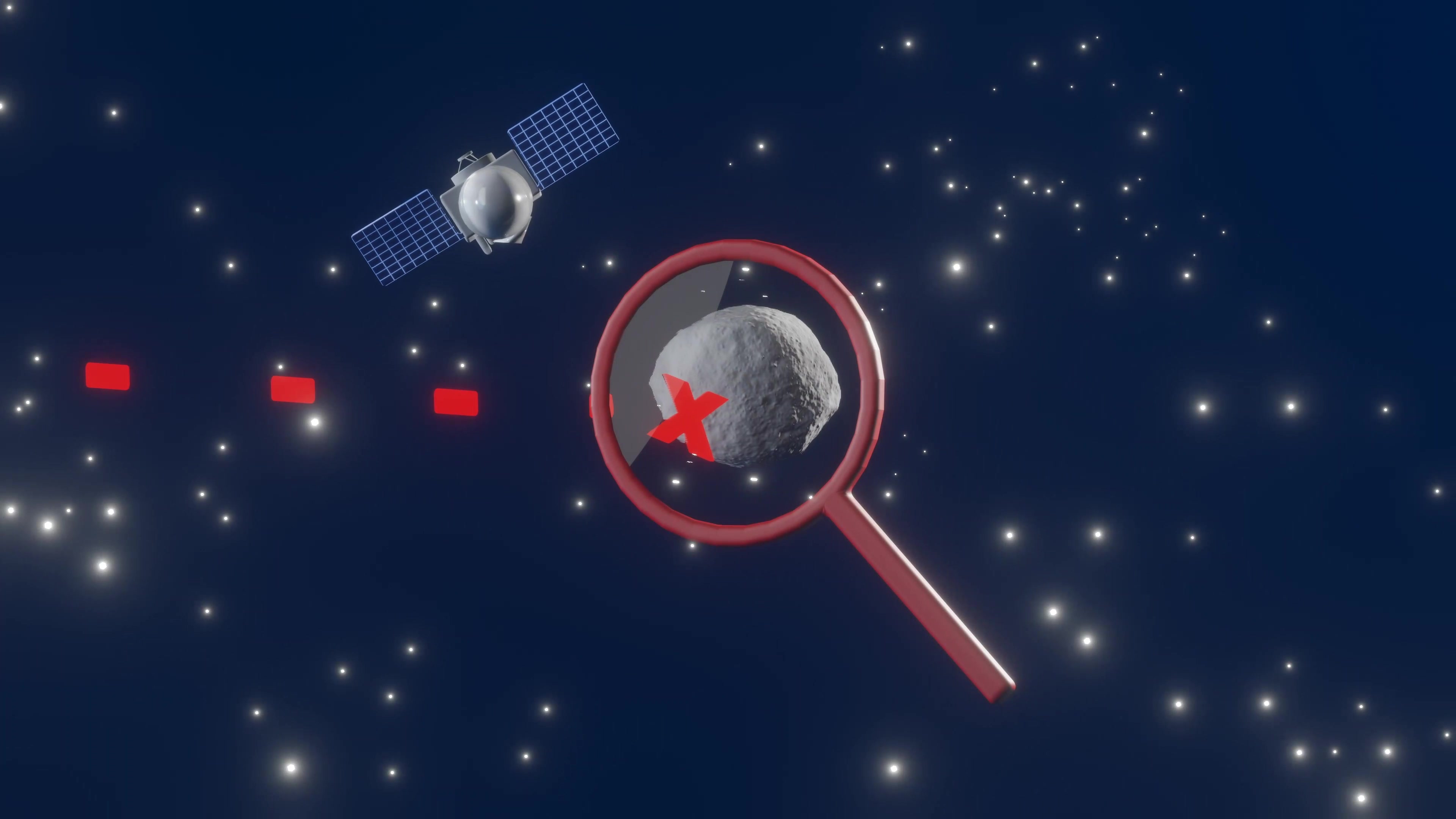
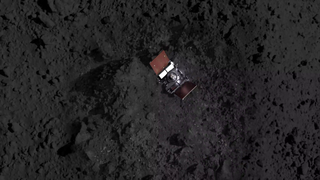
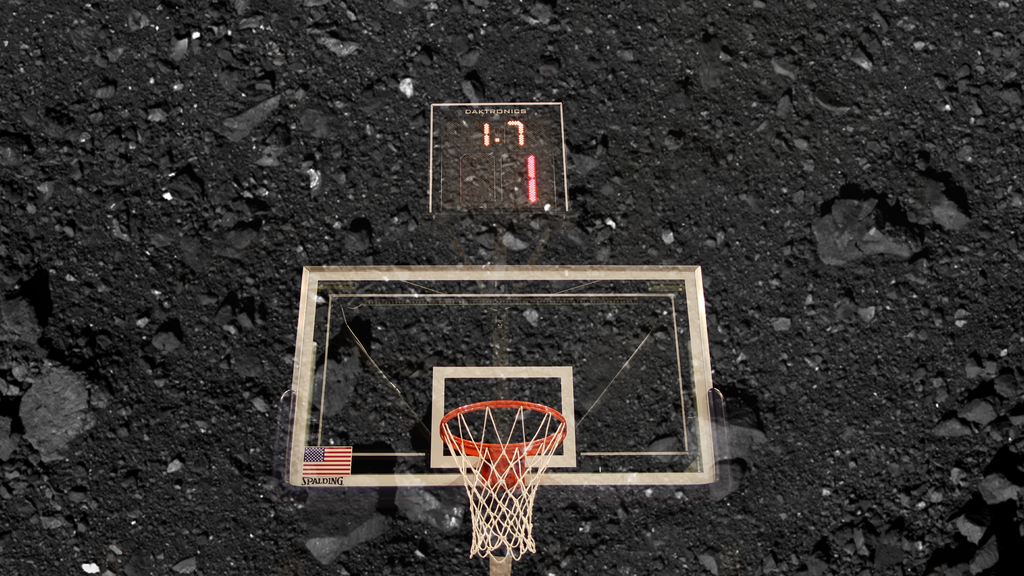
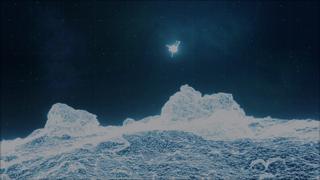
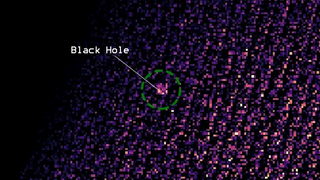
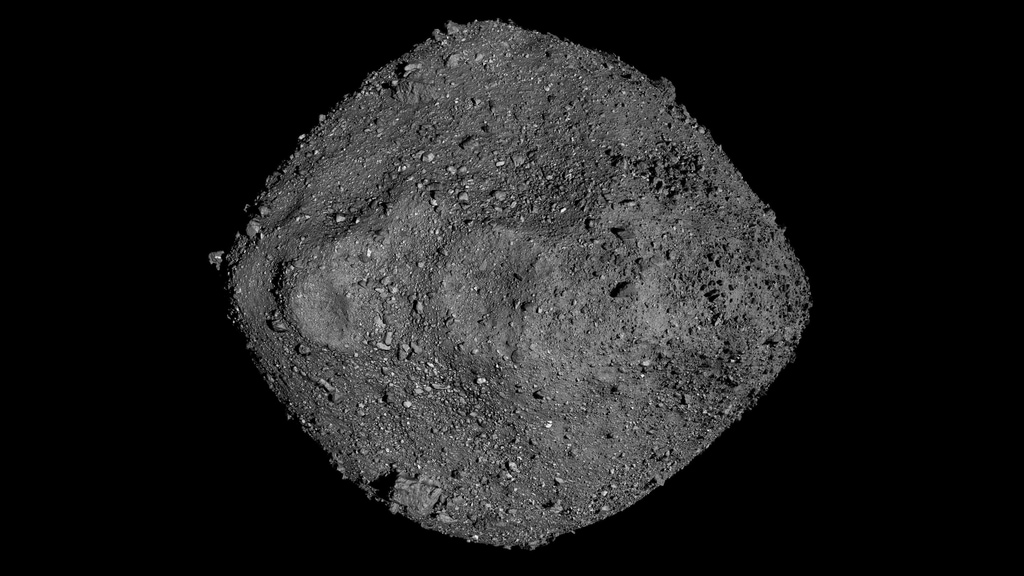
![NASA Science Live: OSIRIS-REx - X Marks the Spot [Episode 13]Air Date: December, 12, 2019Watch this video on the ScienceAtNASA YouTube channel.](/vis/a010000/a013500/a013504/NSL_ep13_still_print.jpg)
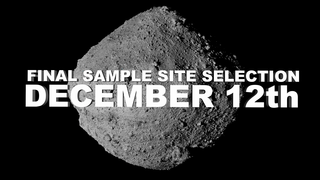
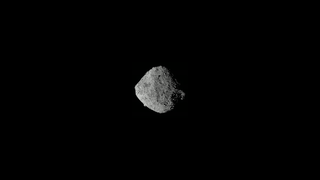

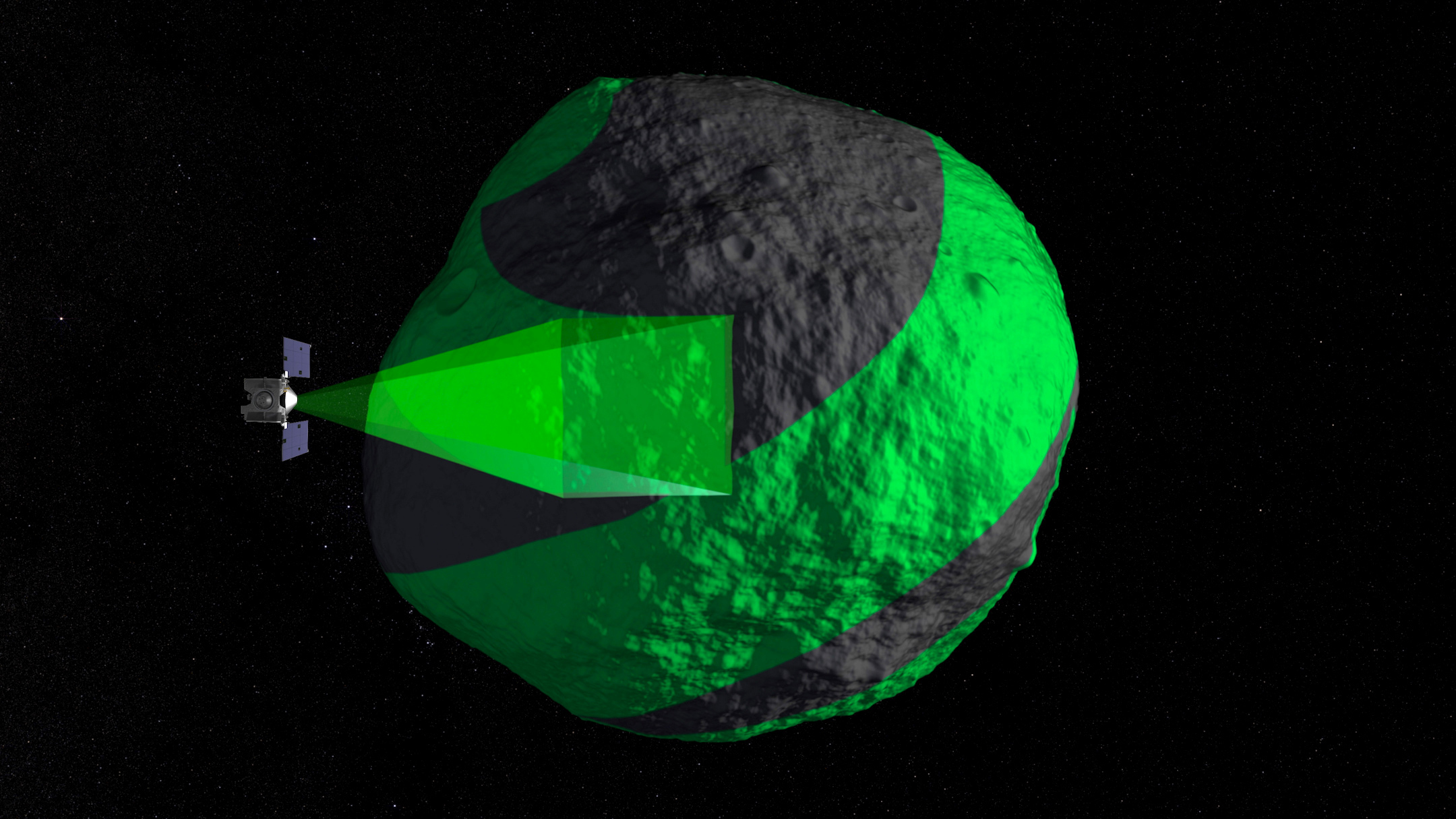

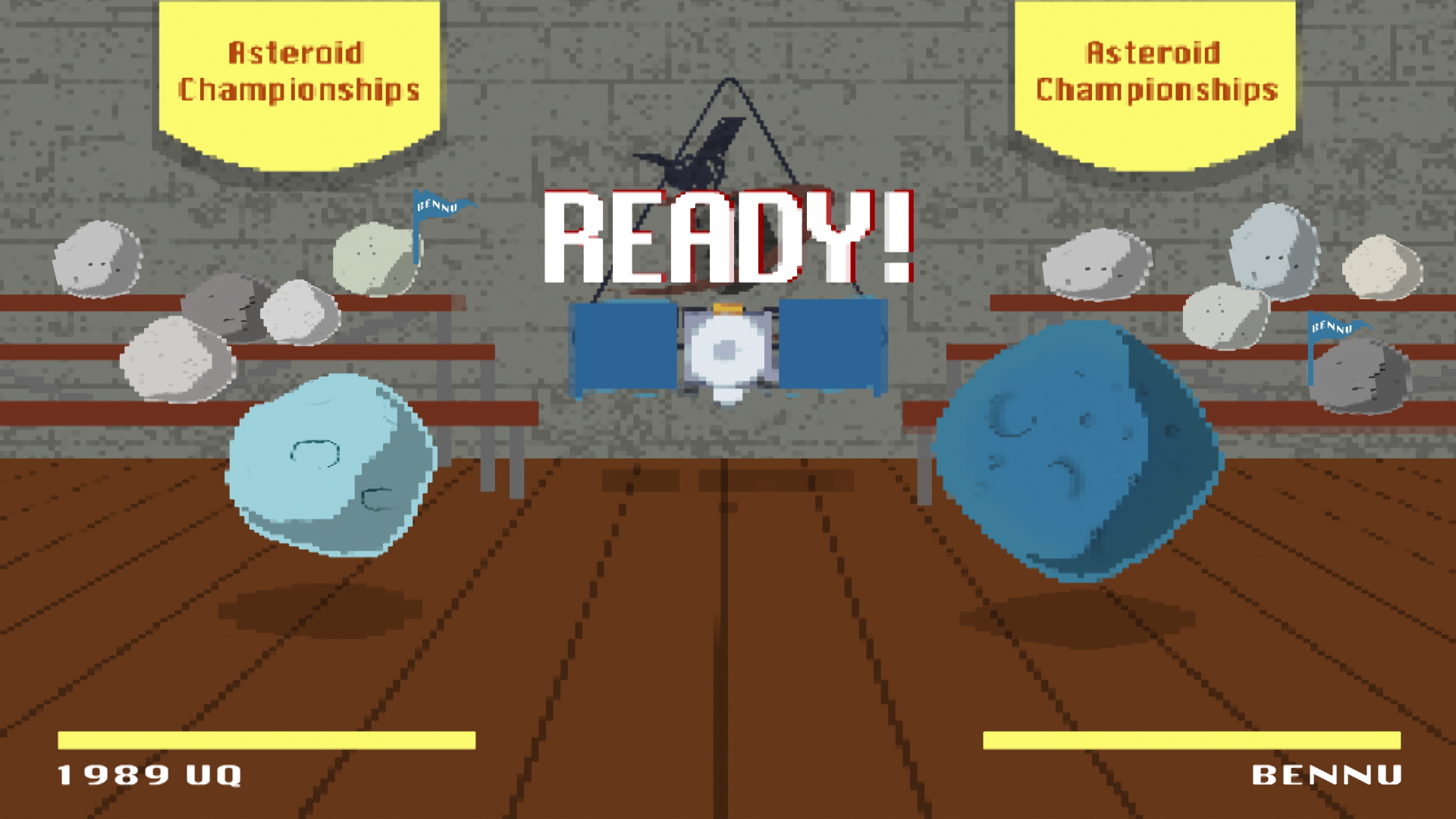
![Hosted video YouTube versionWatch this video on the NASA Goddard YouTube channel.Music credits:"Memorized" by Camille Ballon [SACEM]; KTSA Publishing SACEM; Gum Tapes; Killer Tracks Production Music"City Dreams" by Roberto Briot [SACEM]; KTSA Publishing SACEM; Gum Tapes; Killer Tracks Production Music"Sjungande Faglar" by Thomas Didler [SACEM]; KTSA Publishing SACEM; Gum Tapes; Killer Tracks Production Music](/vis/a010000/a013000/a013051/orex_approach_hosted_YT_thumbnail.jpg)
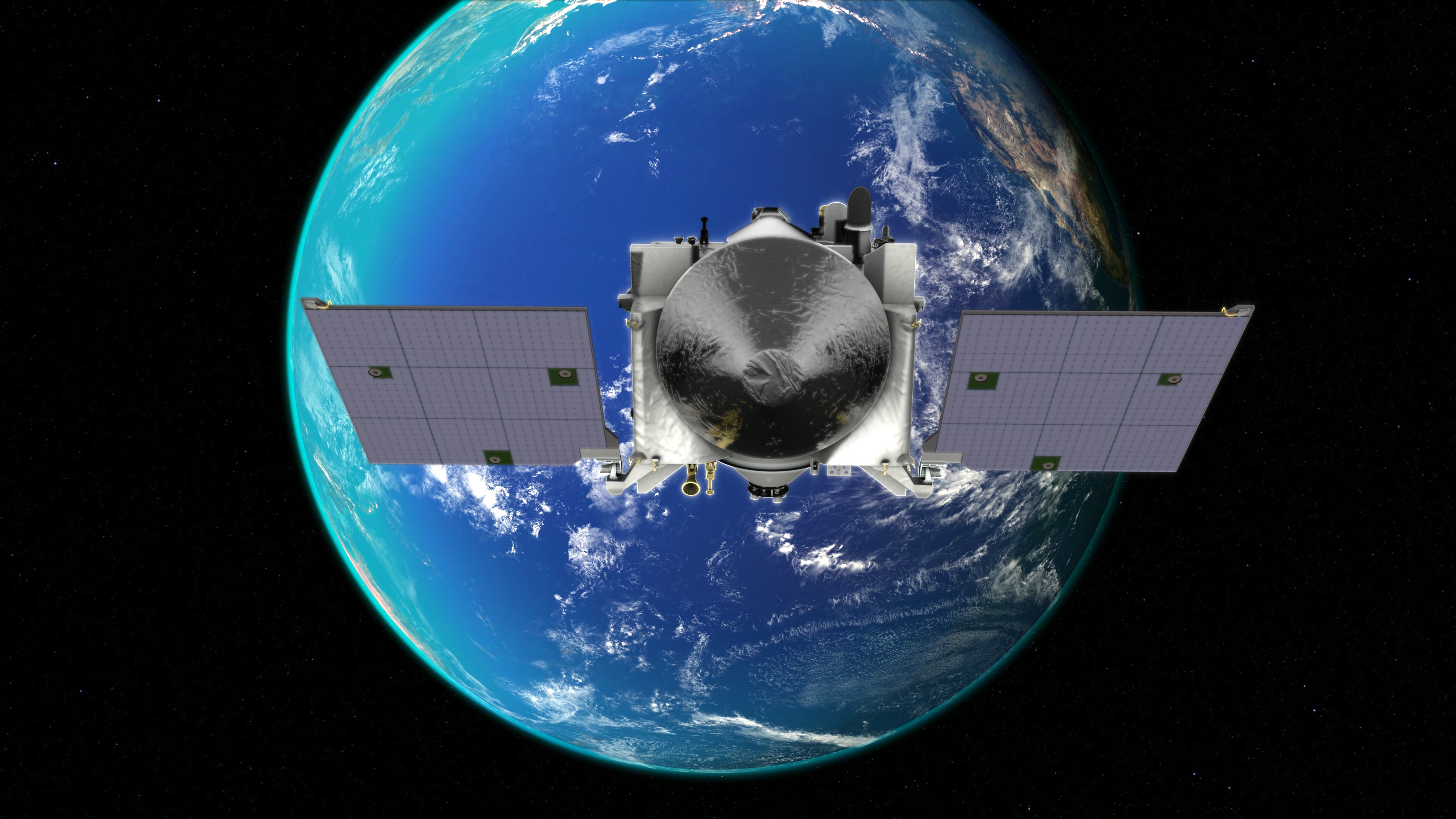
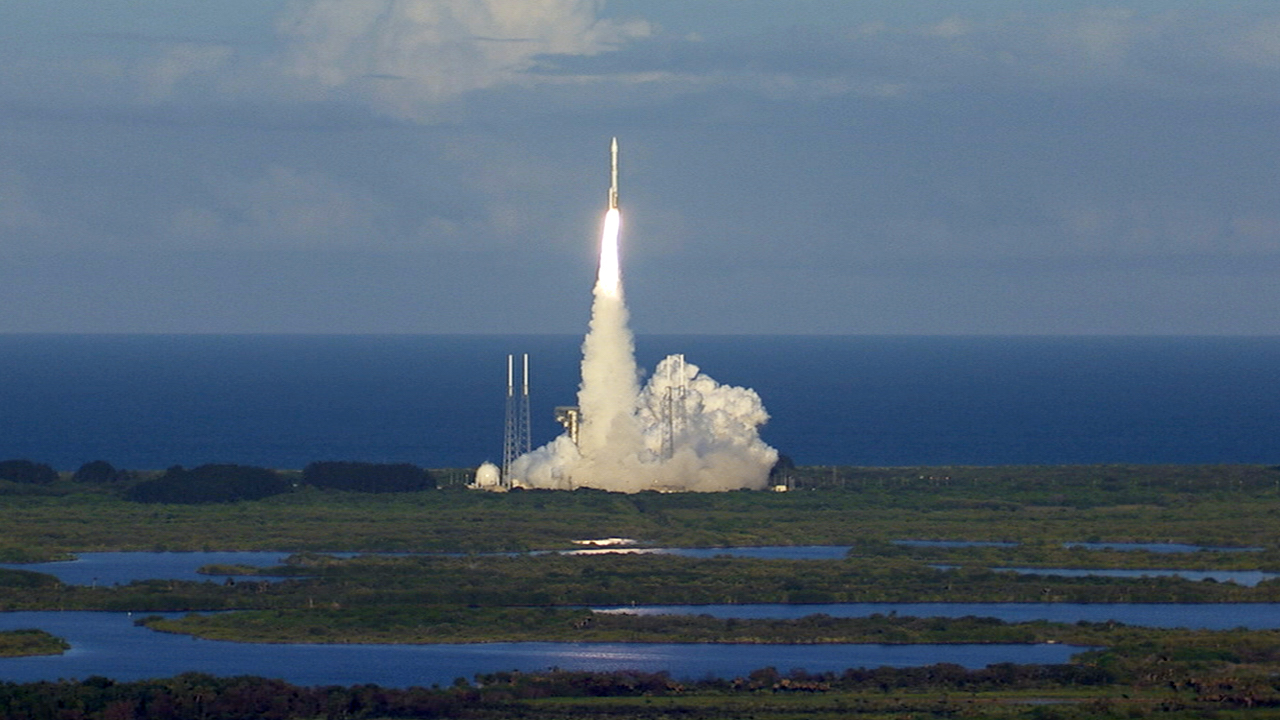
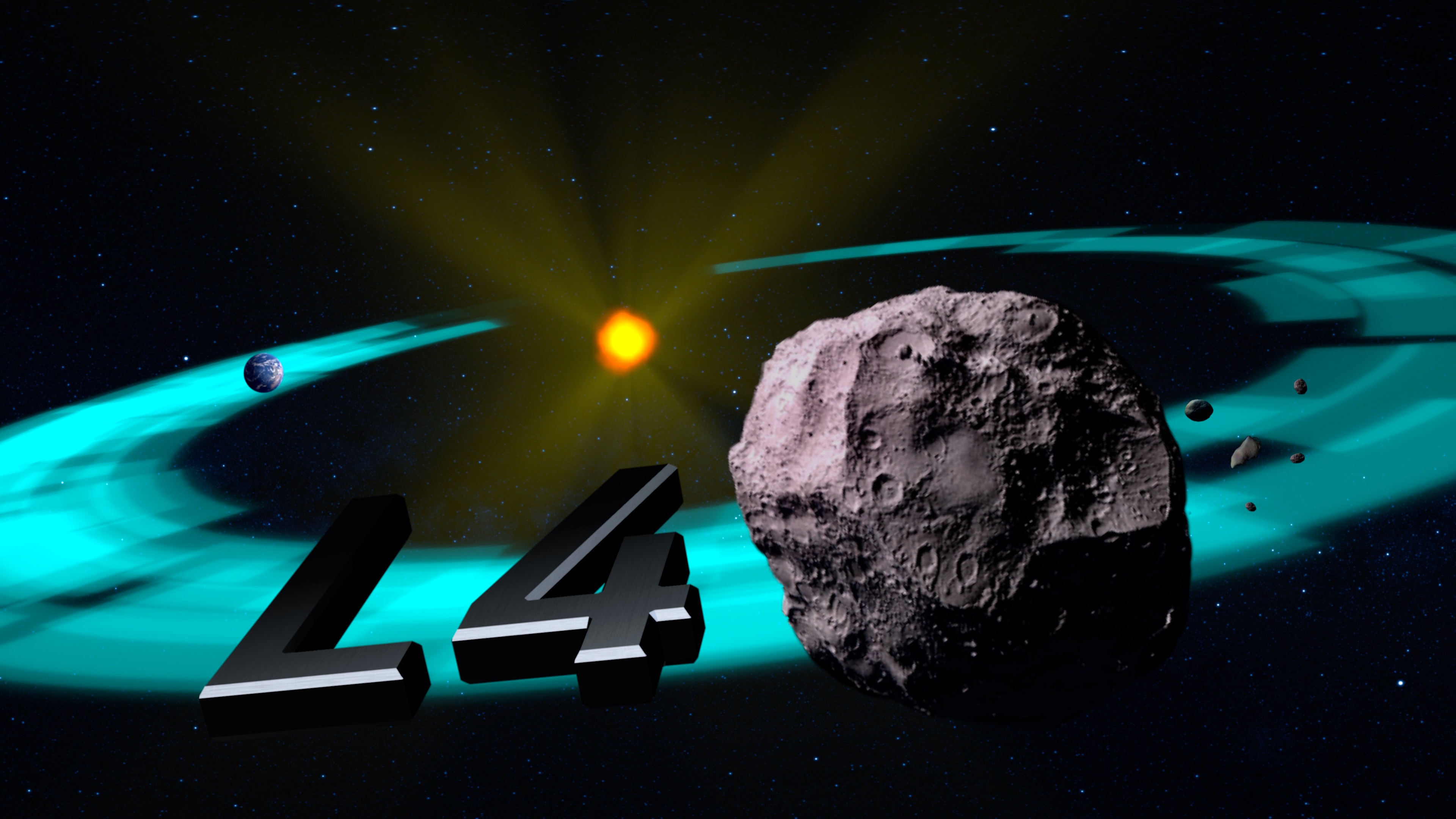
![Music credit: "In the Bag" by Rob Bagshaw [PRS]; Sound Pocket Music; Killer Tracks Production Music](/vis/a010000/a012300/a012368/osiris_launch_thumbnail.png)
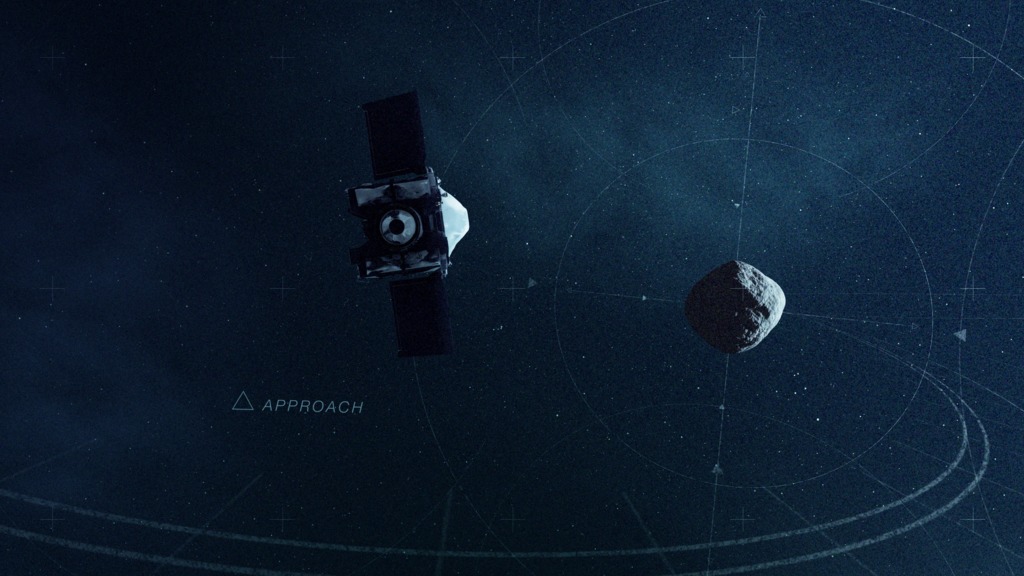
![To Bennu and BackMusic credits: "Defenders of the Earth" and "Finding Gaia" by Daniel Jay Nielson [ASCAP]; Atmosphere Music Ltd PRS; Volta Music; Killer Tracks Production Music](/vis/a010000/a012300/a012360/ToBennuAndBack_thumbnail.jpg)
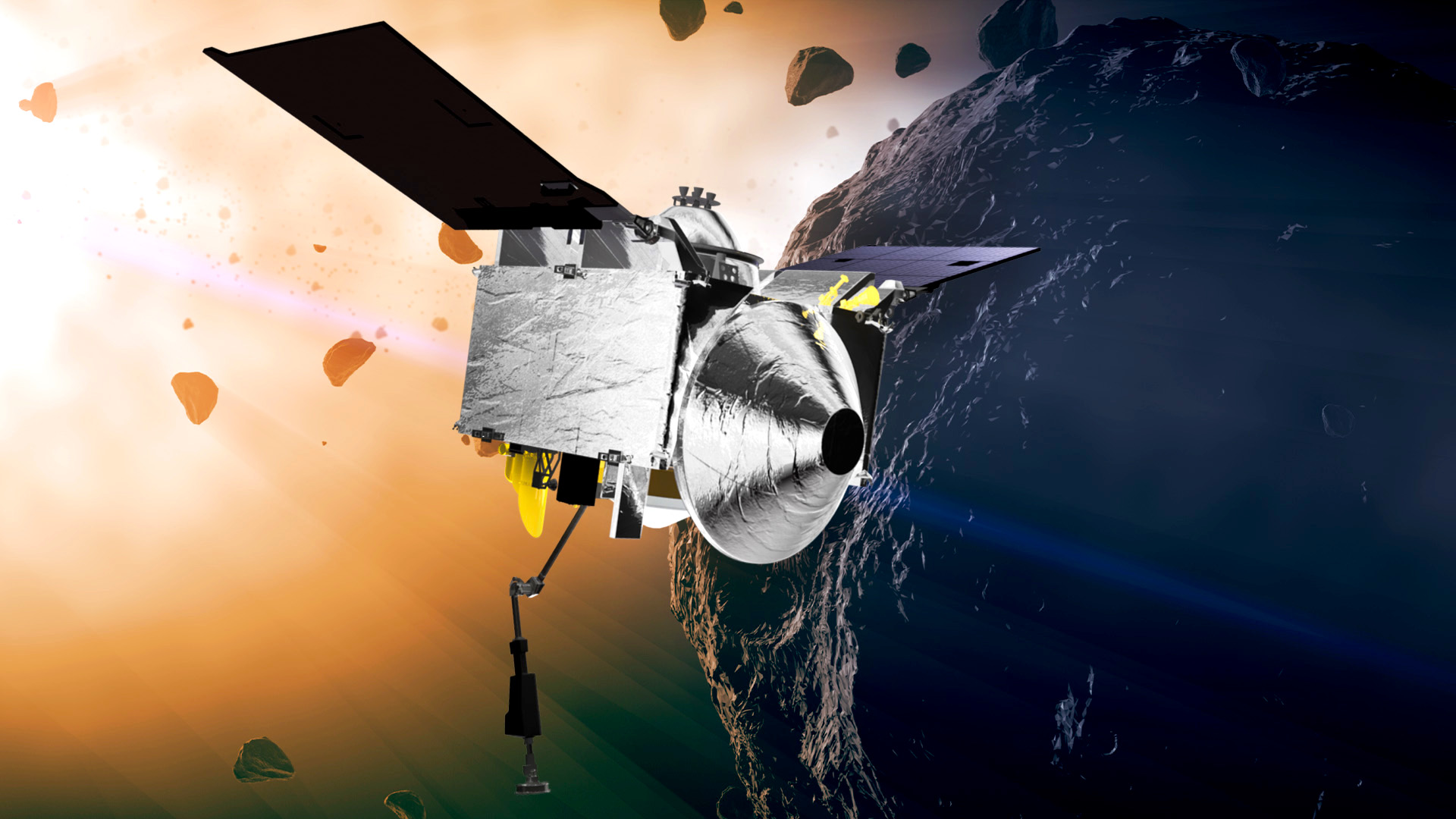
![The OSIRIS-REx camera suite will provide global maps and close-up images of asteroid Bennu, along with information about the carbon-rich asteroid's chemical makeup.This video is available for download in 4k resolution.Watch this video on the NASA Goddard YouTube channel.
Complete transcript available.Music Credits: "Ultimate Question" and "Victory Or Failure" by Guy & Zab Skornik [SACEM]](/vis/a010000/a012400/a012443/OCAMS_Preview_12443.jpg)
